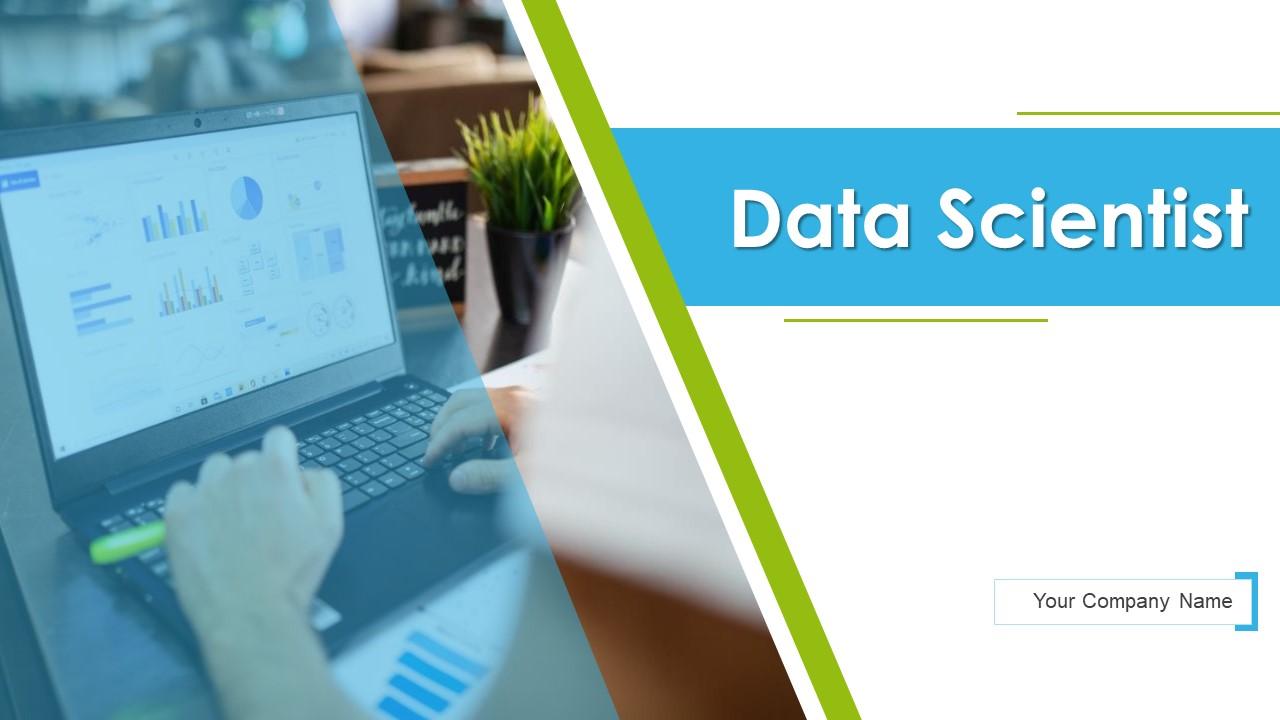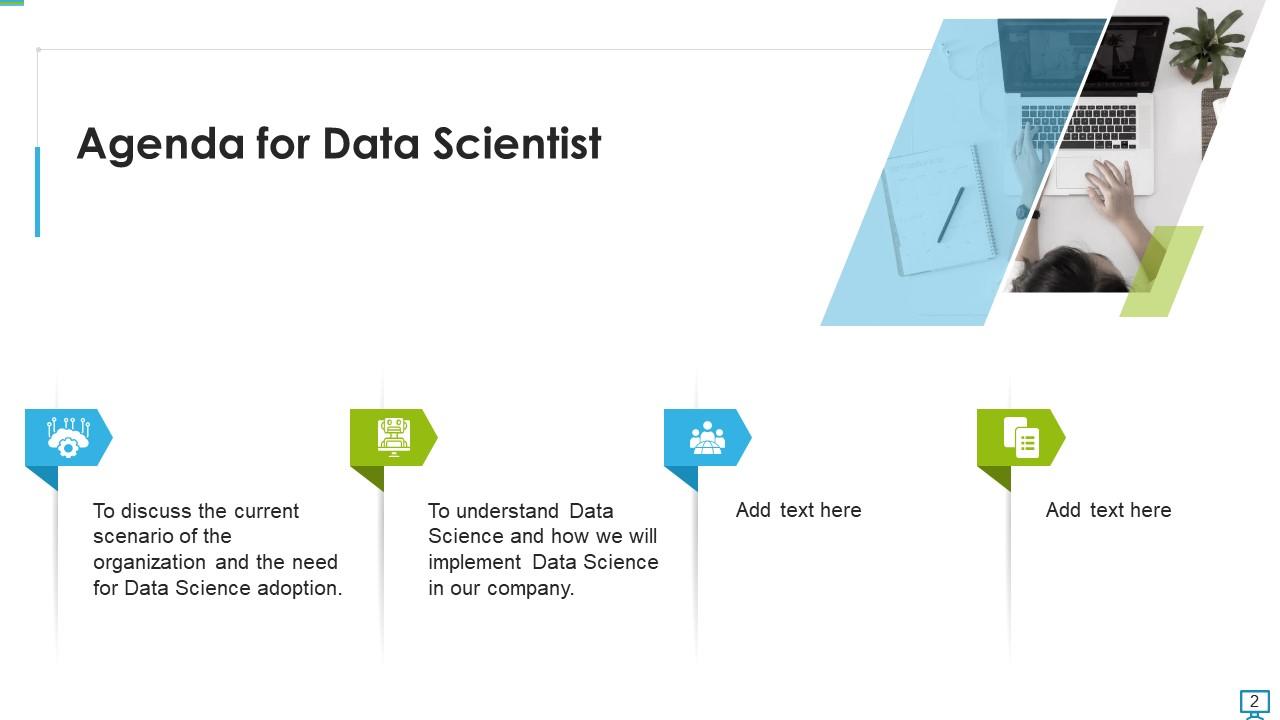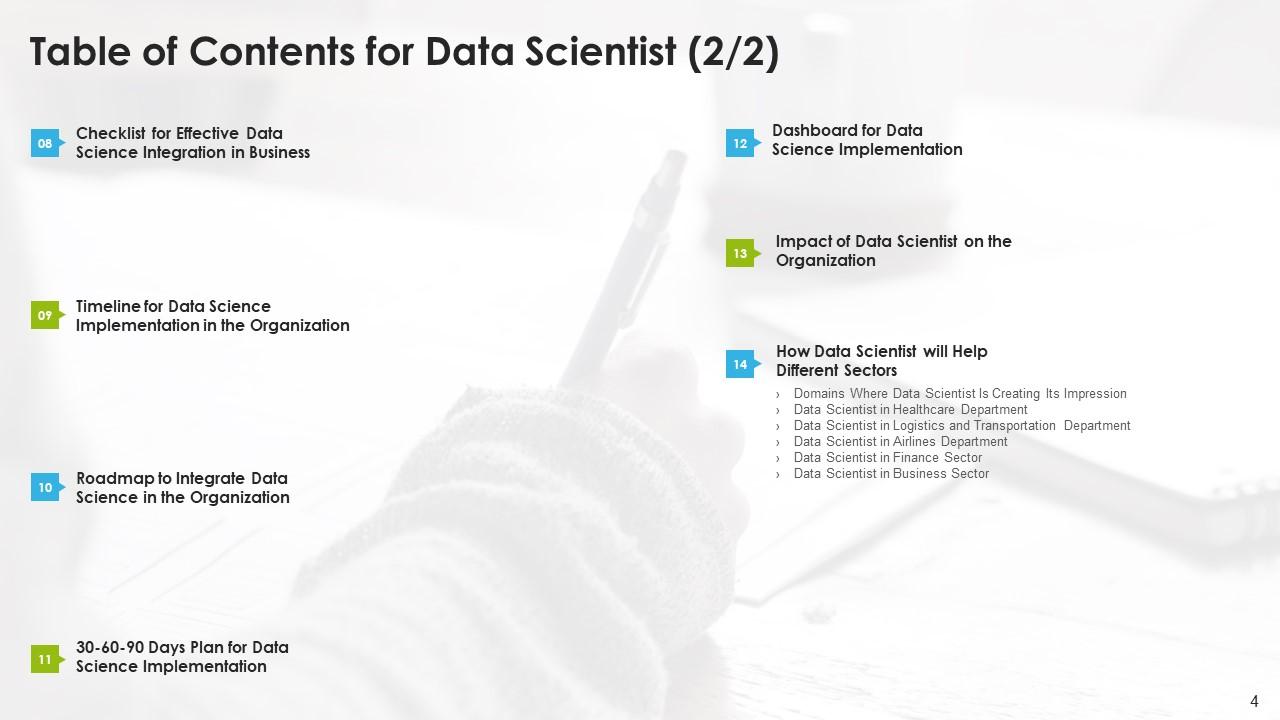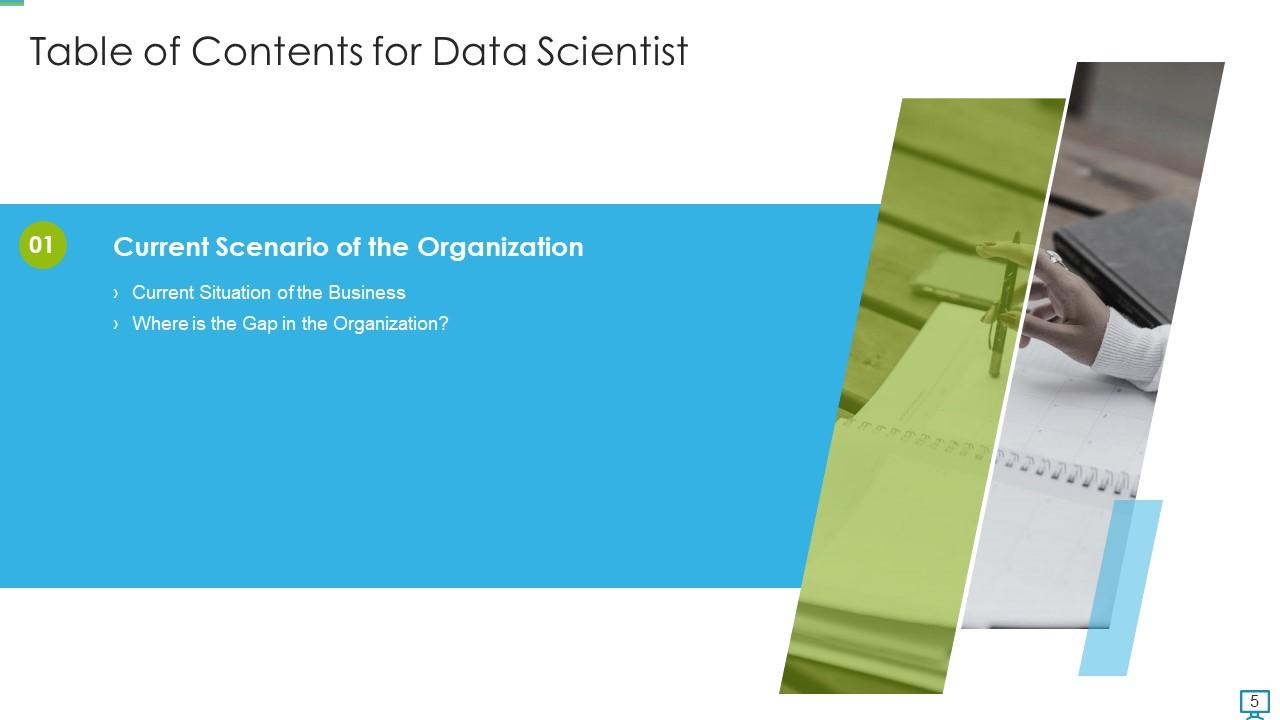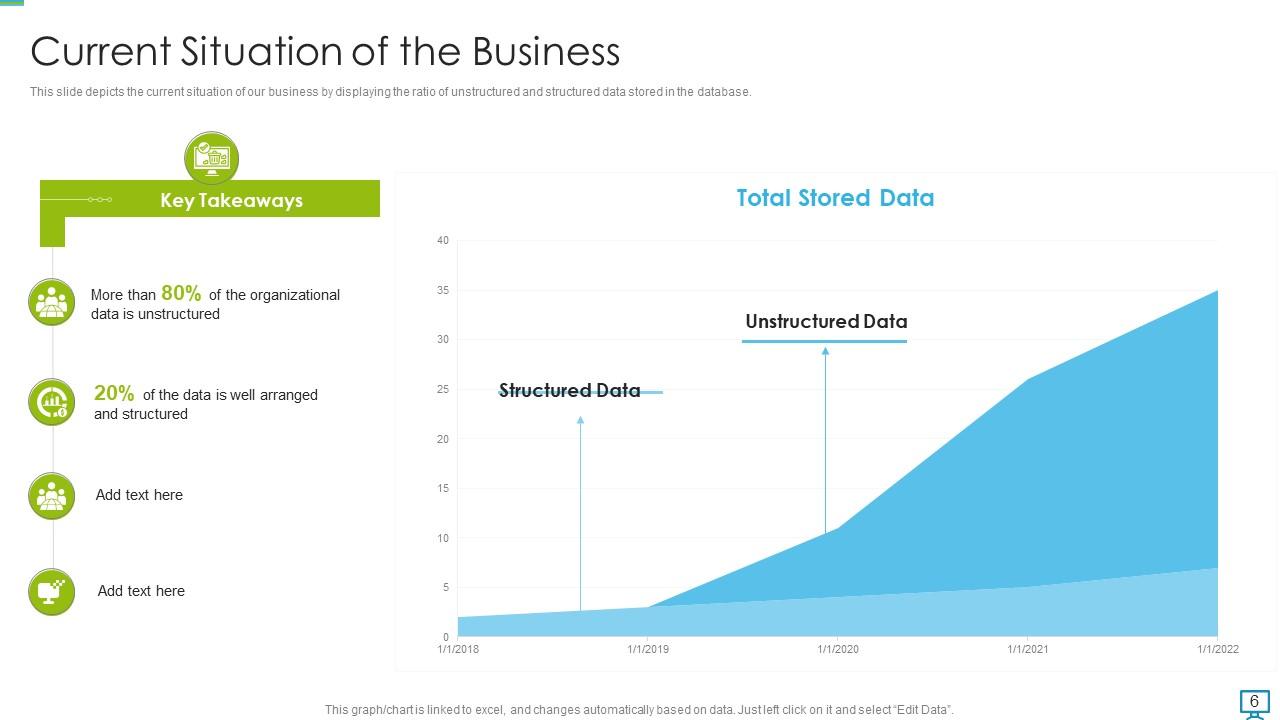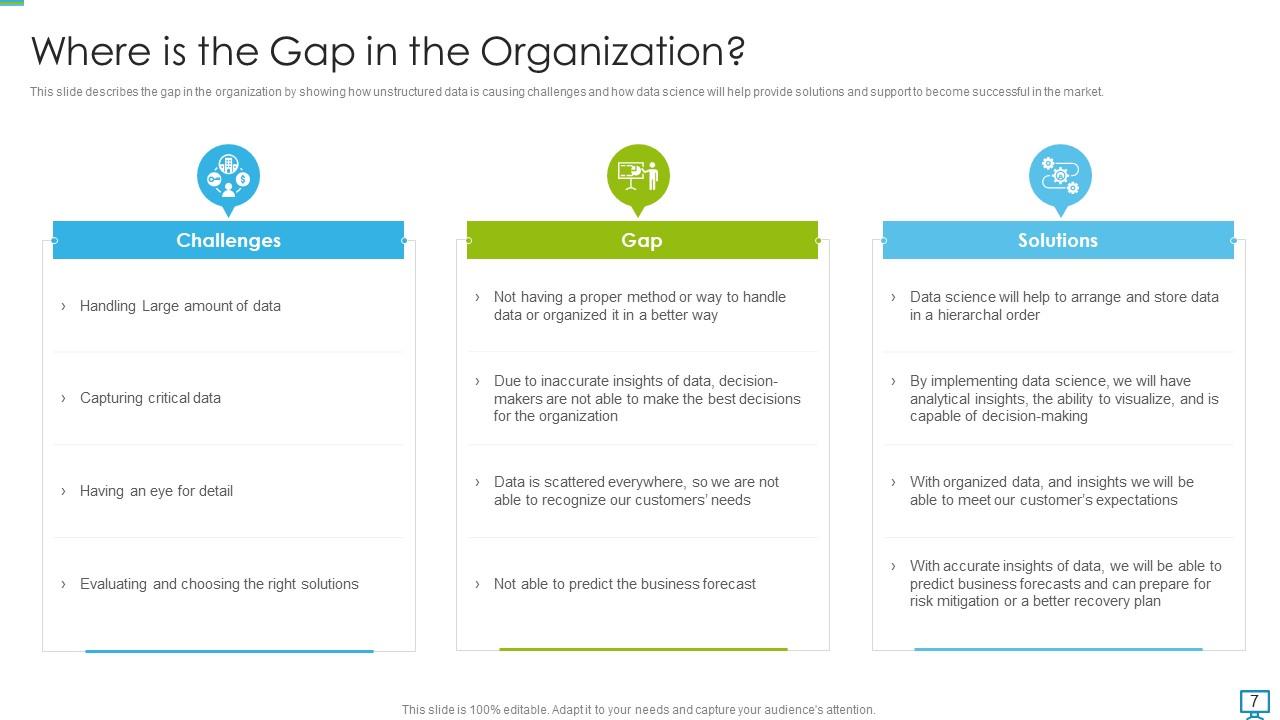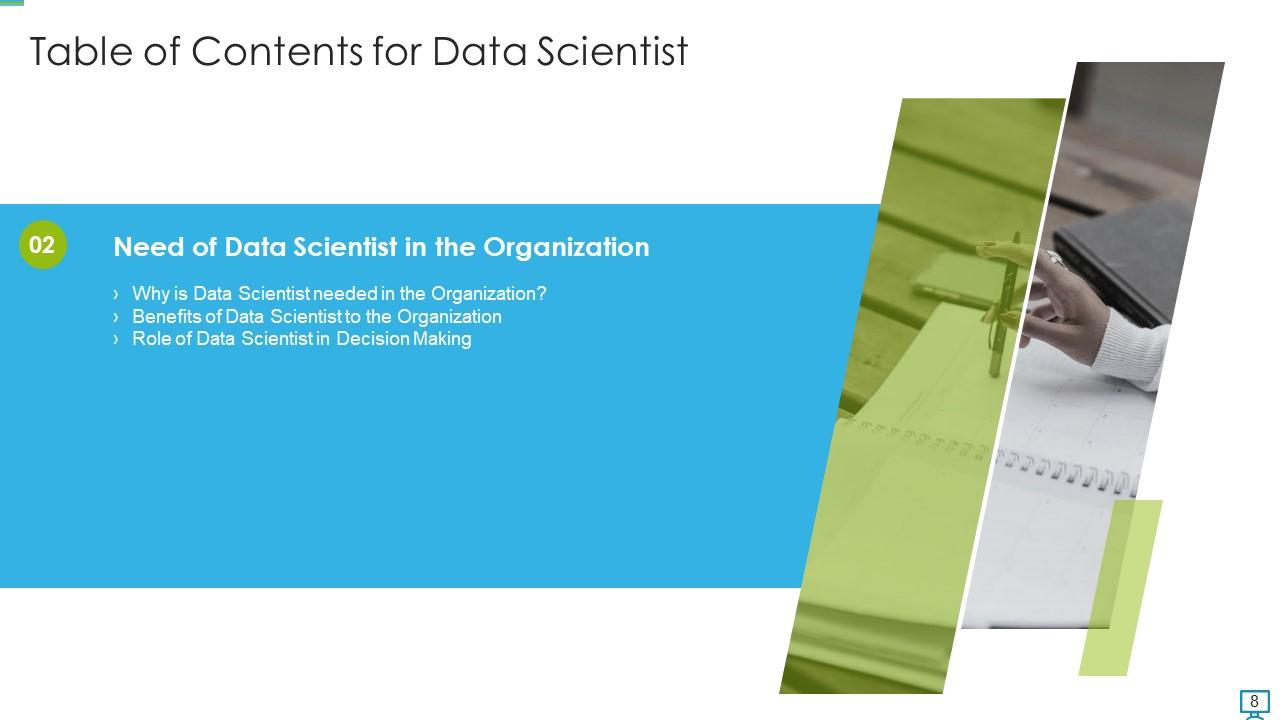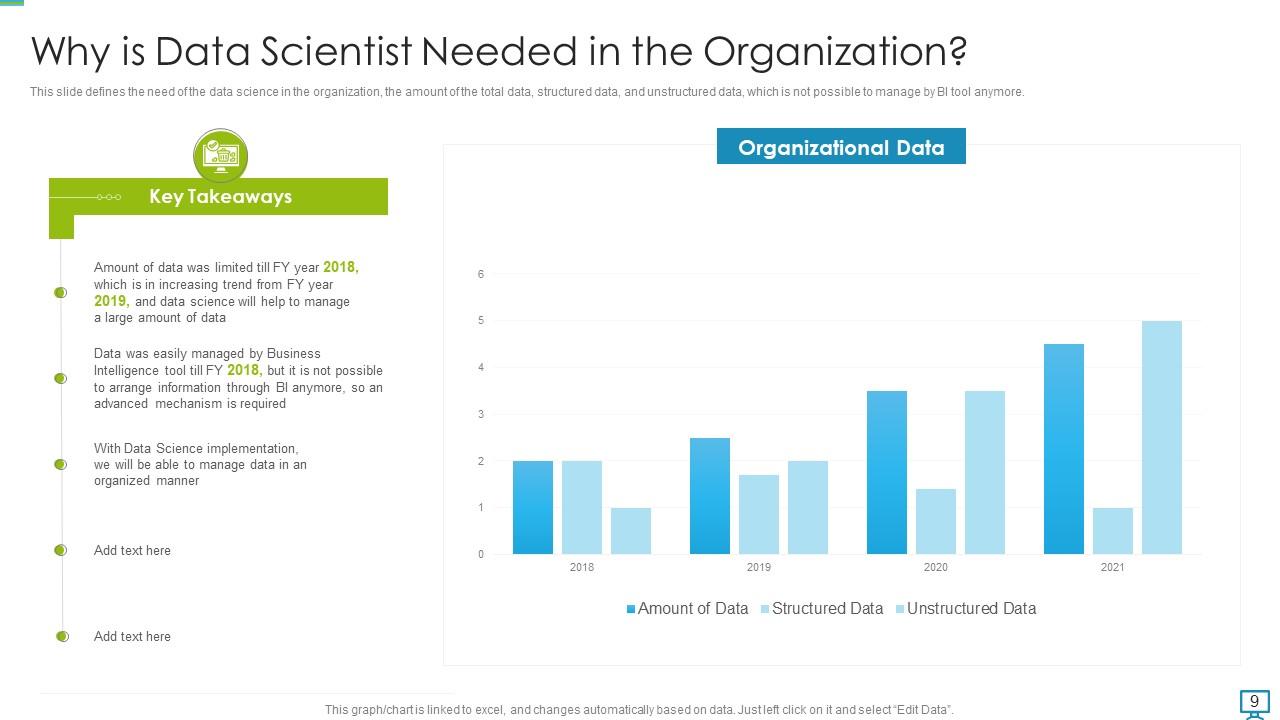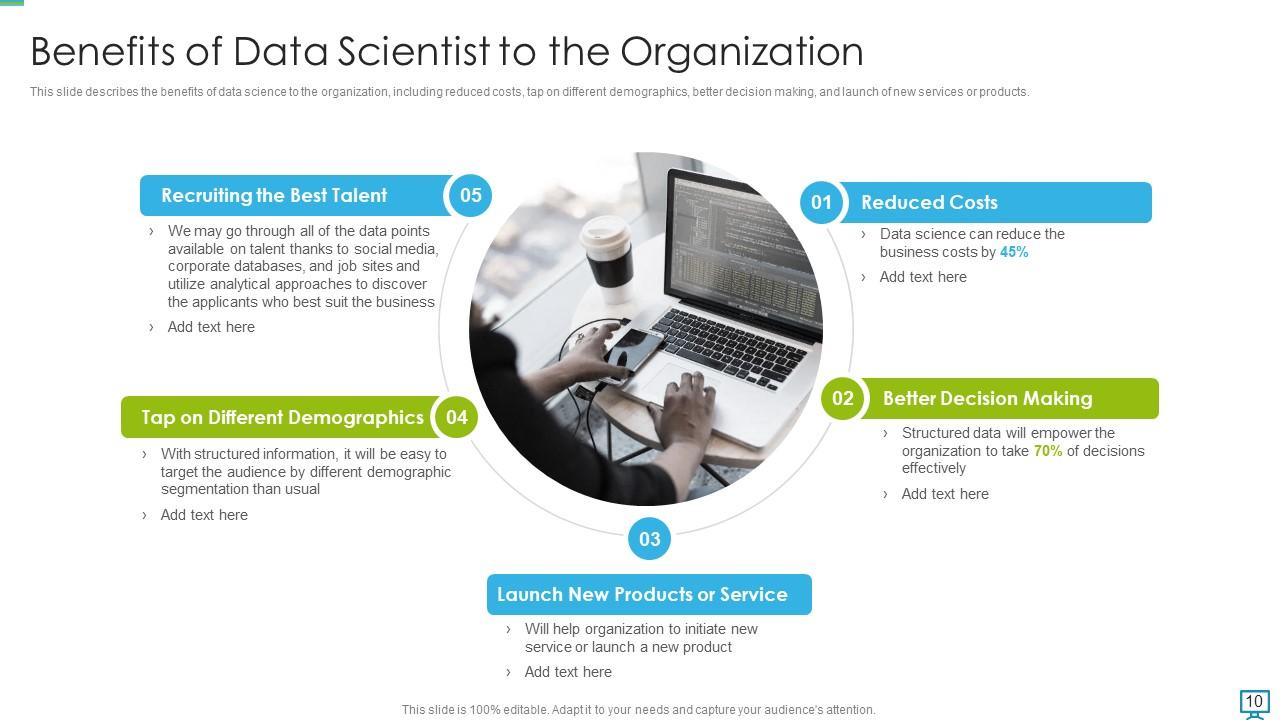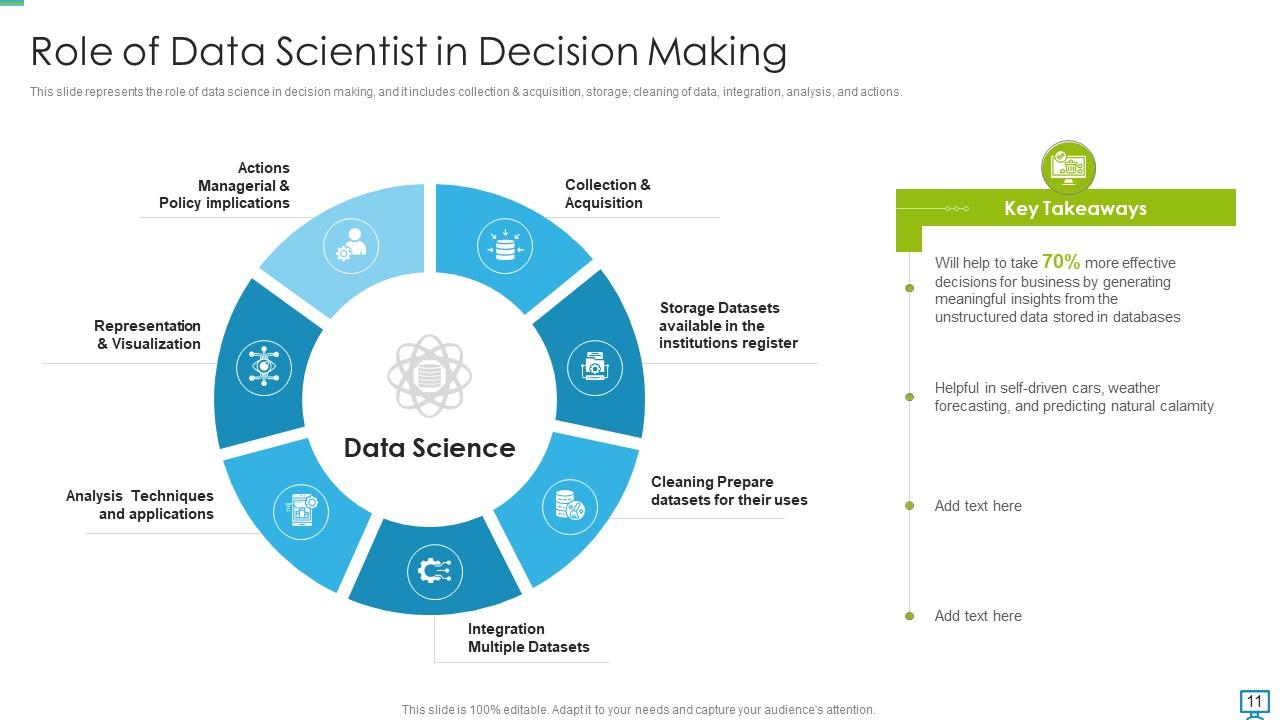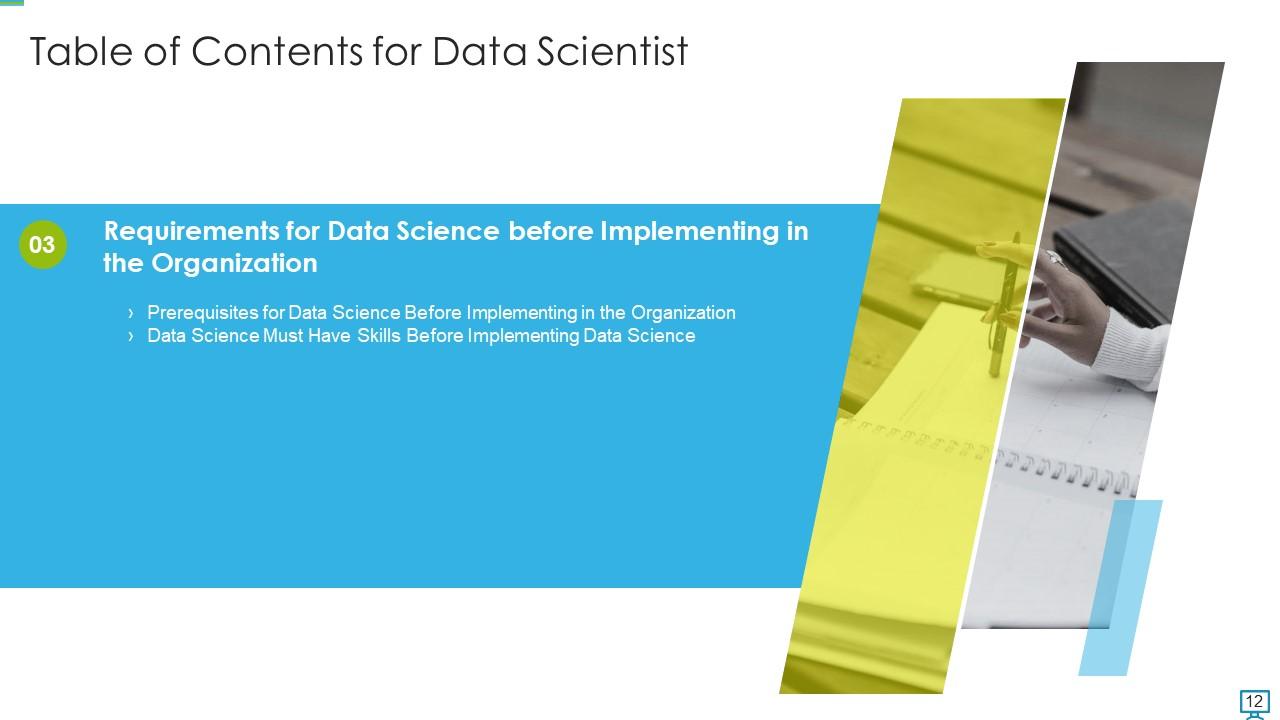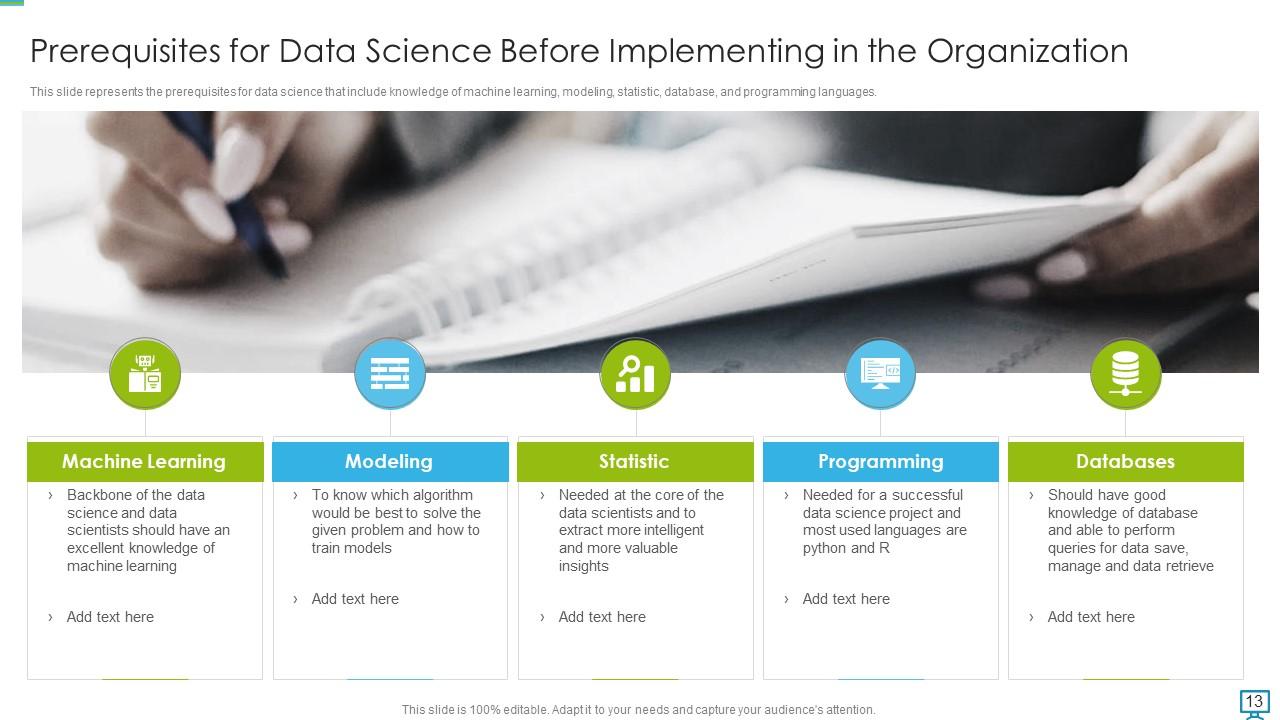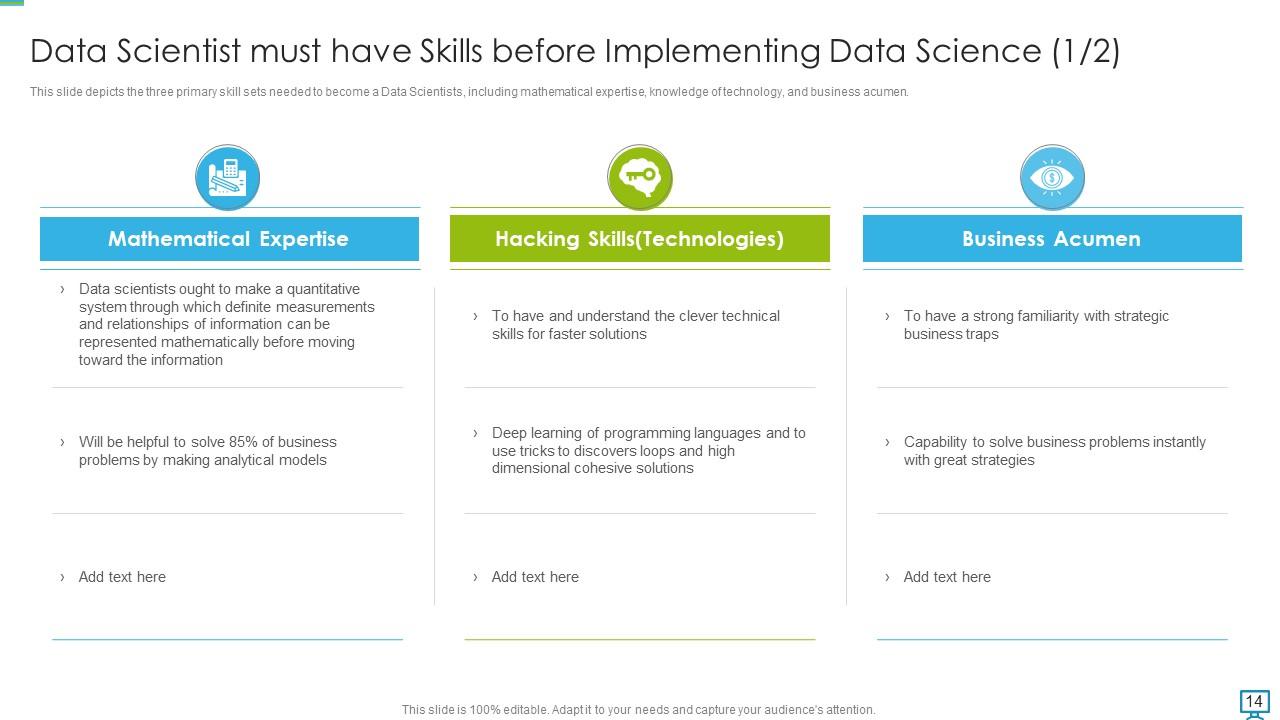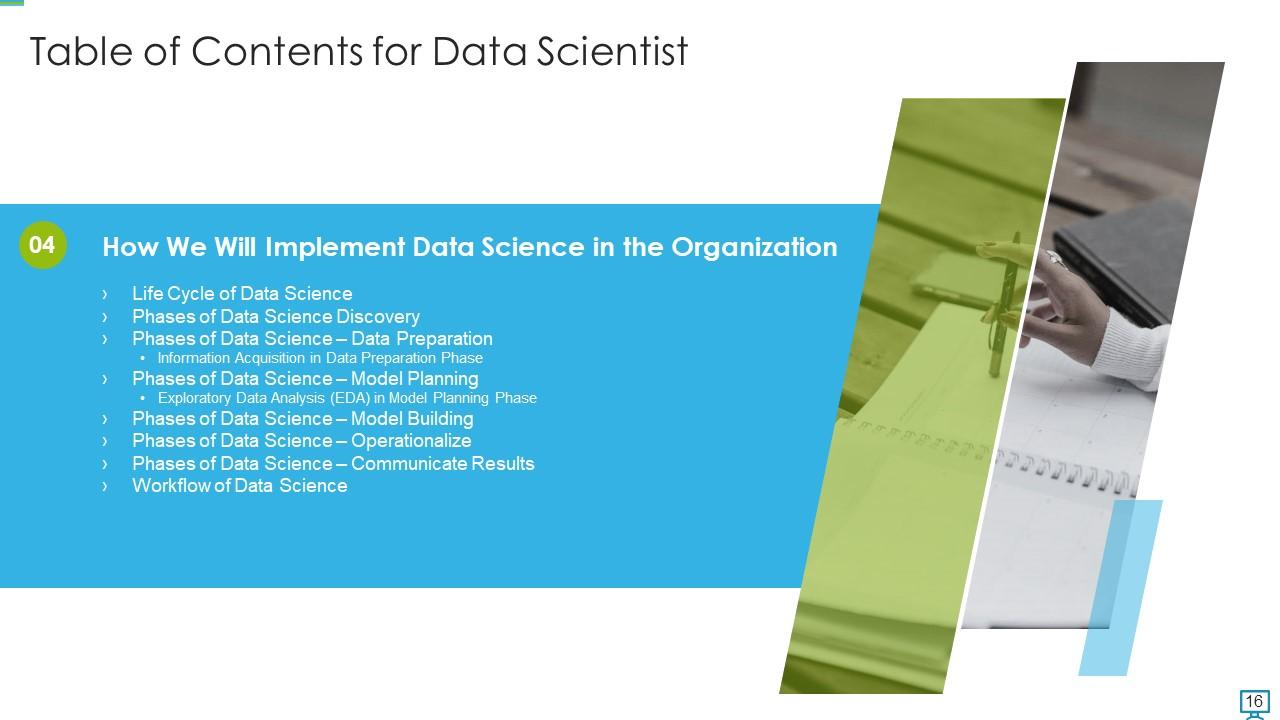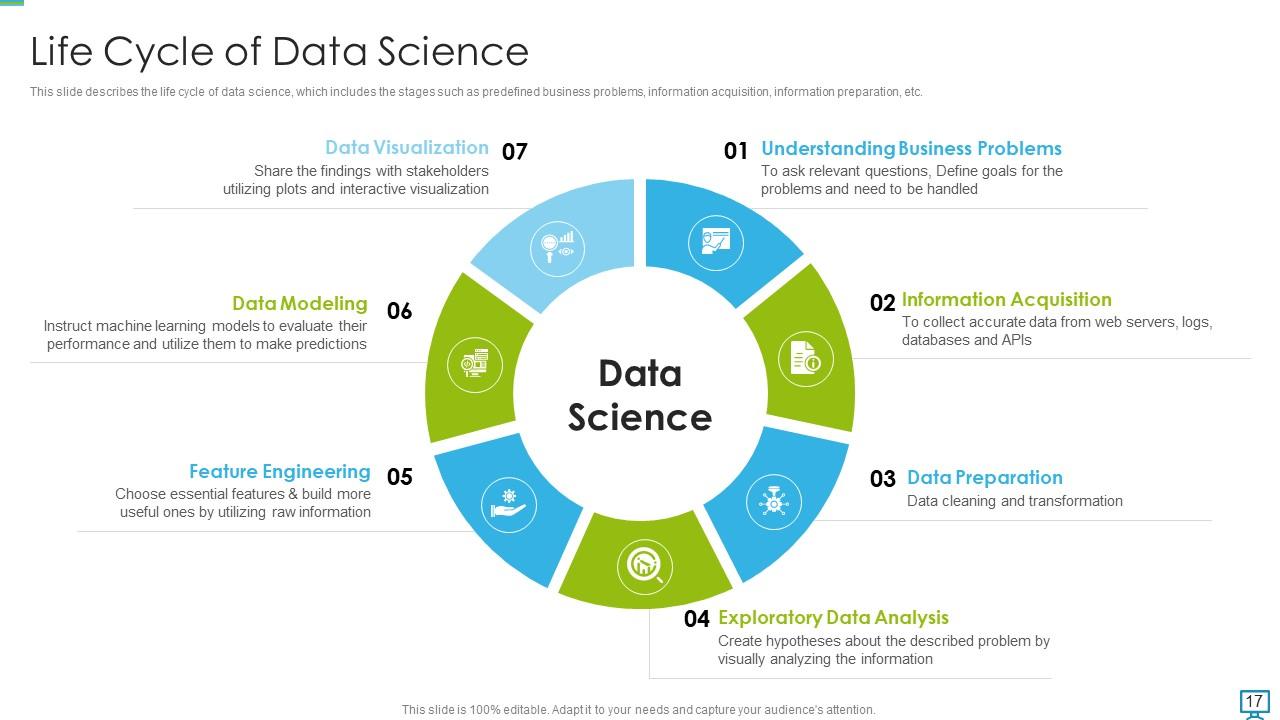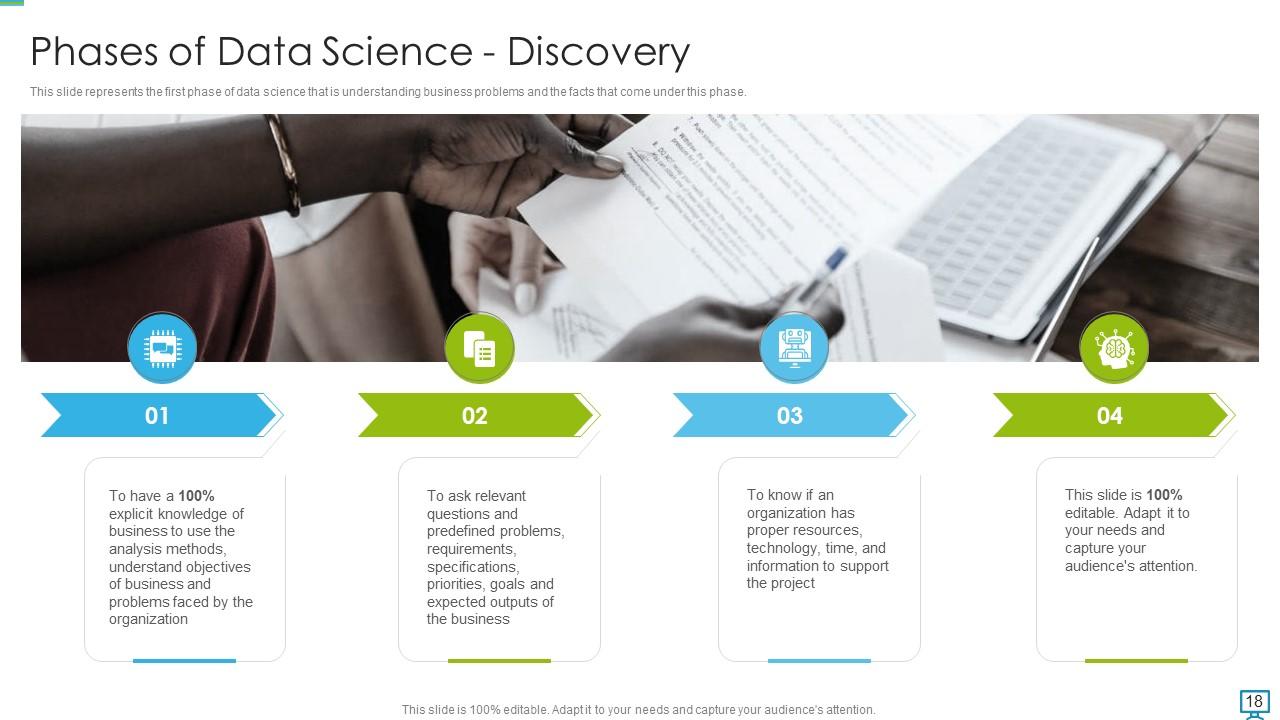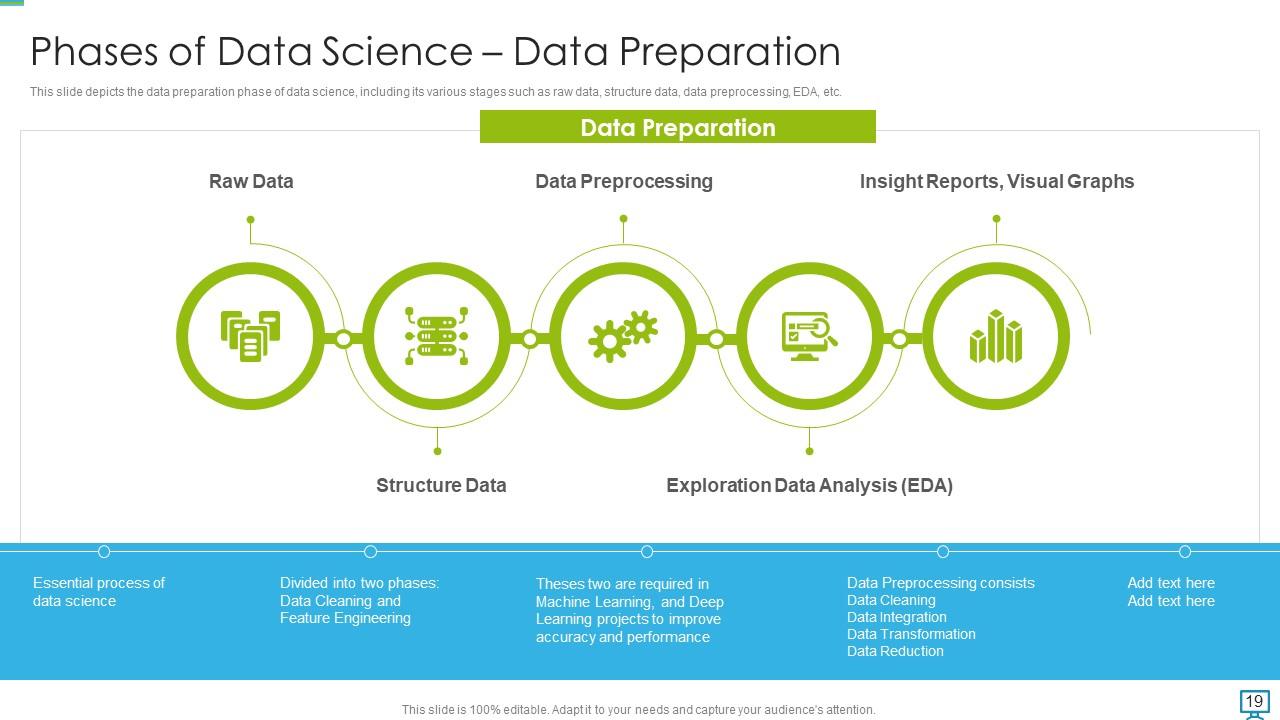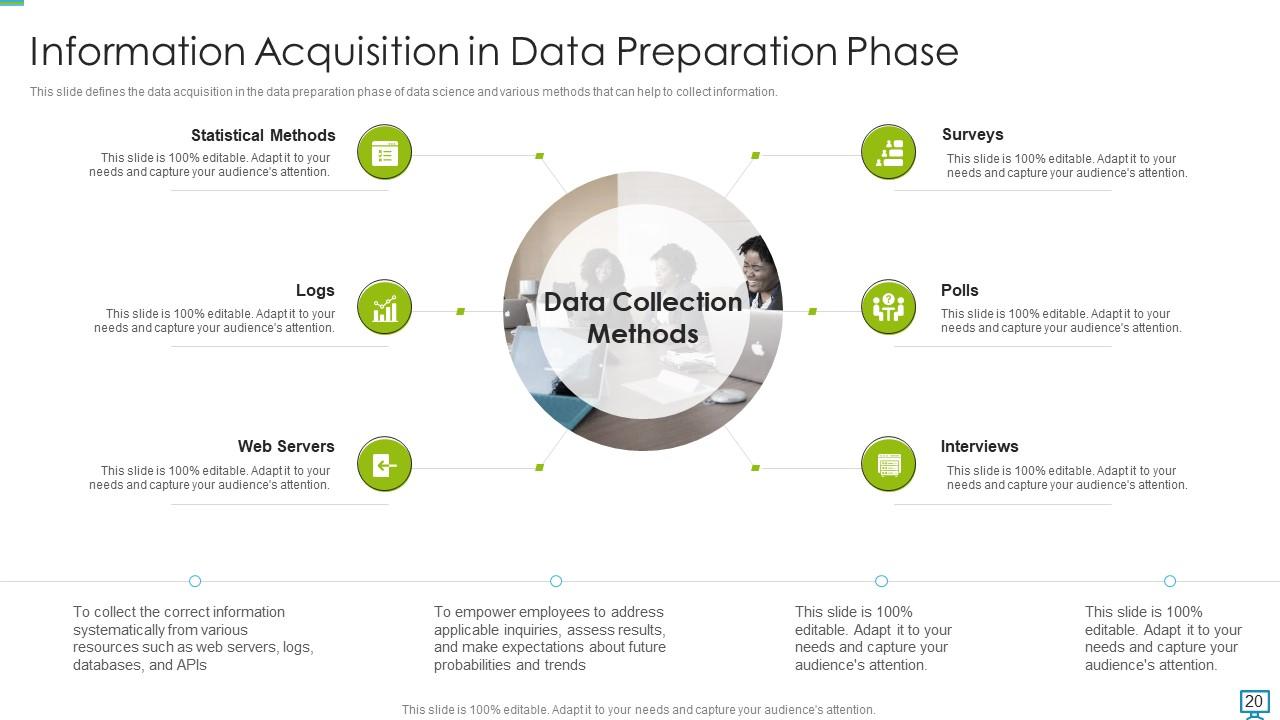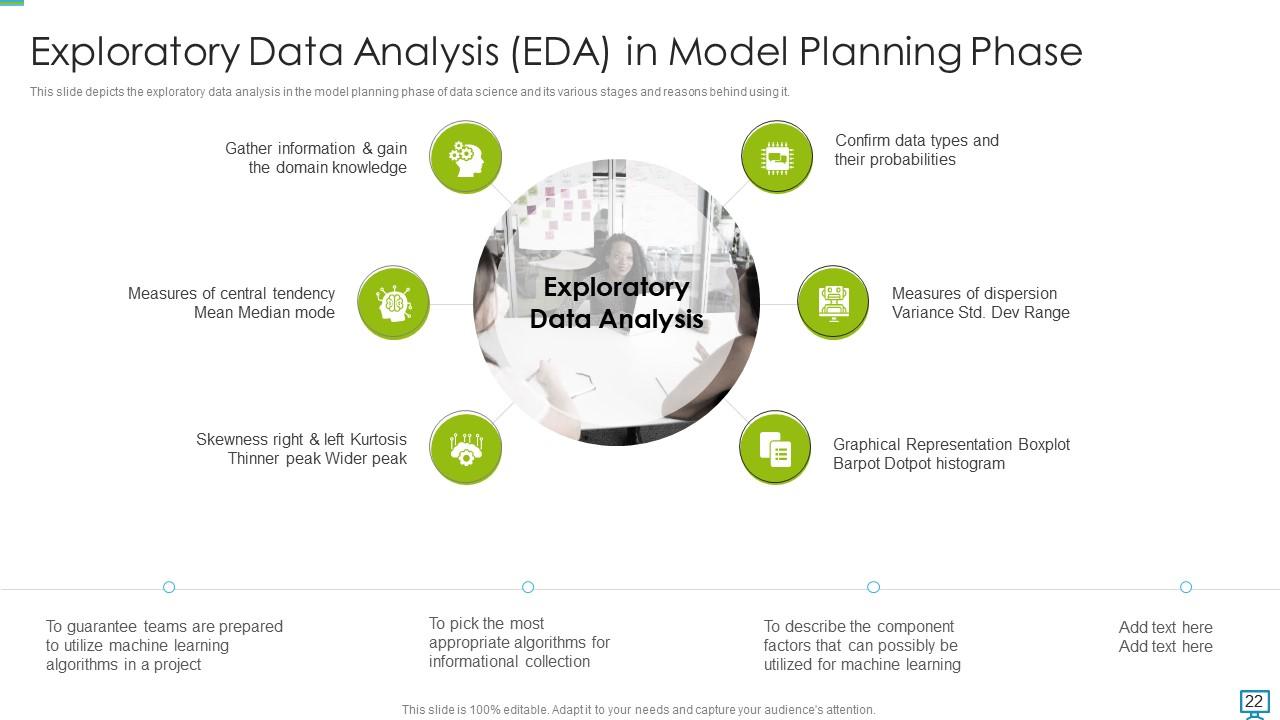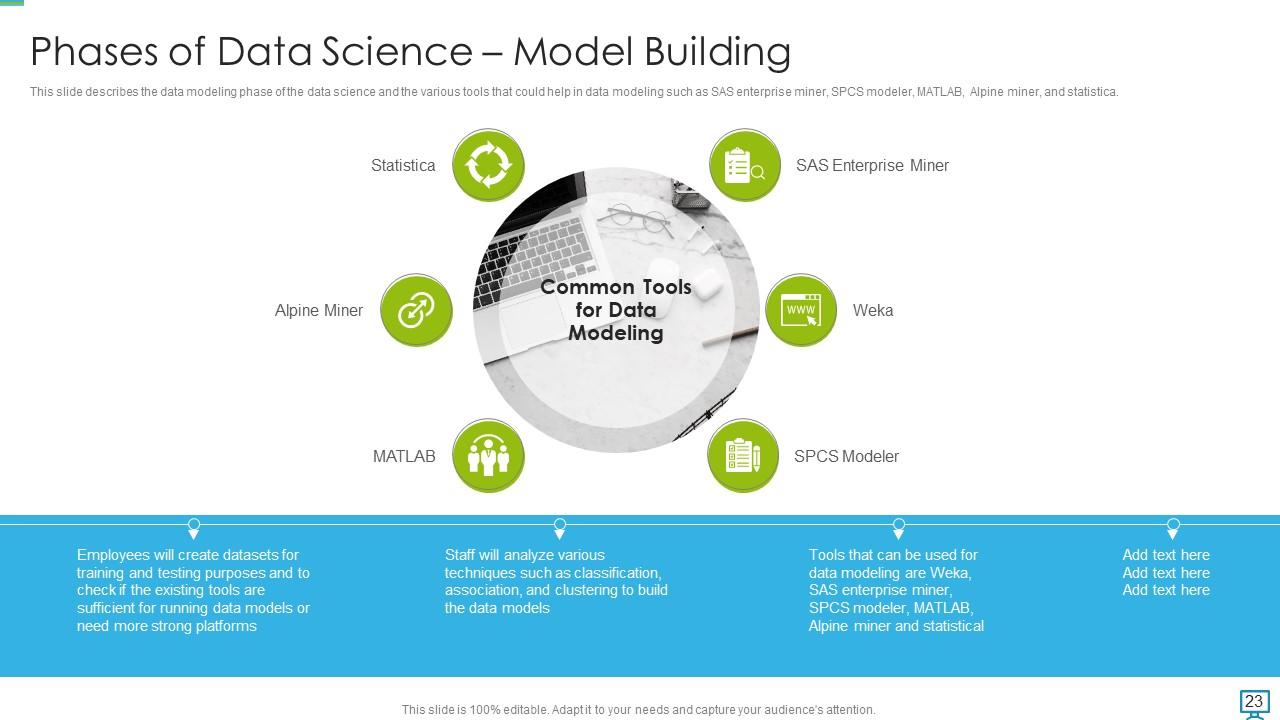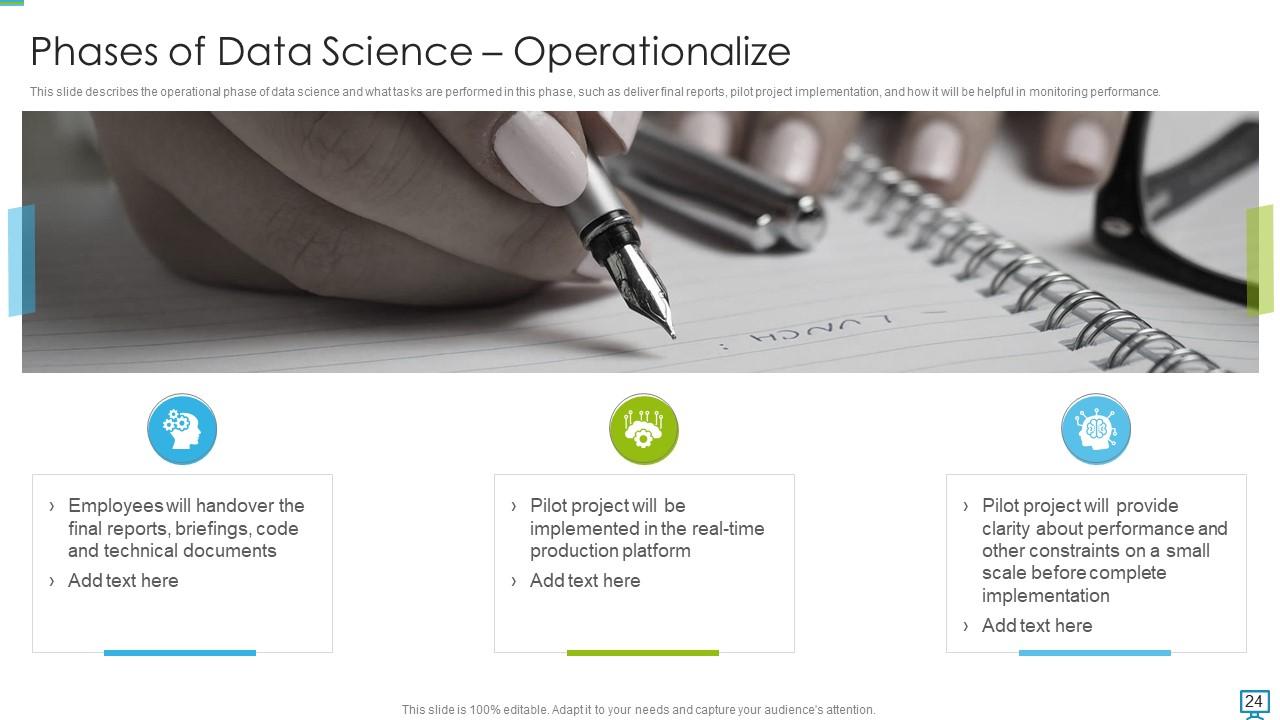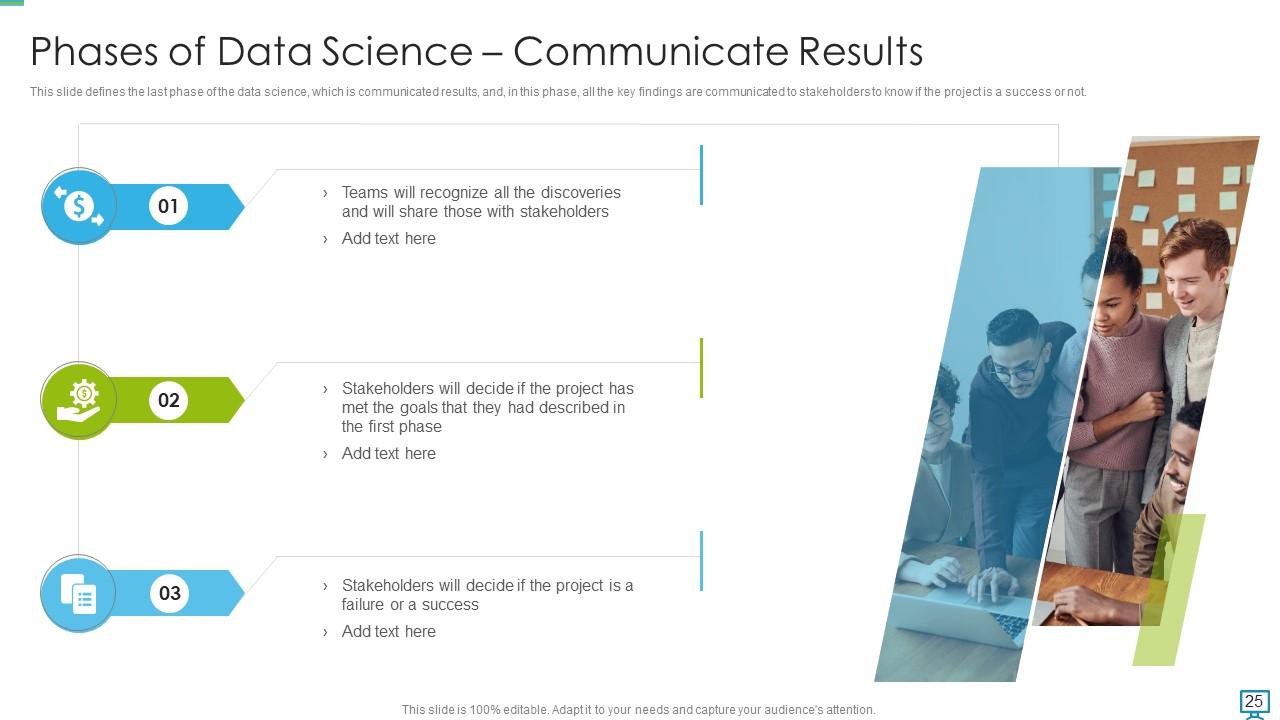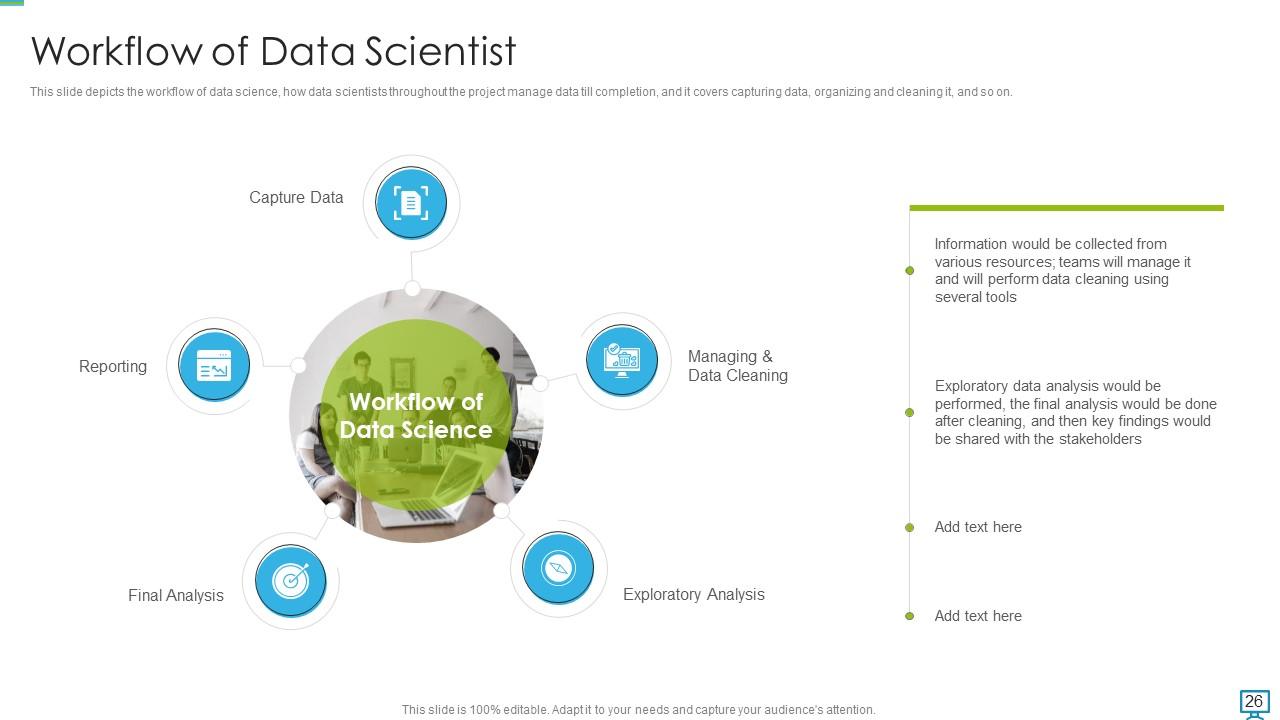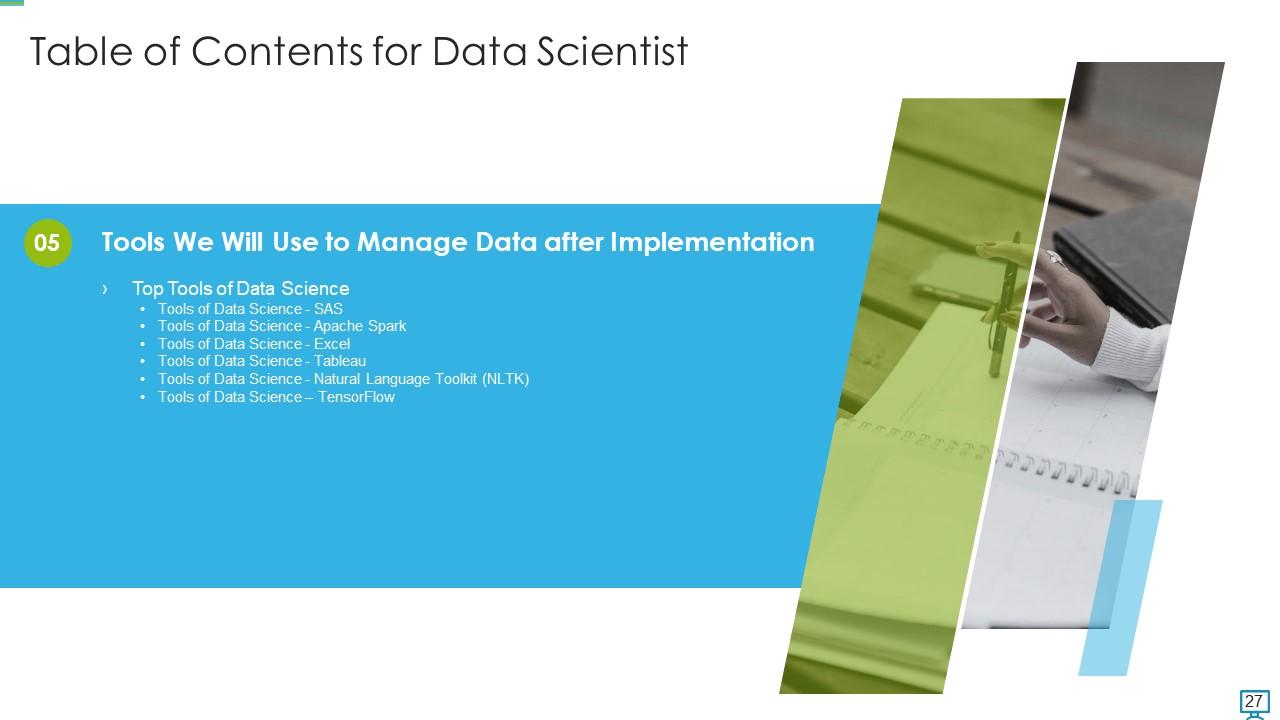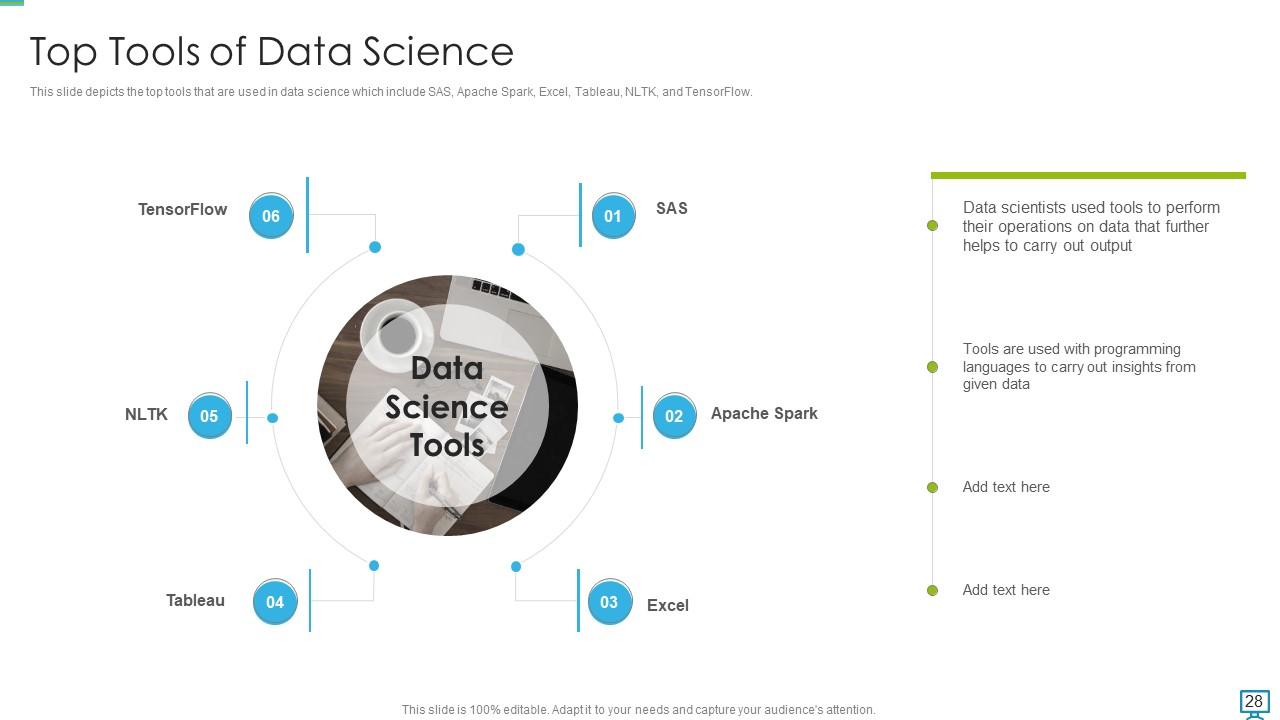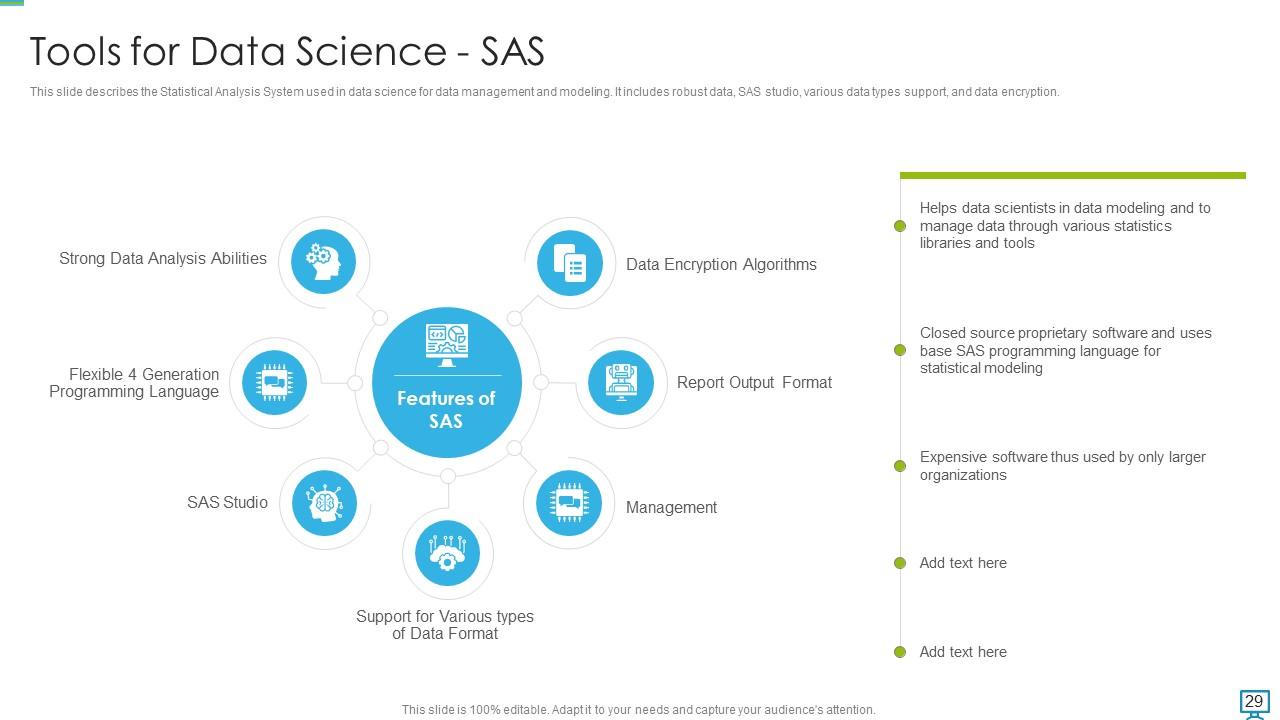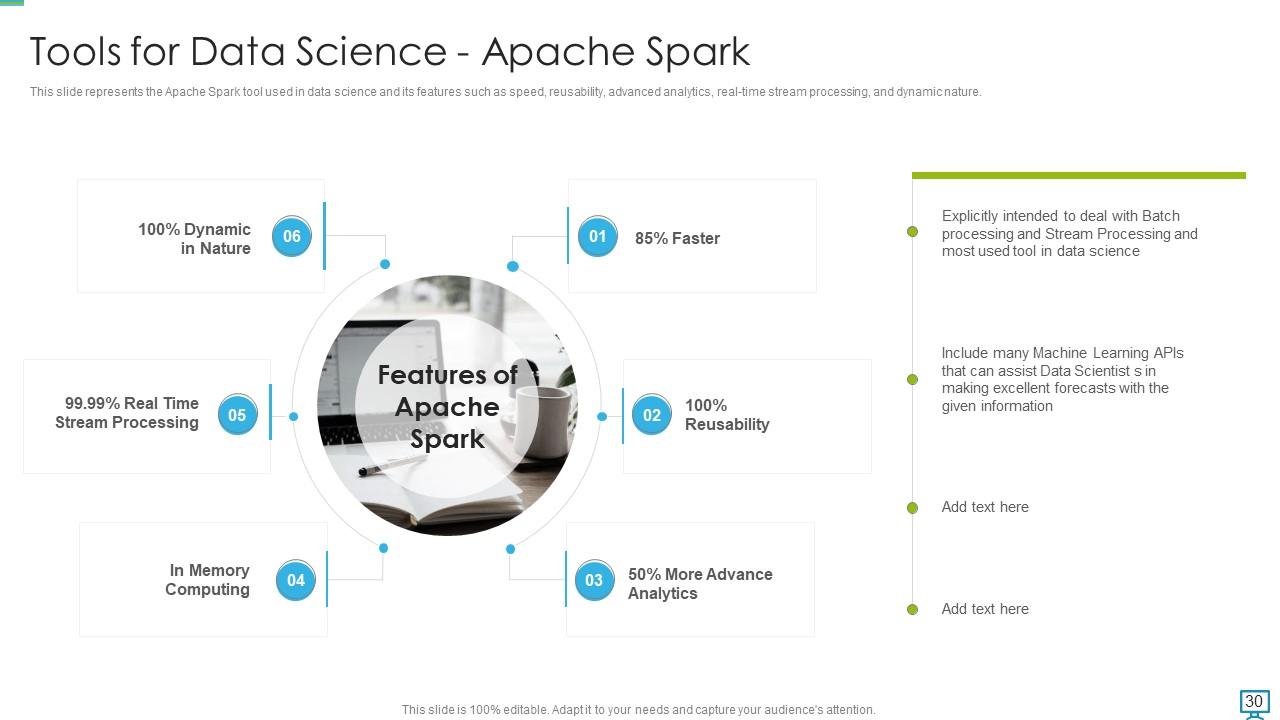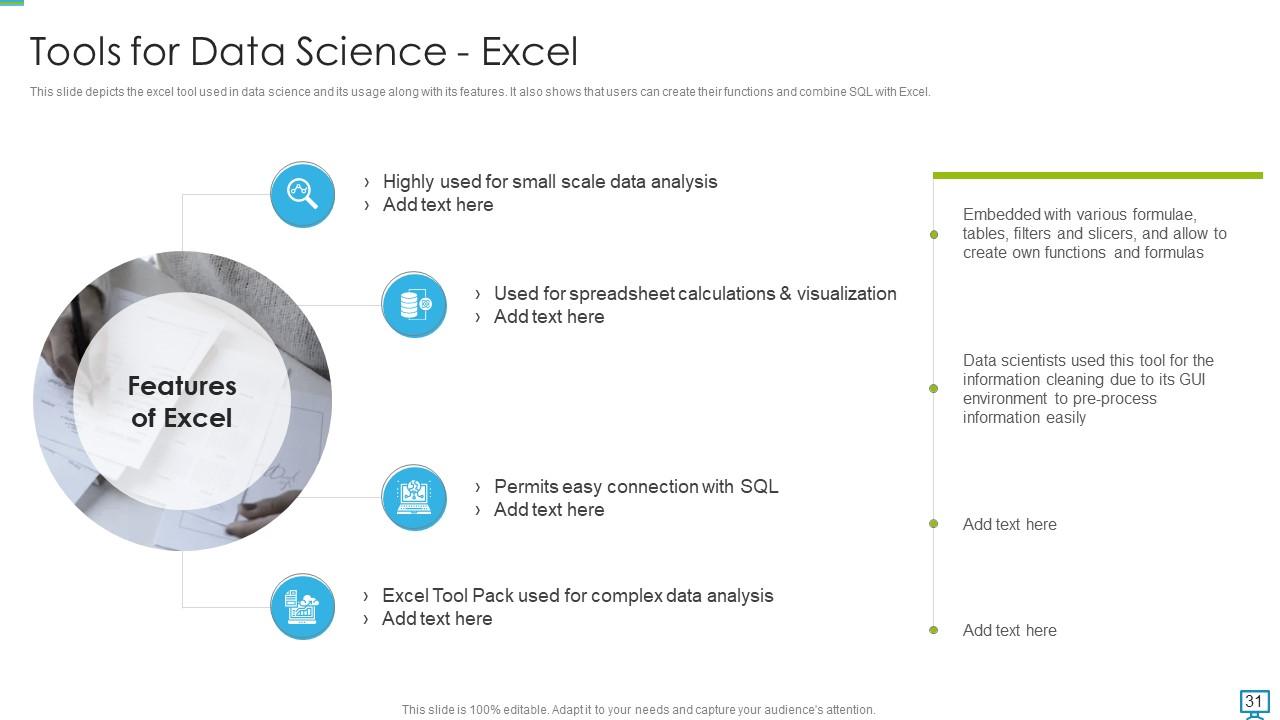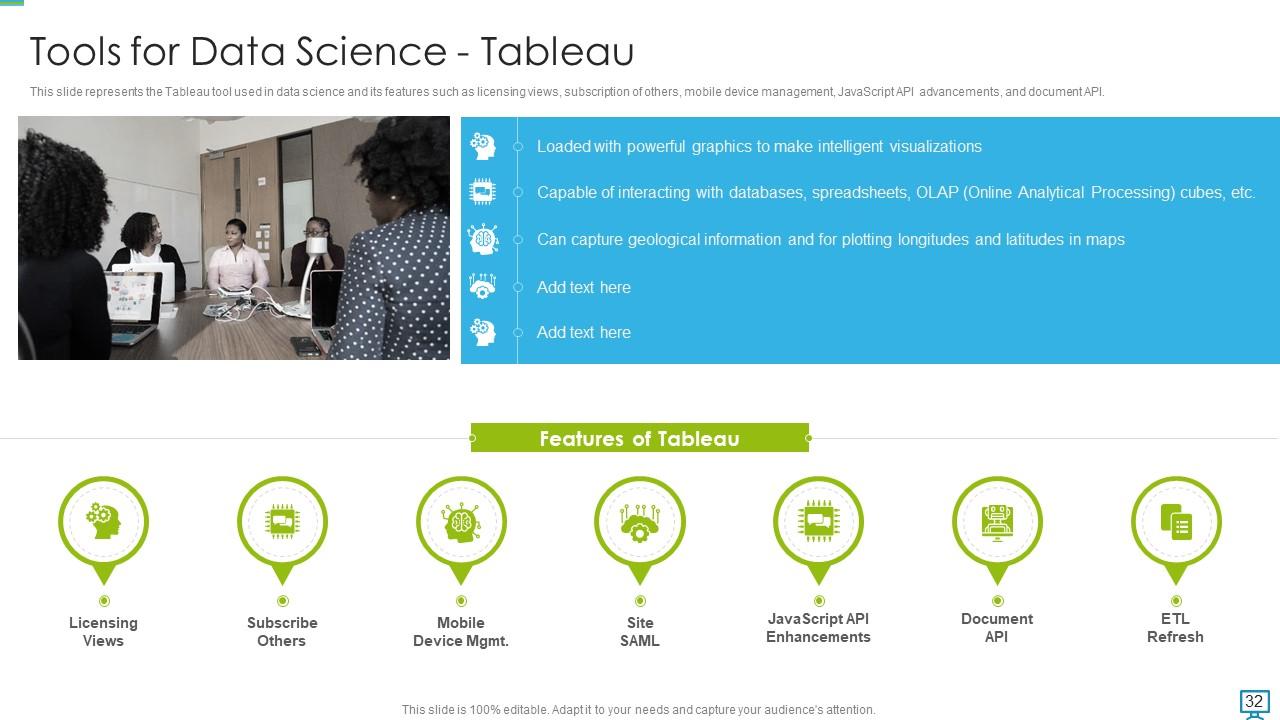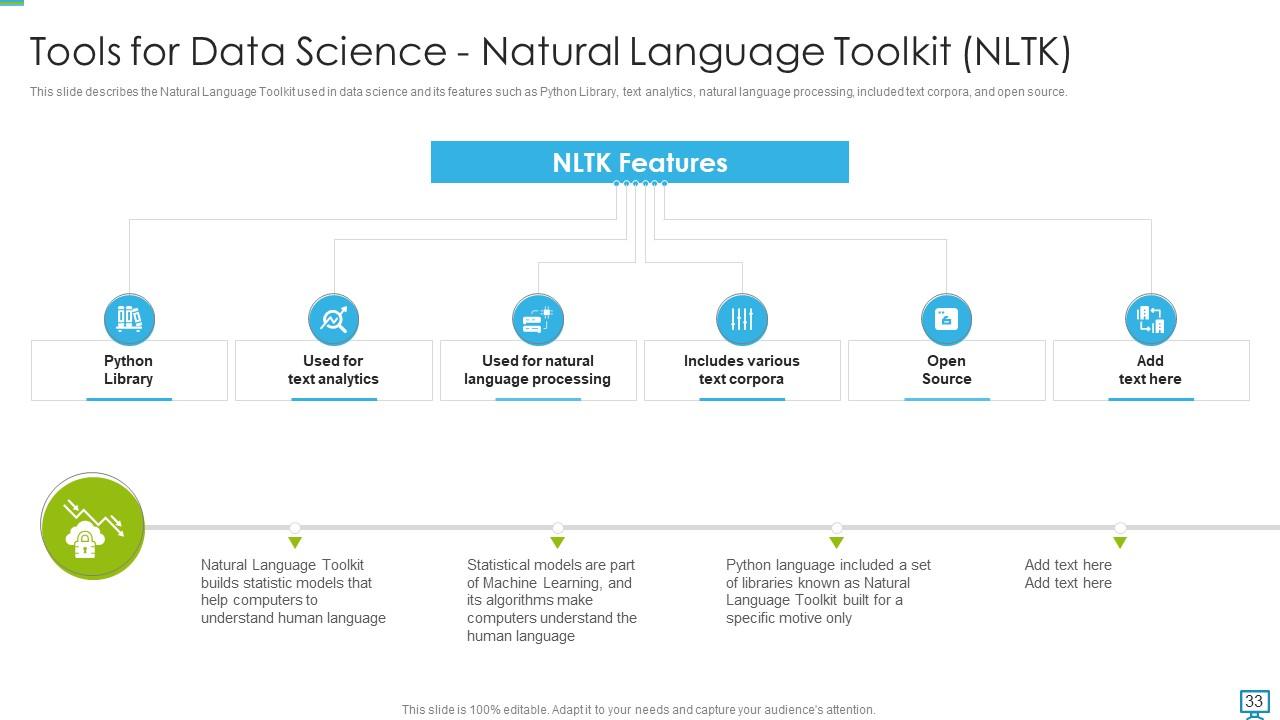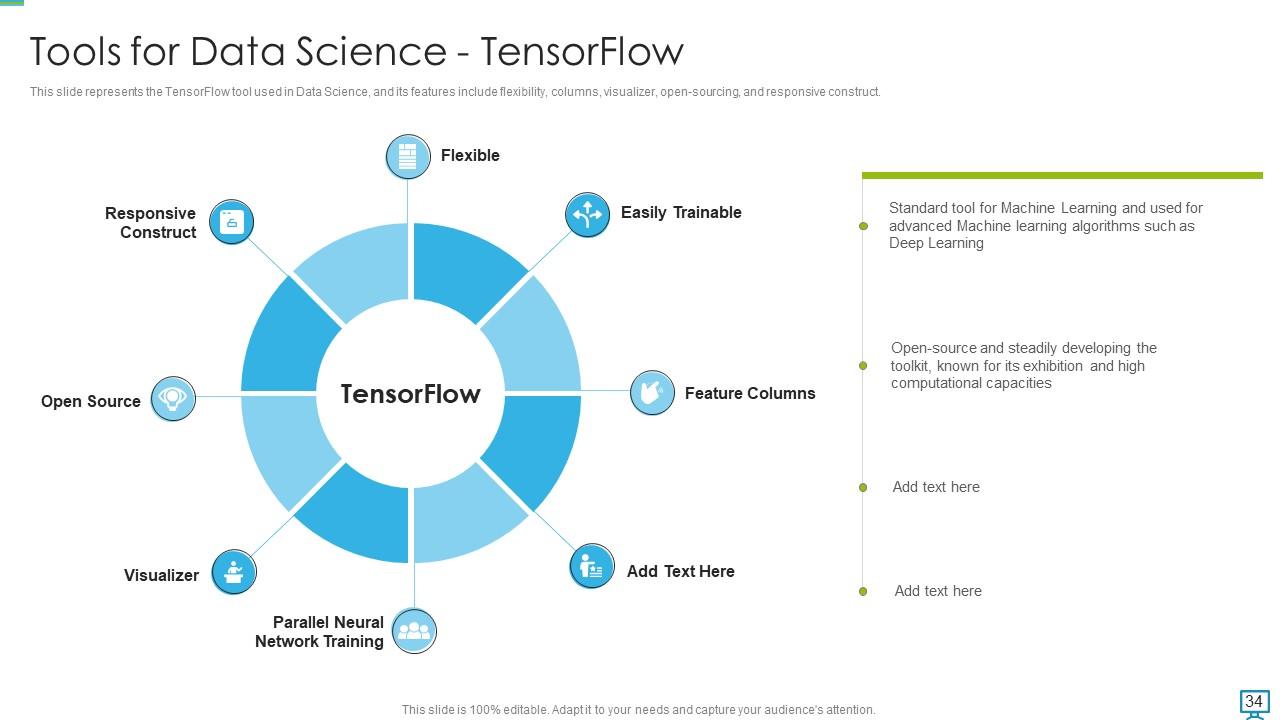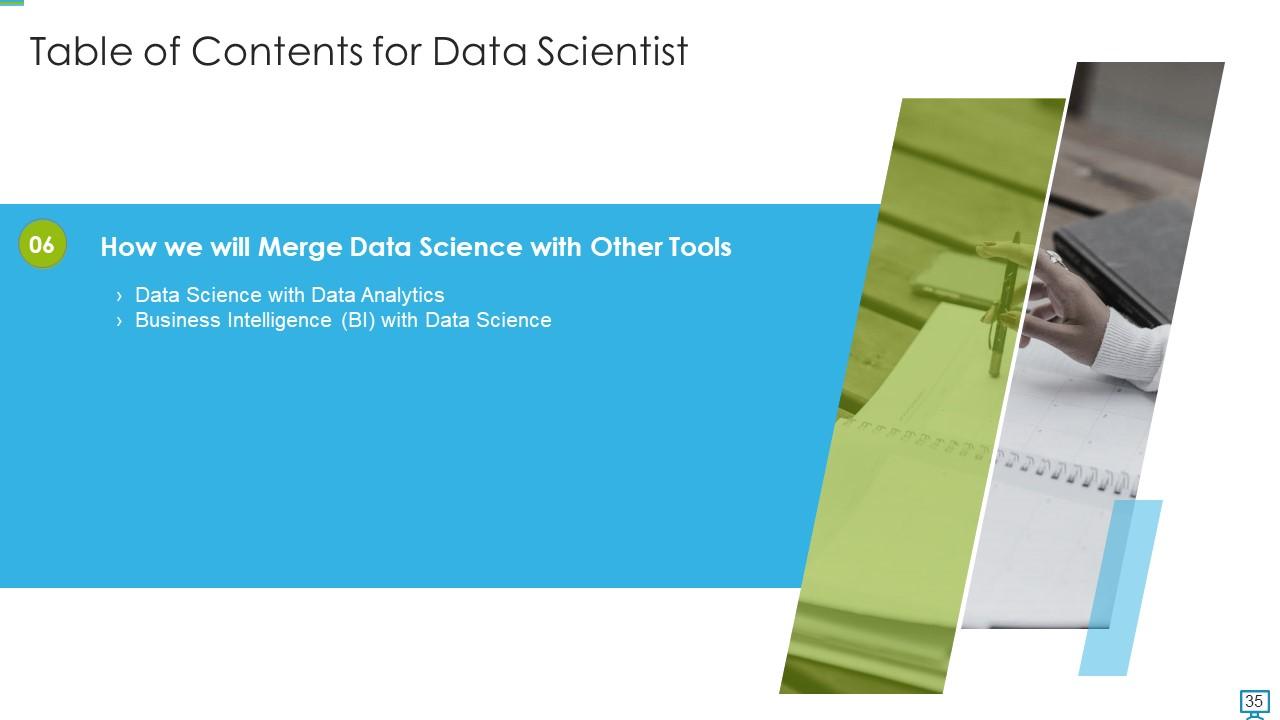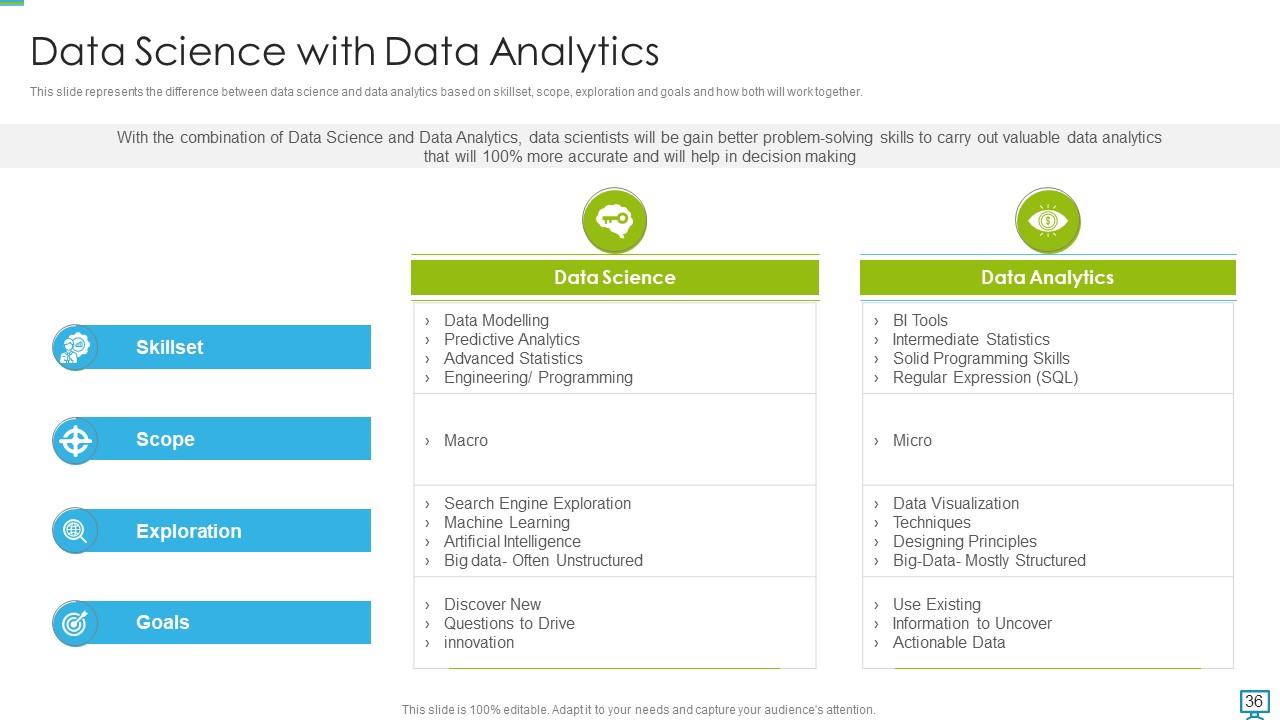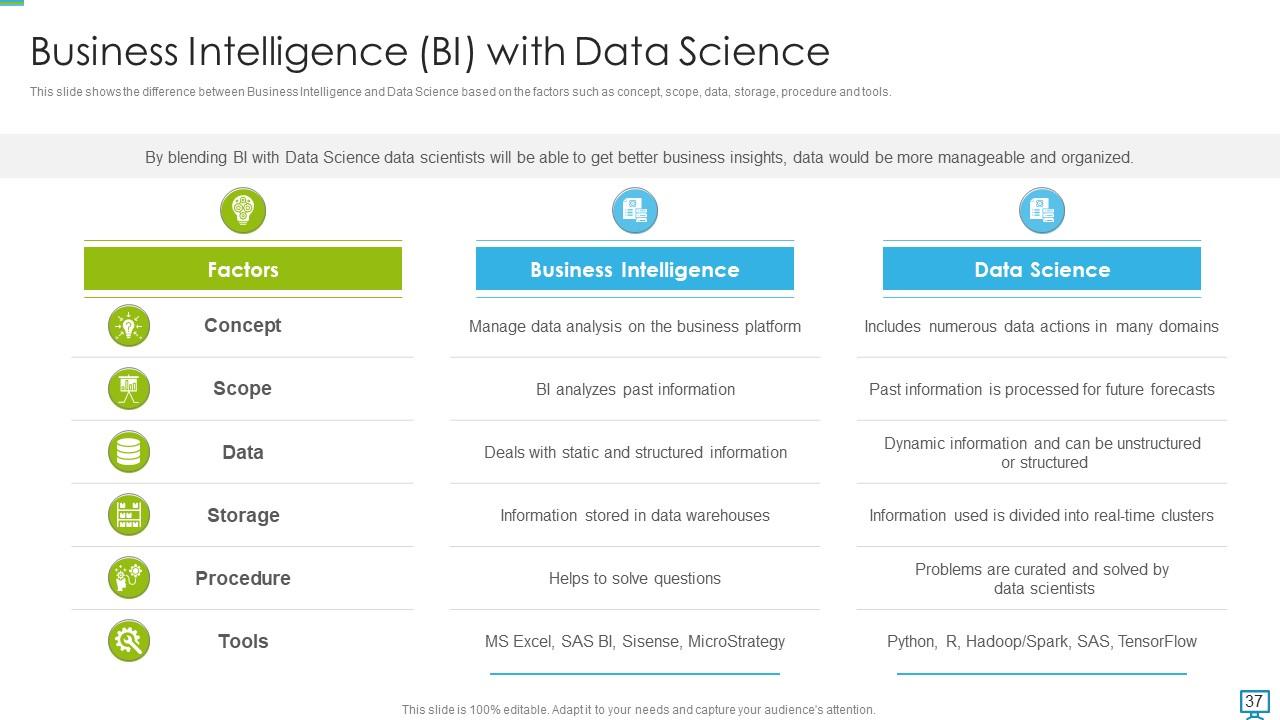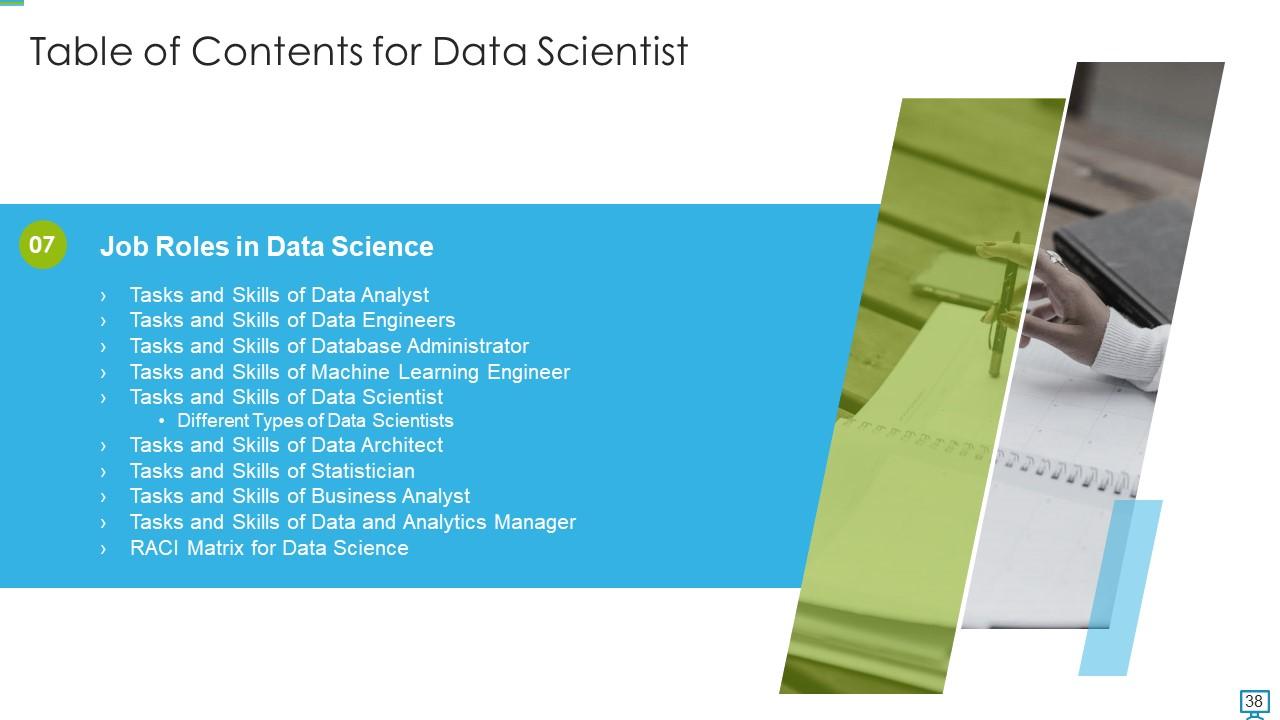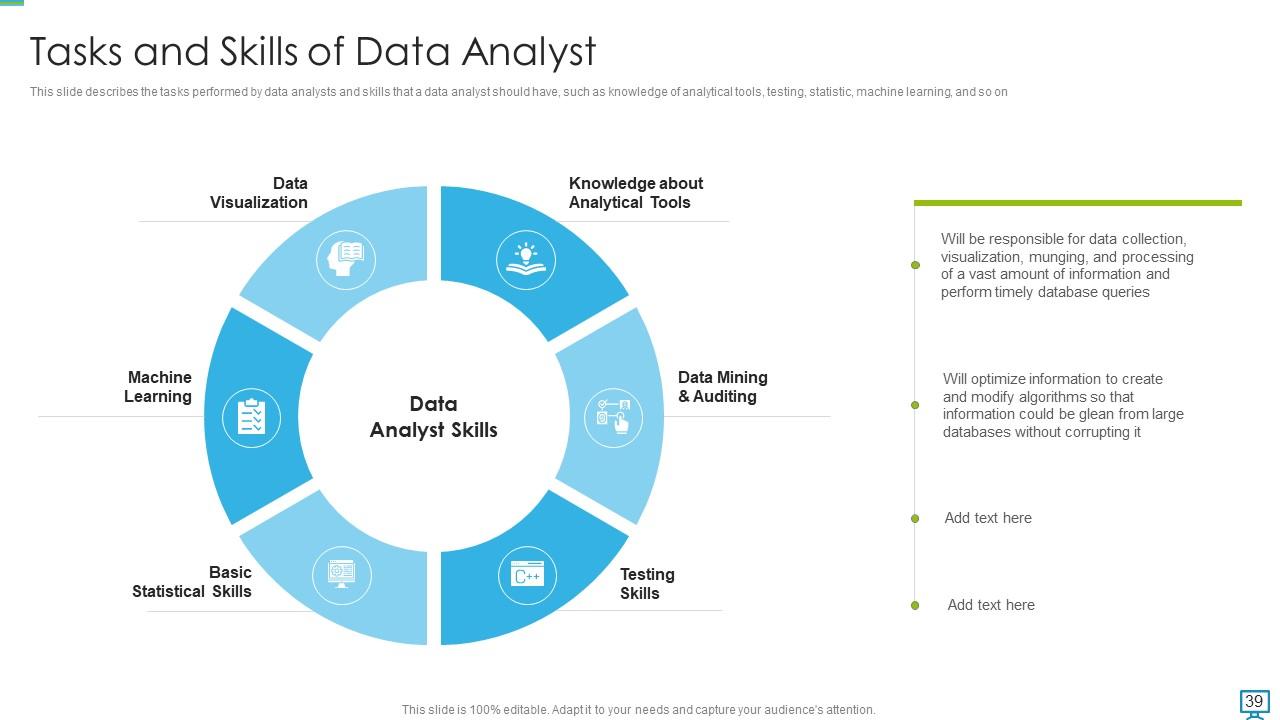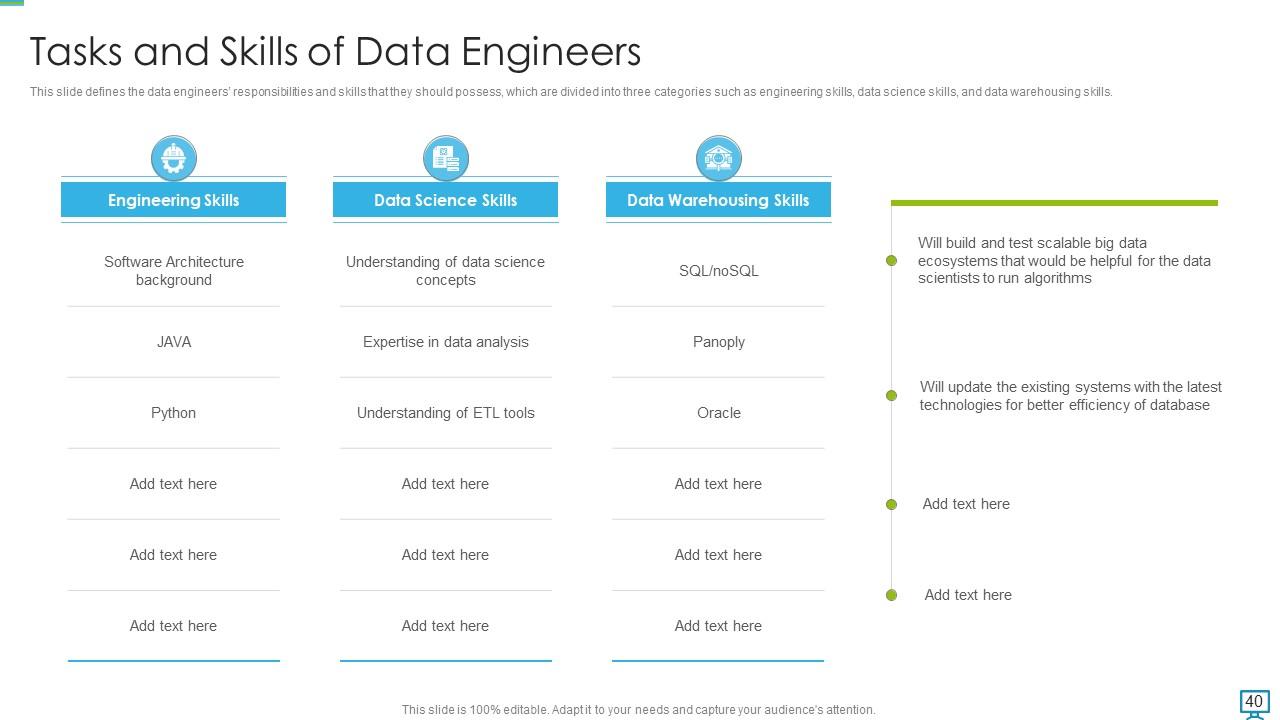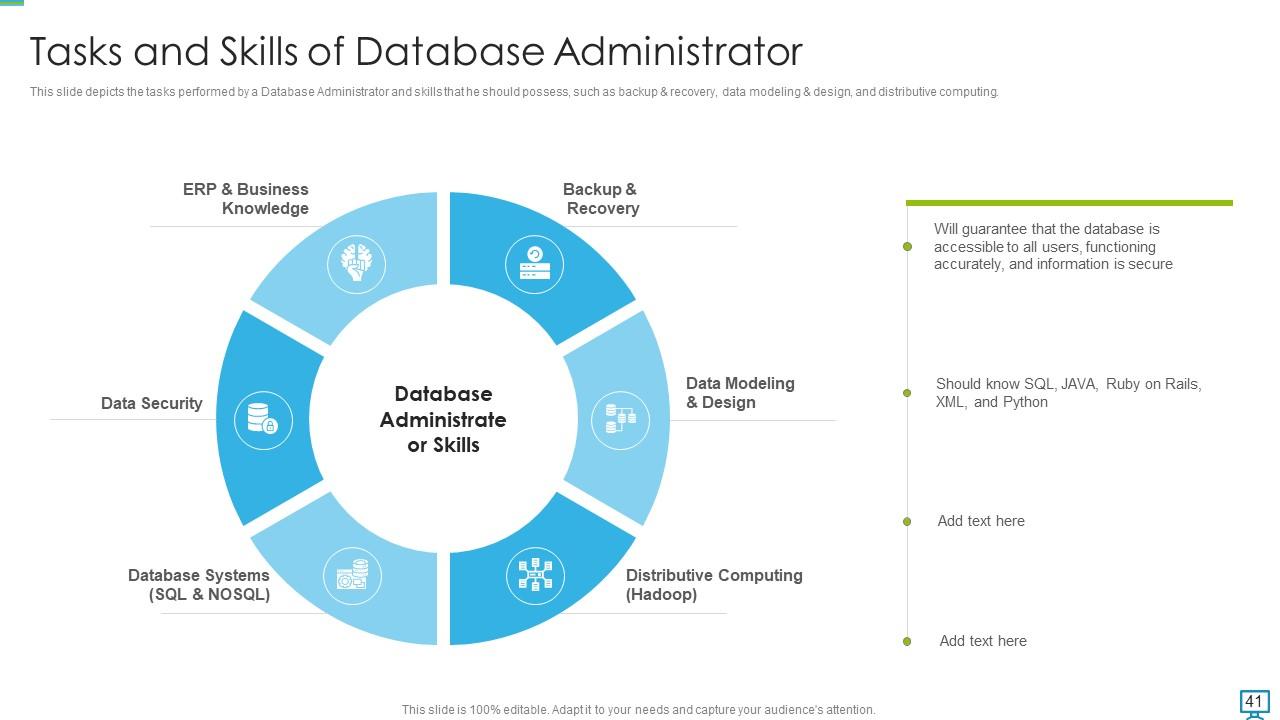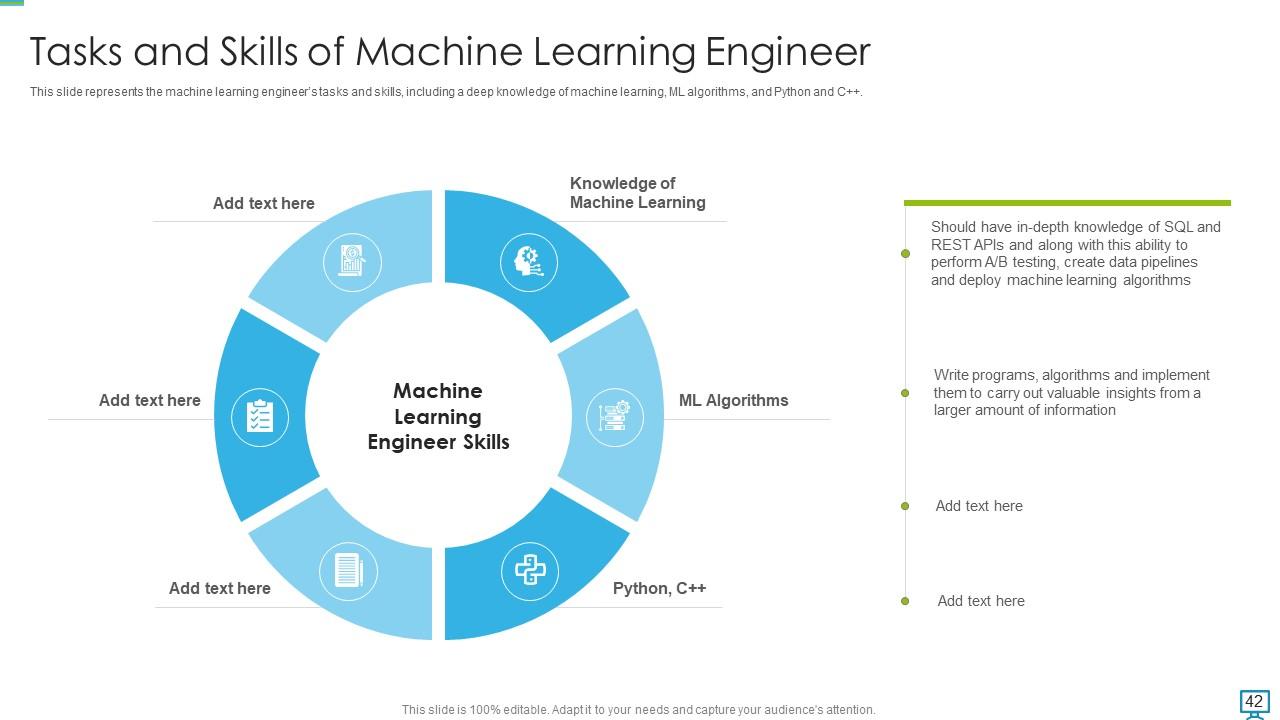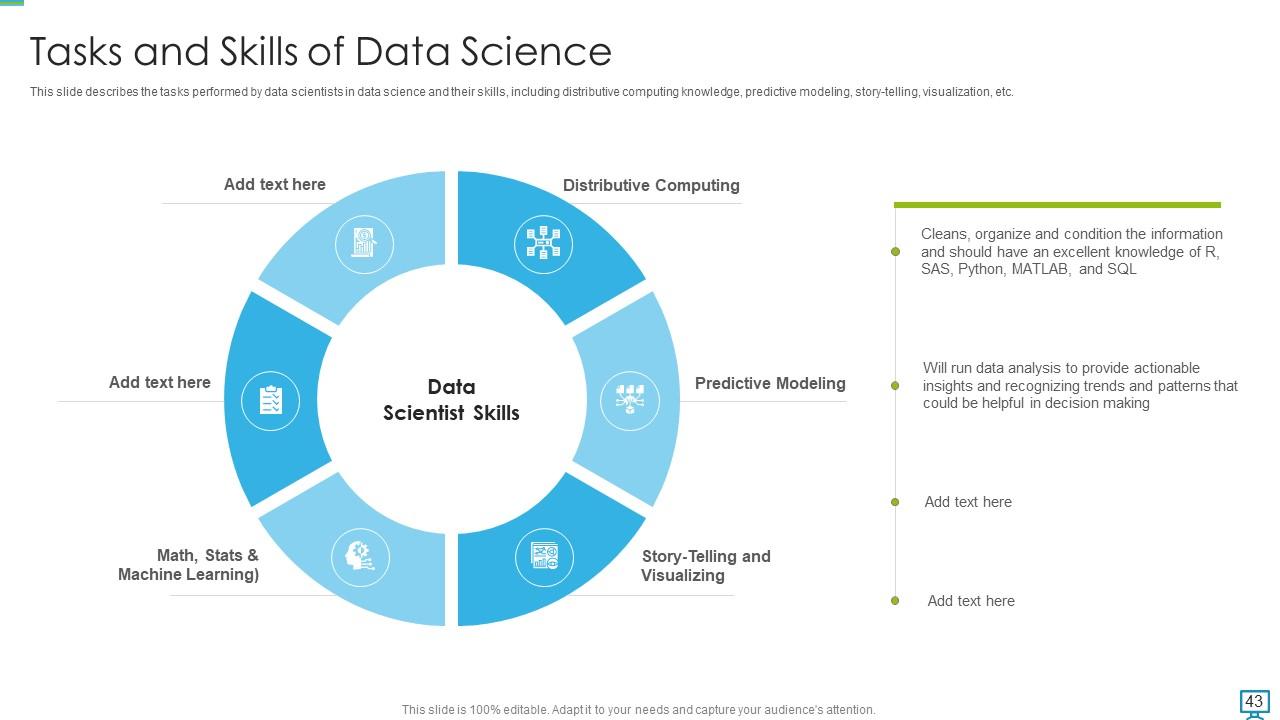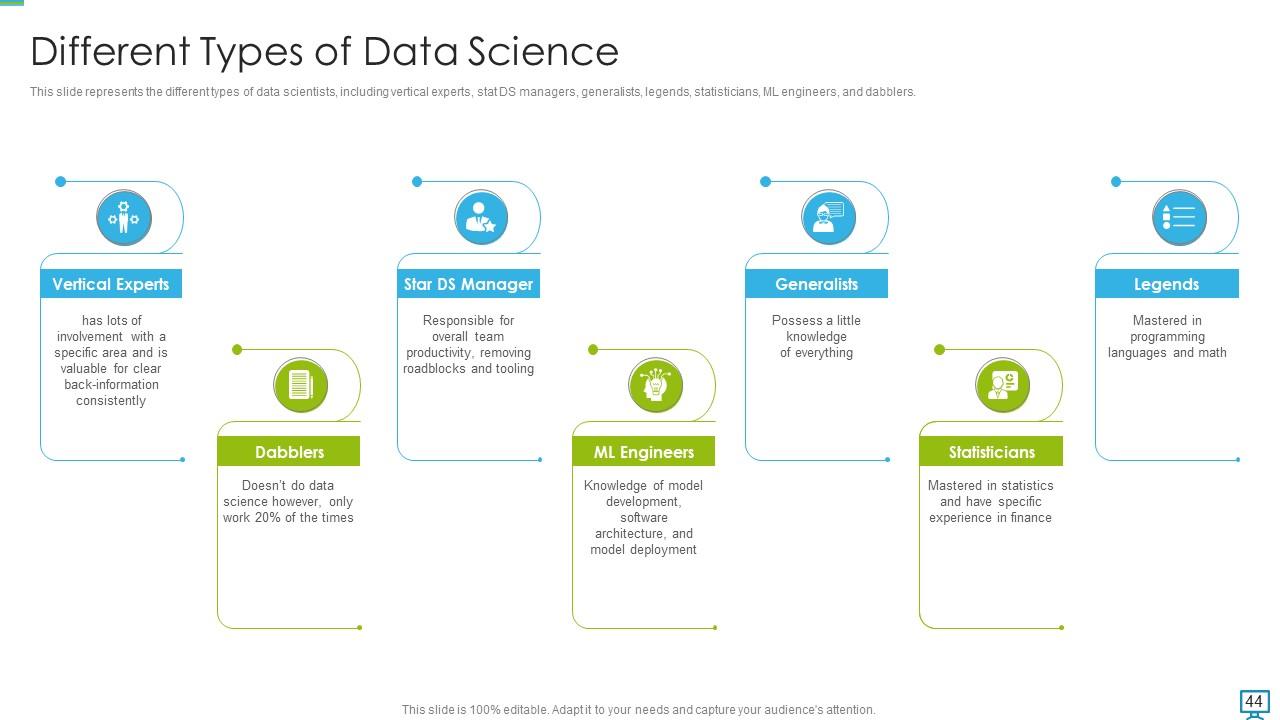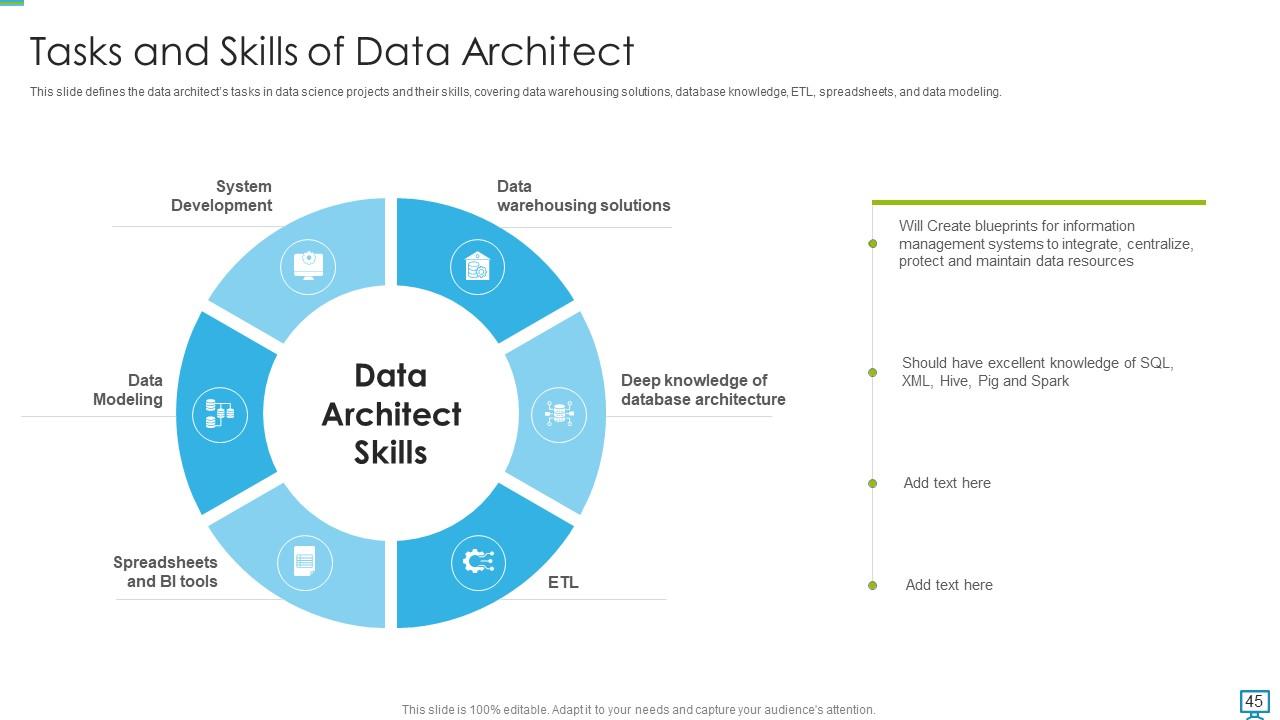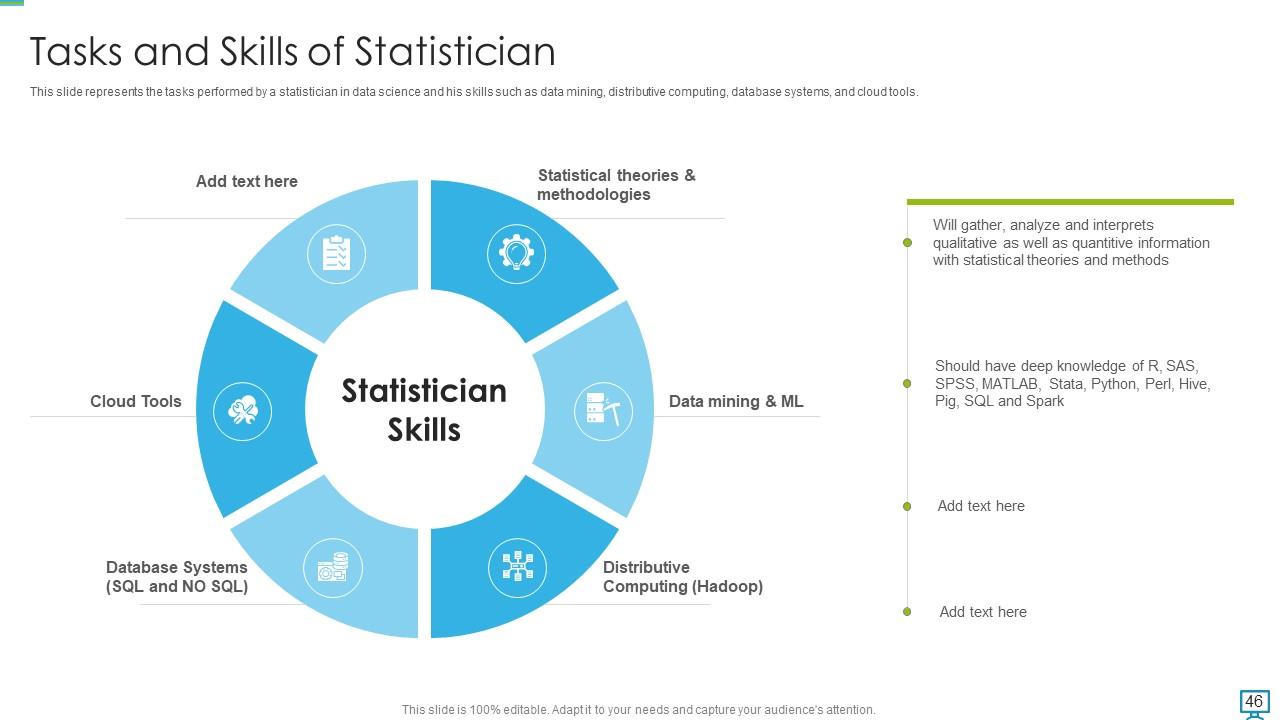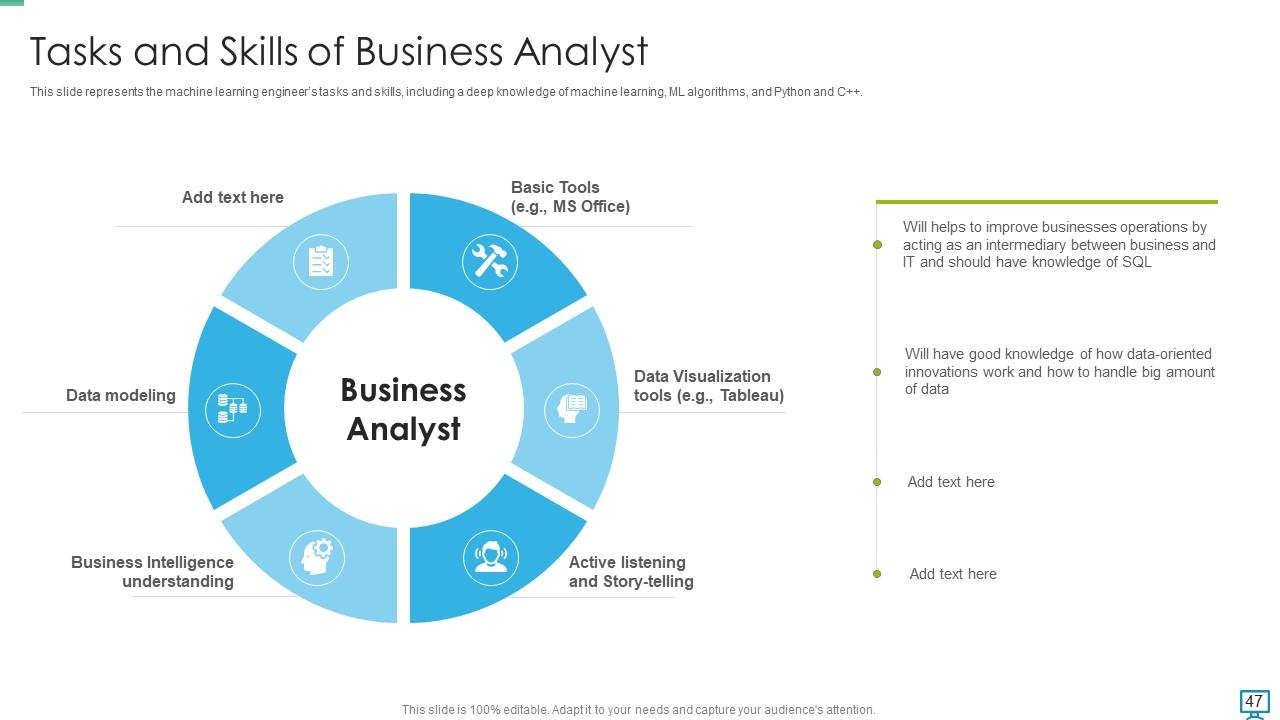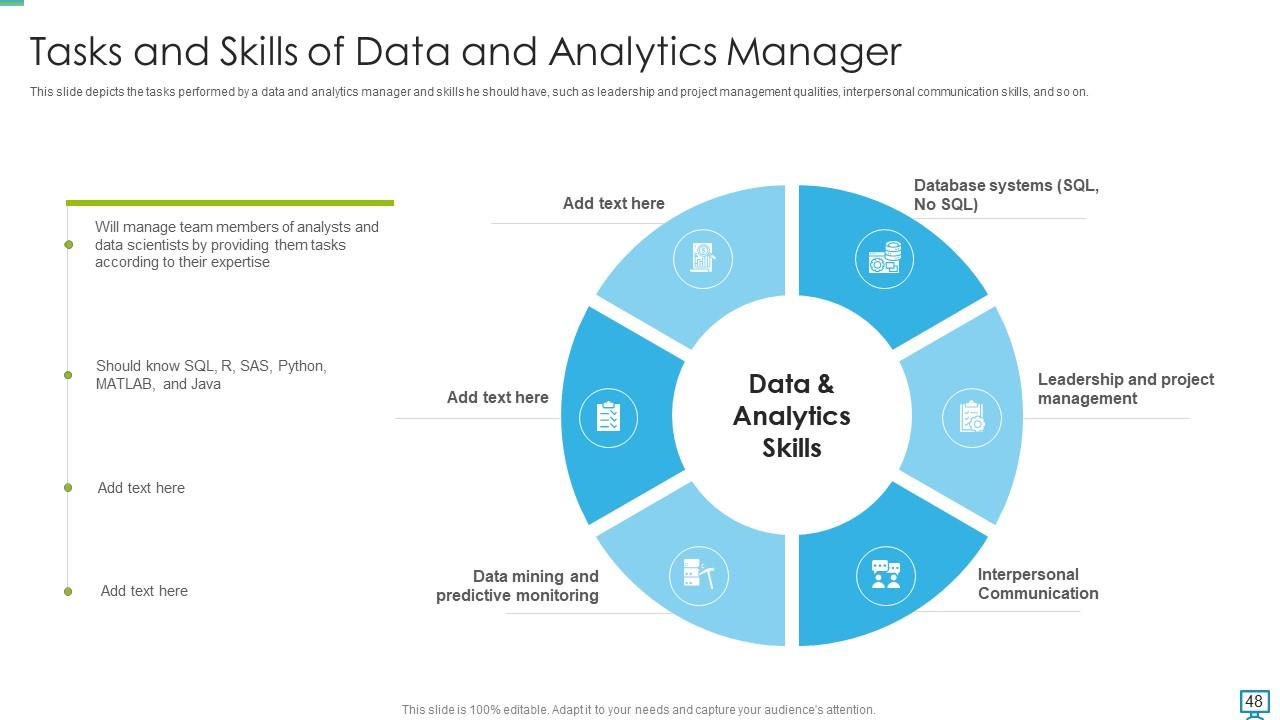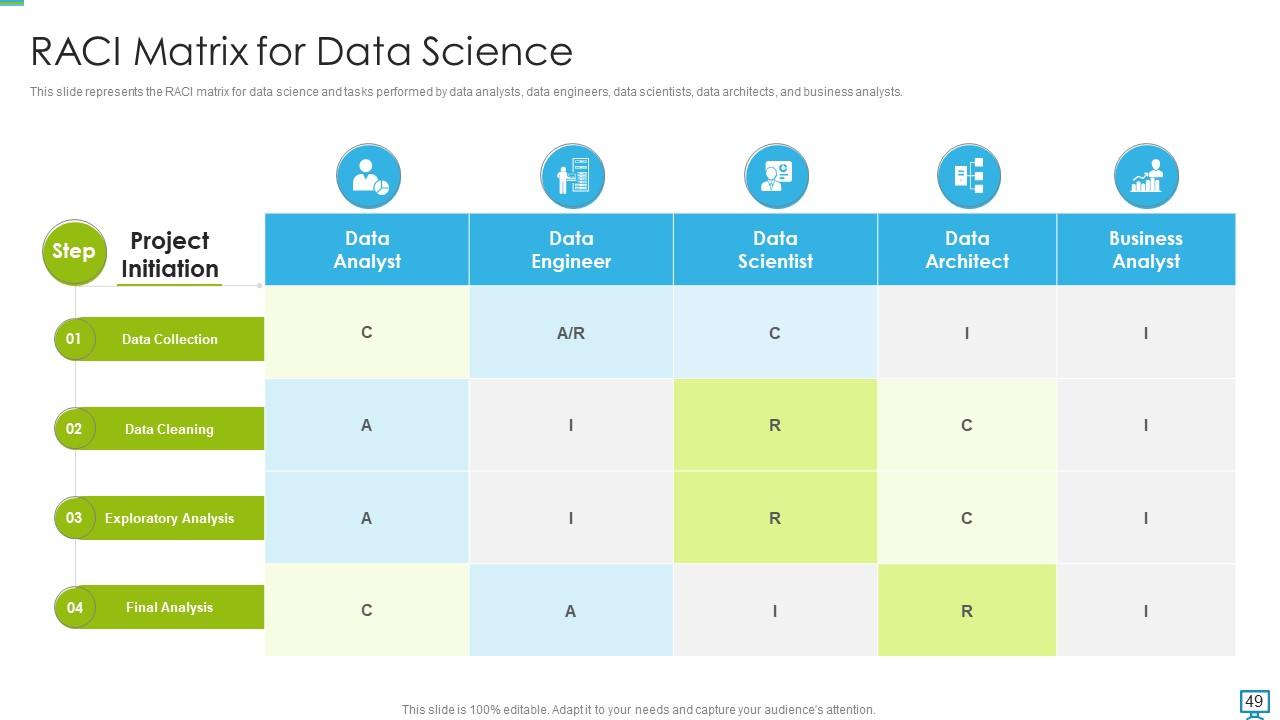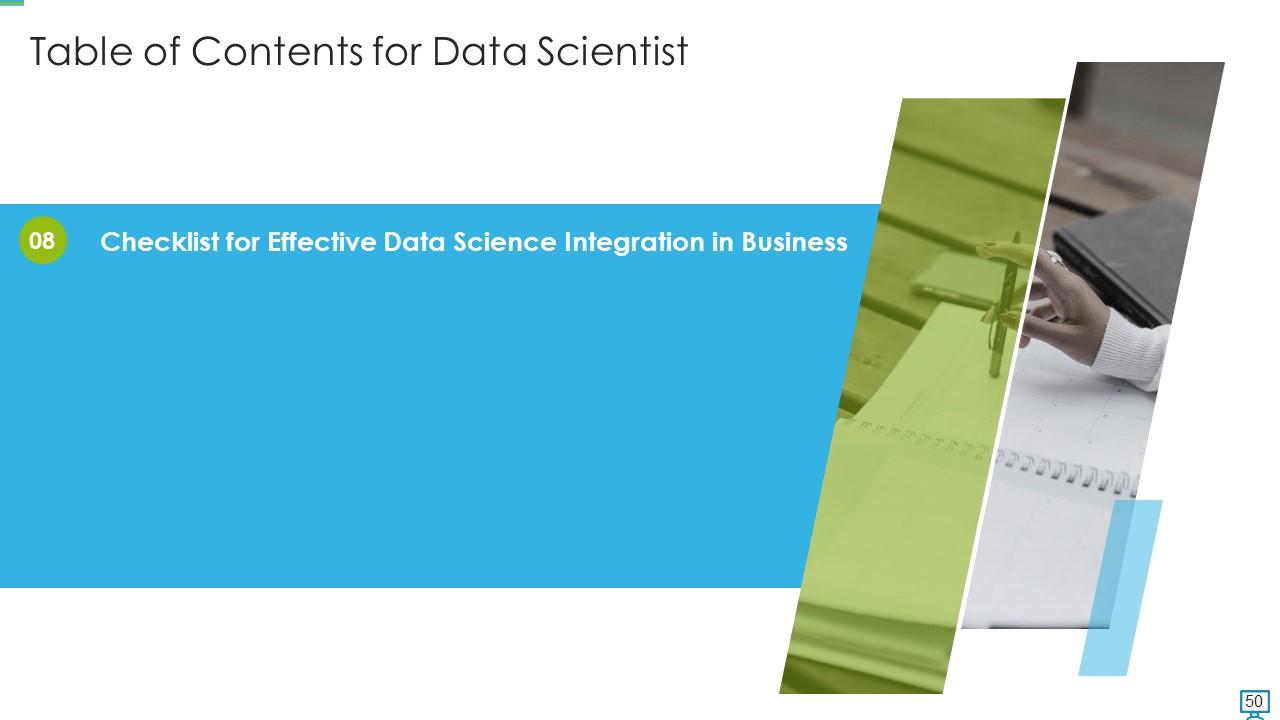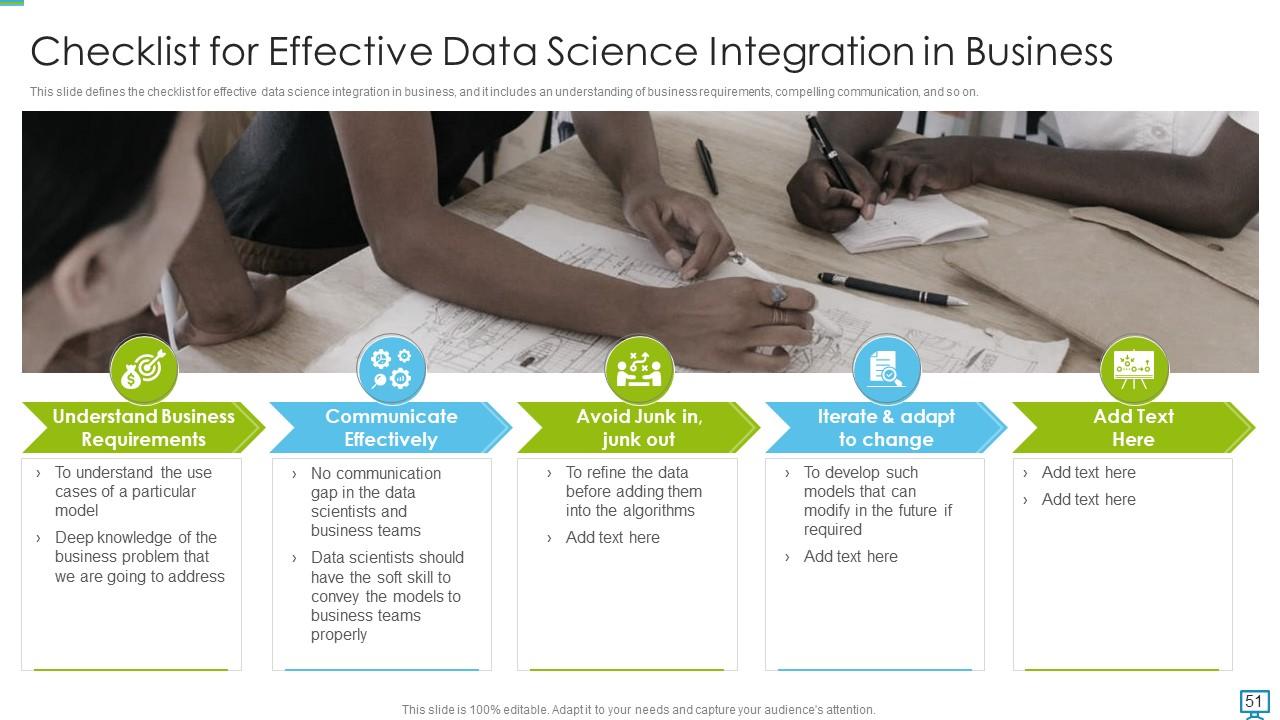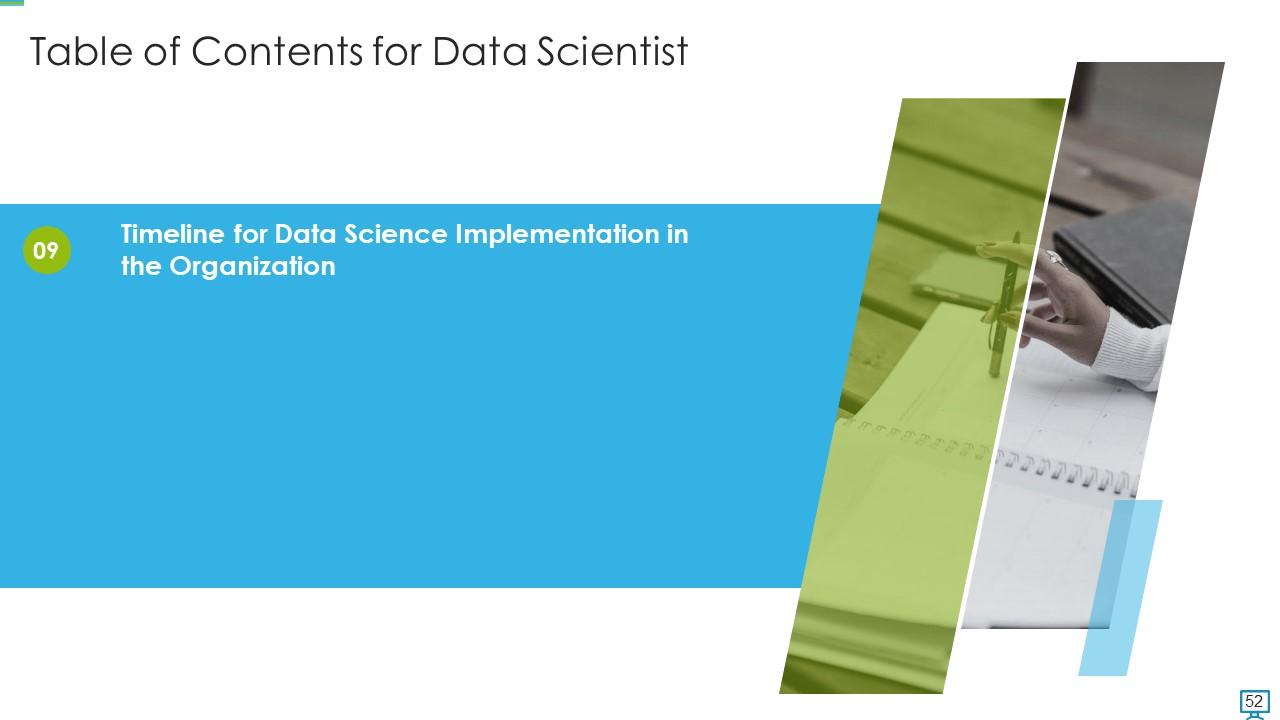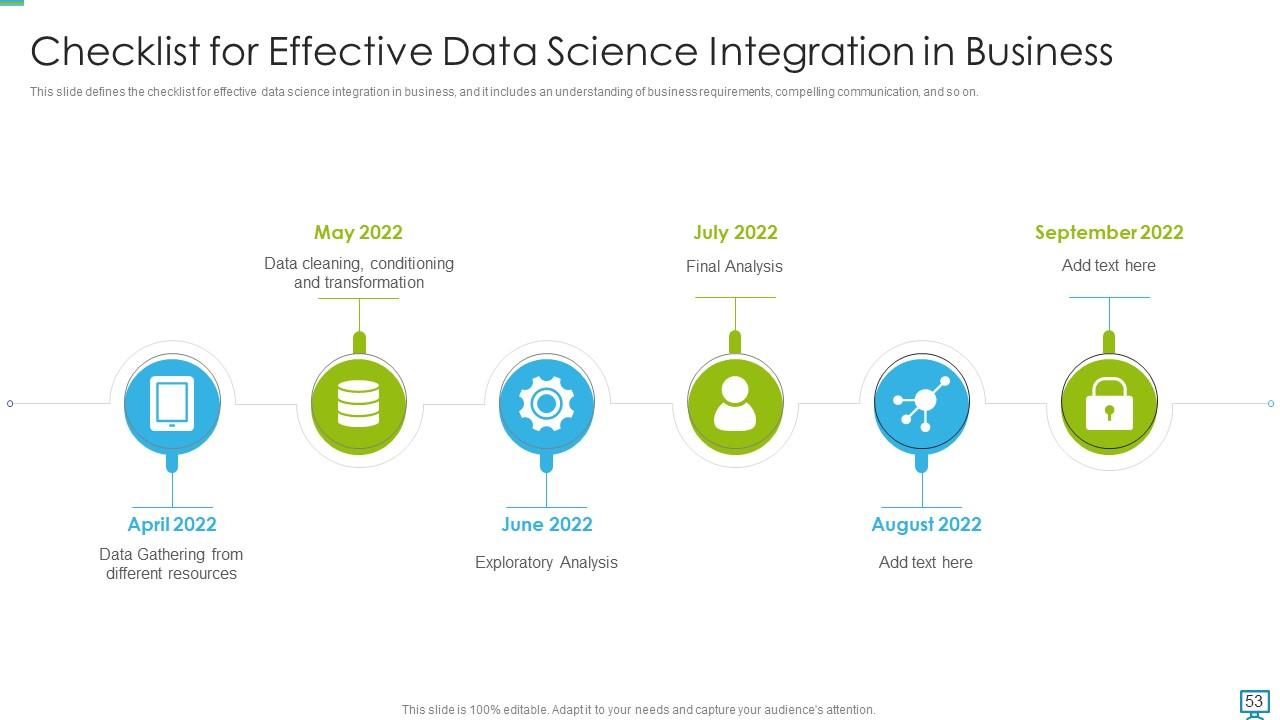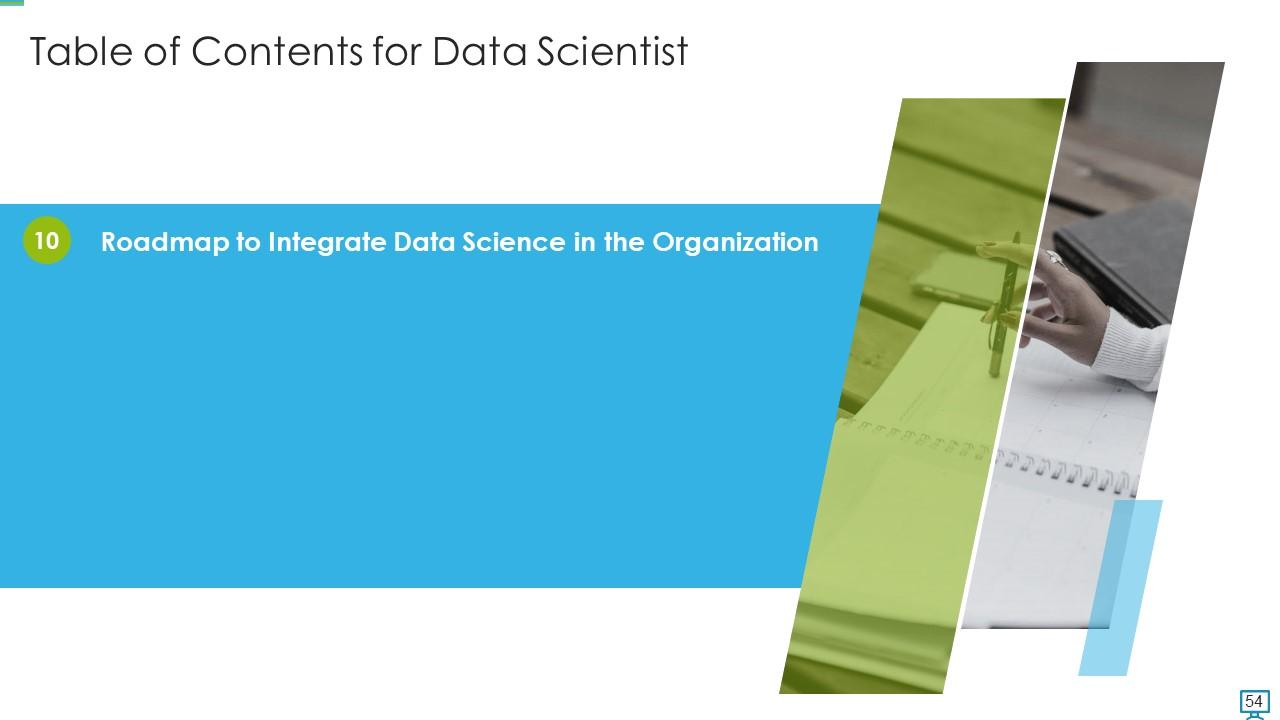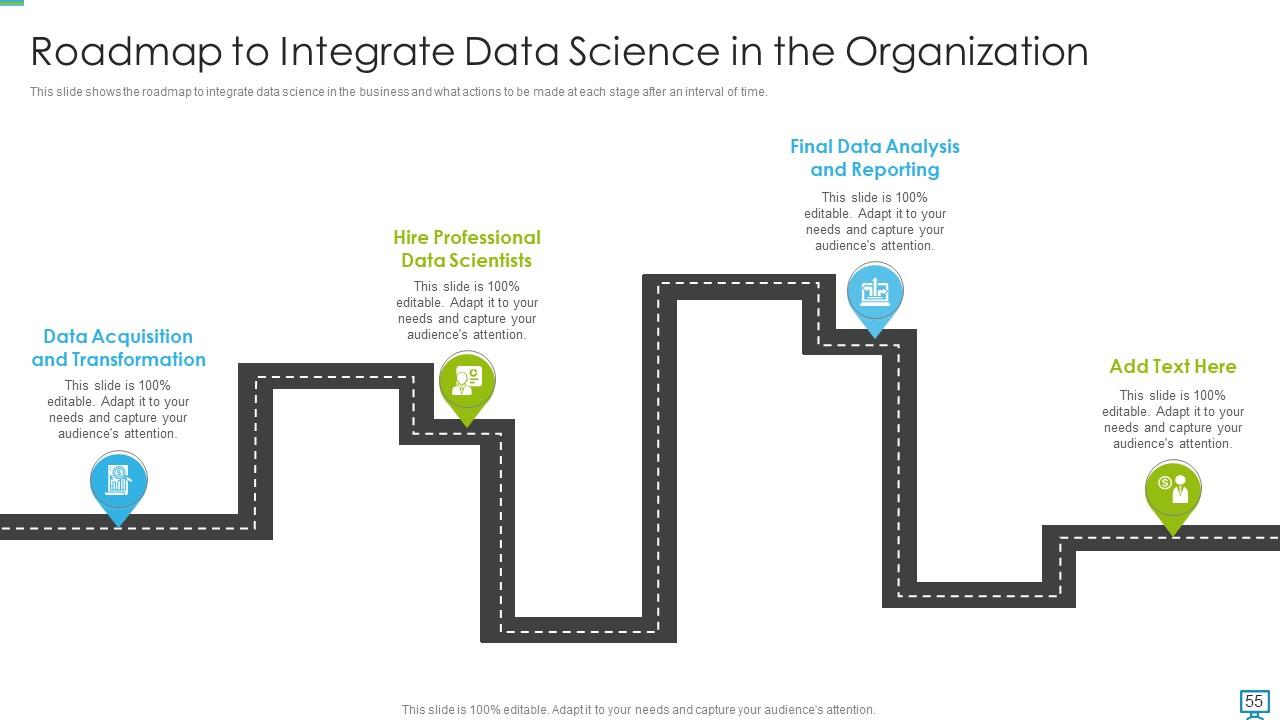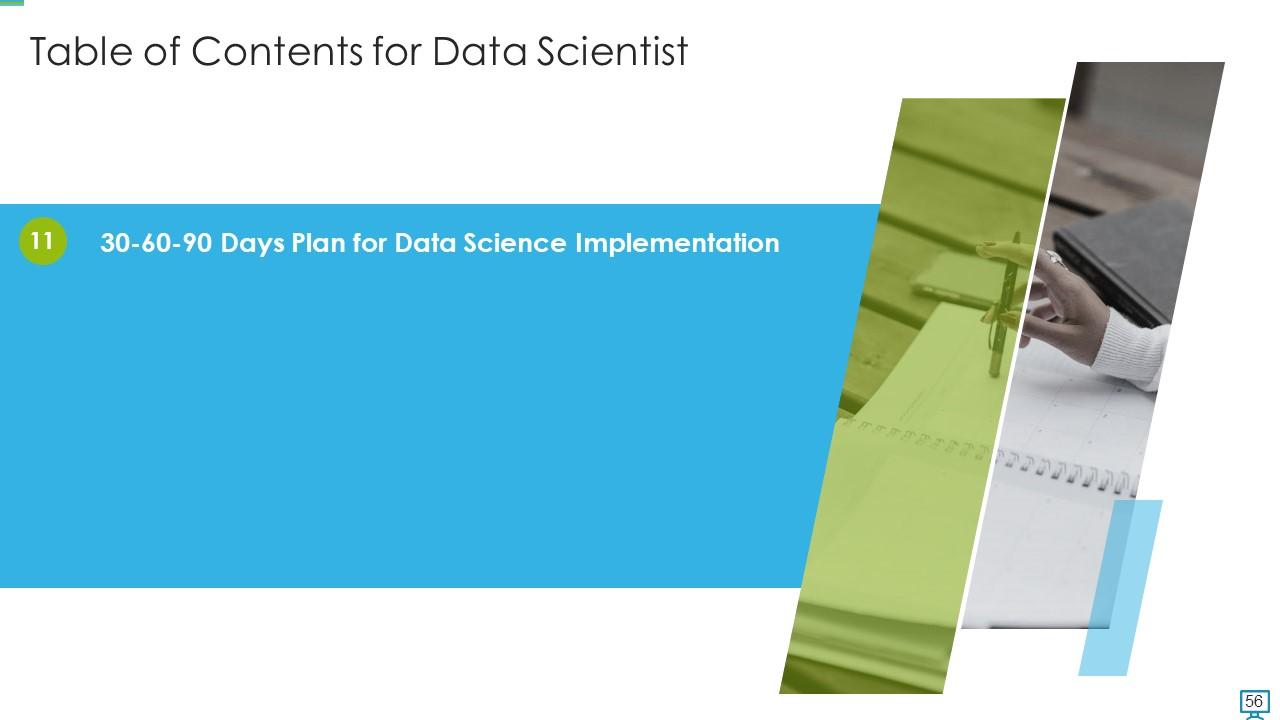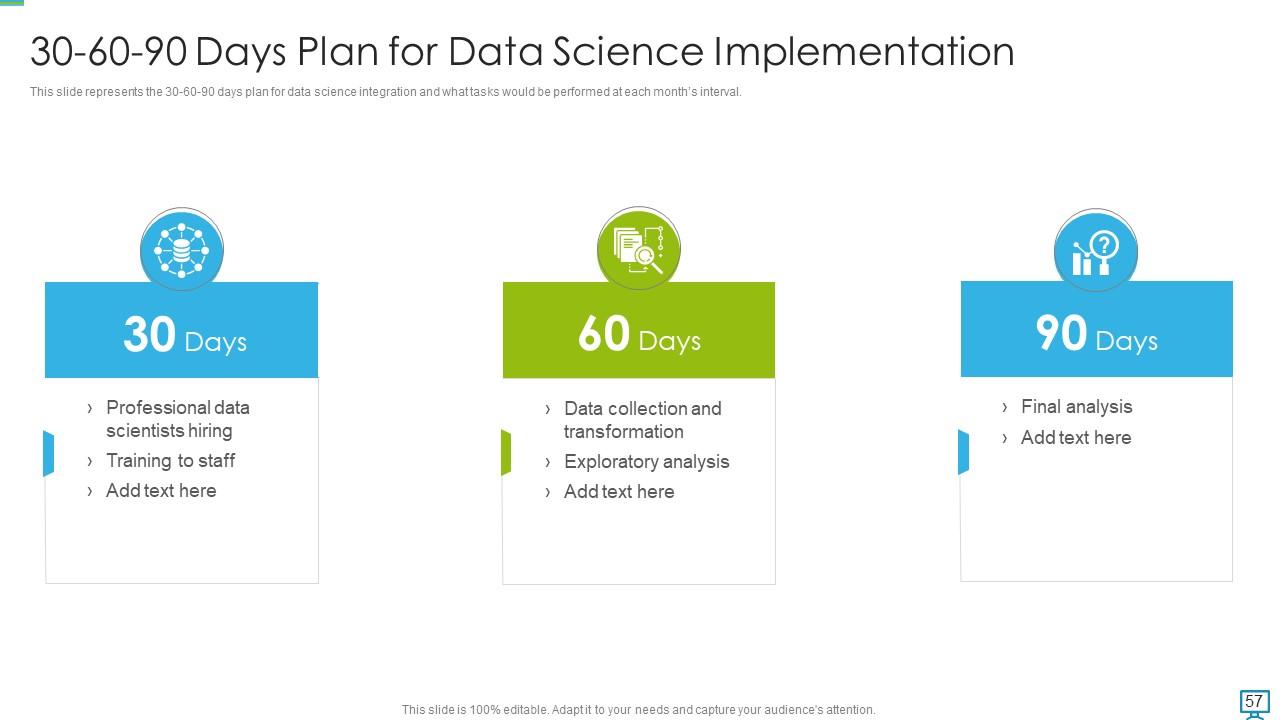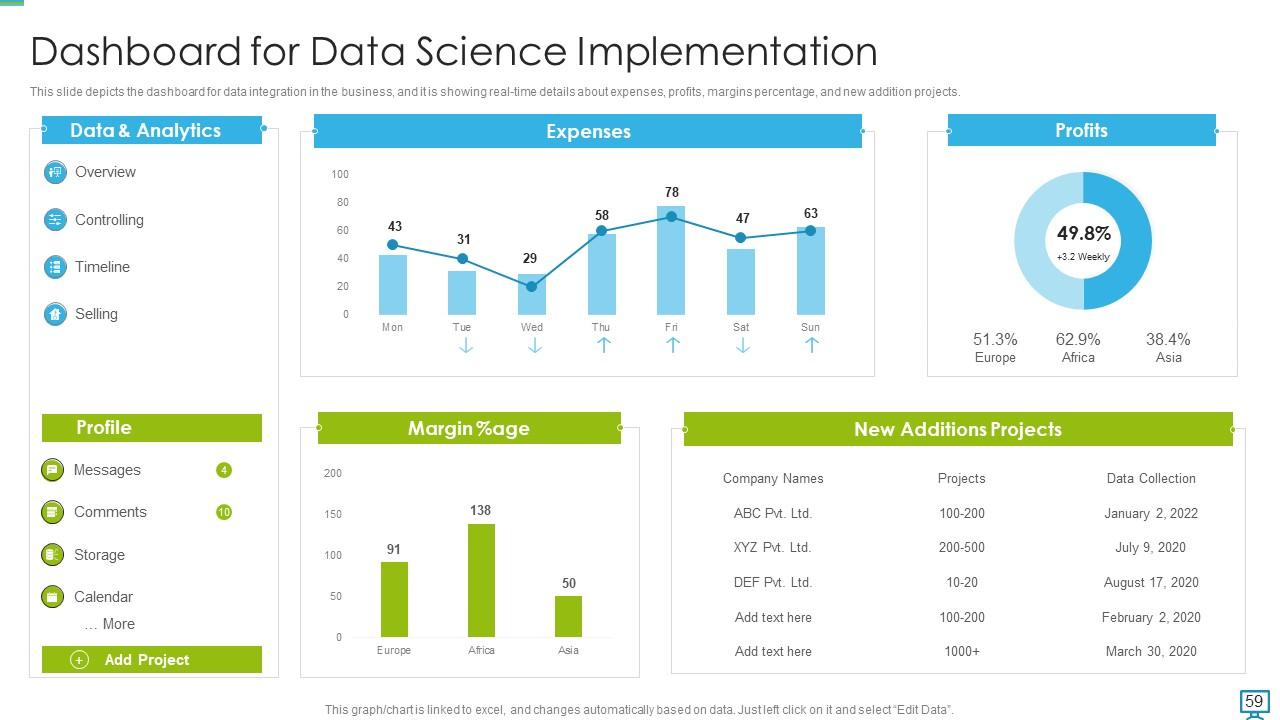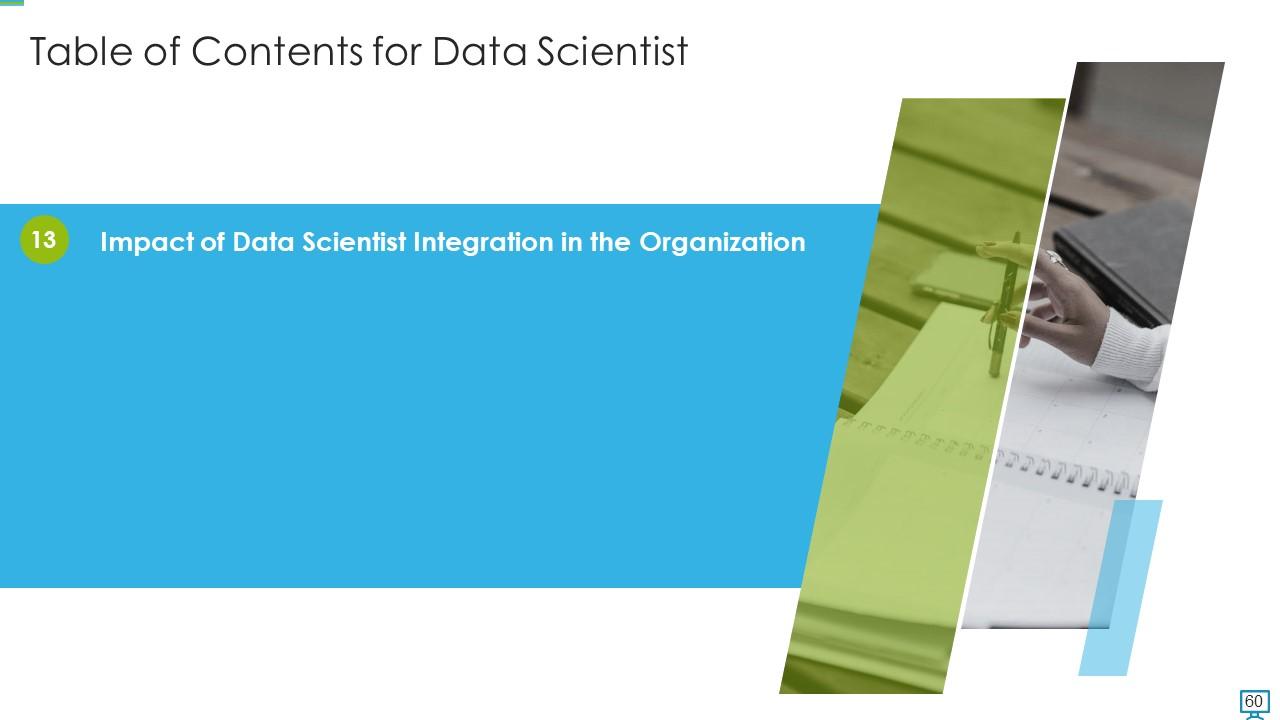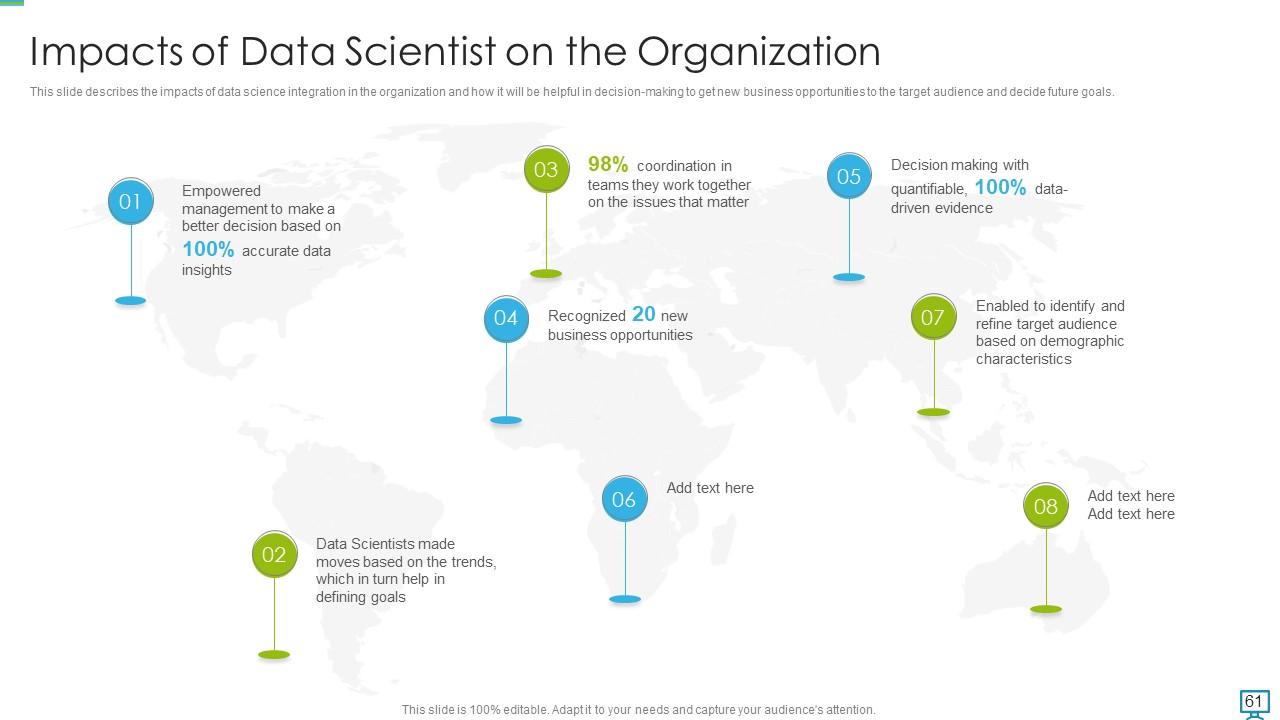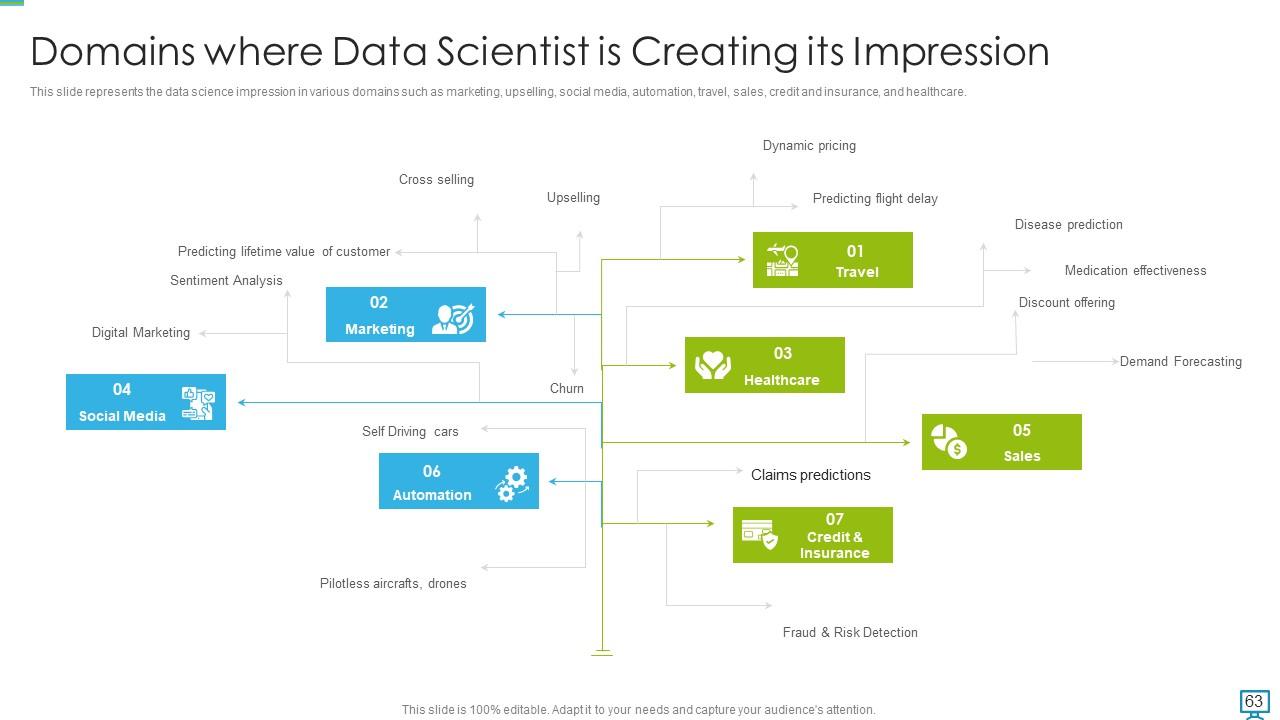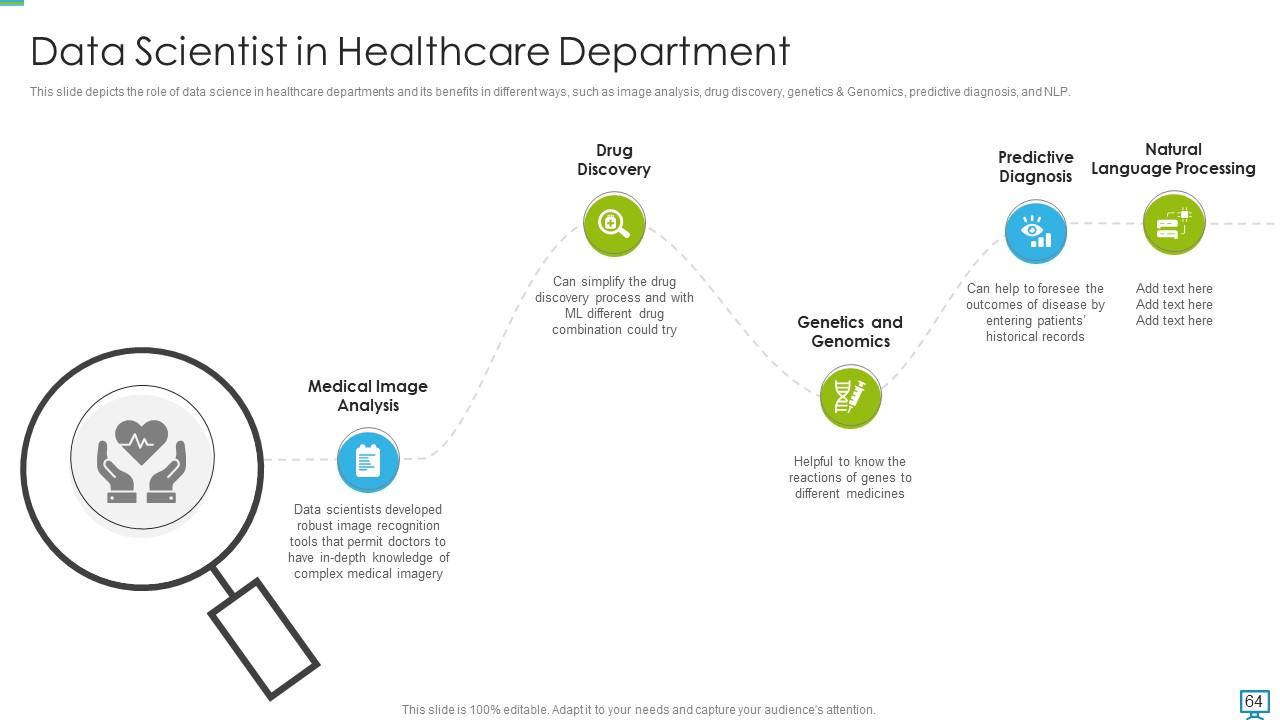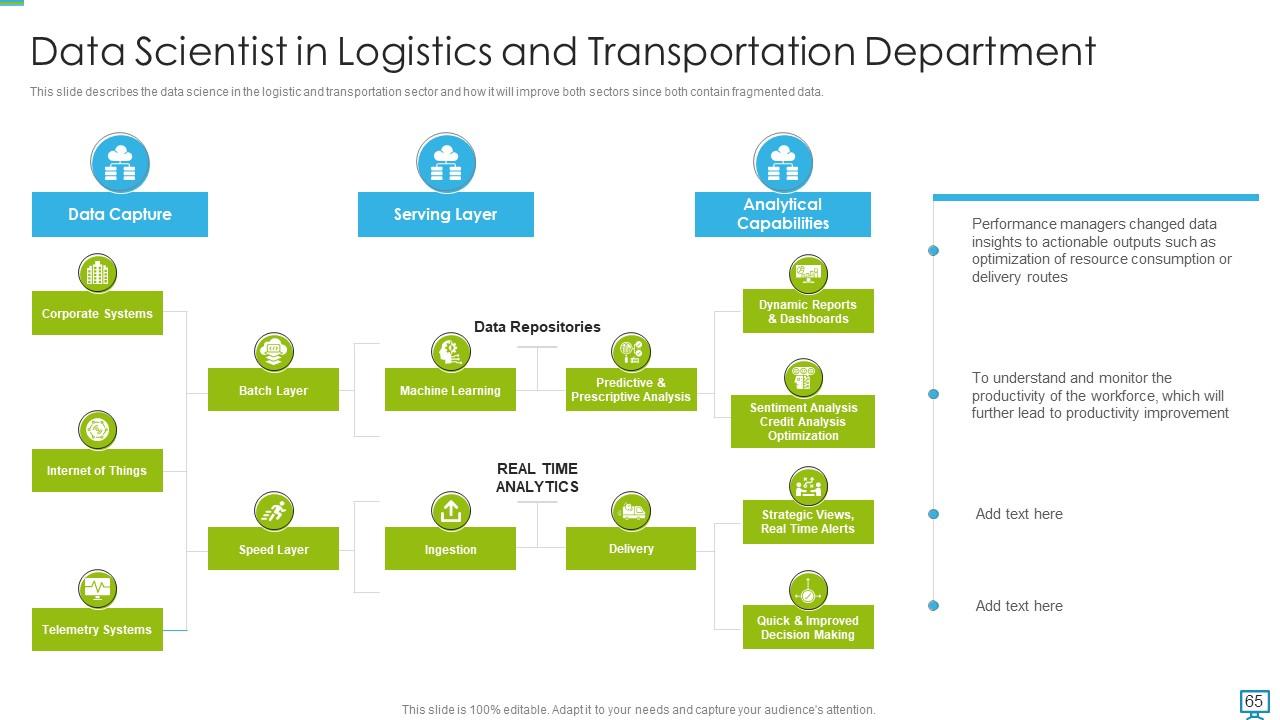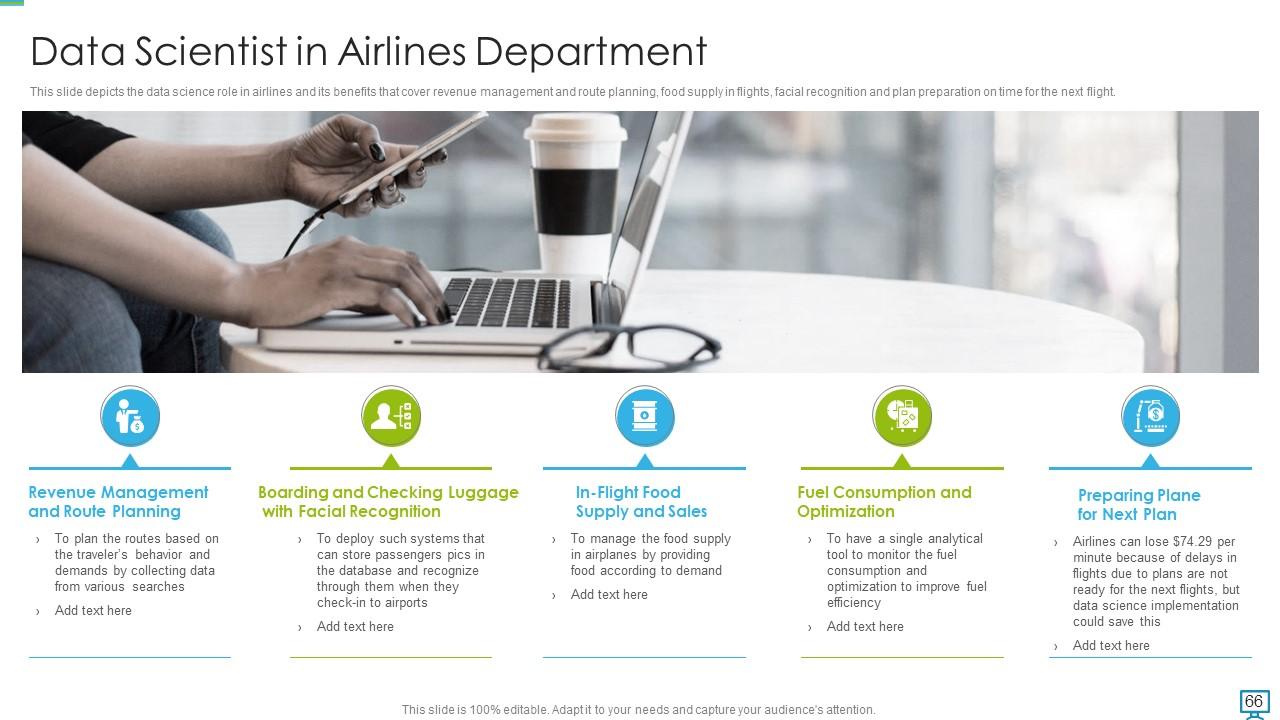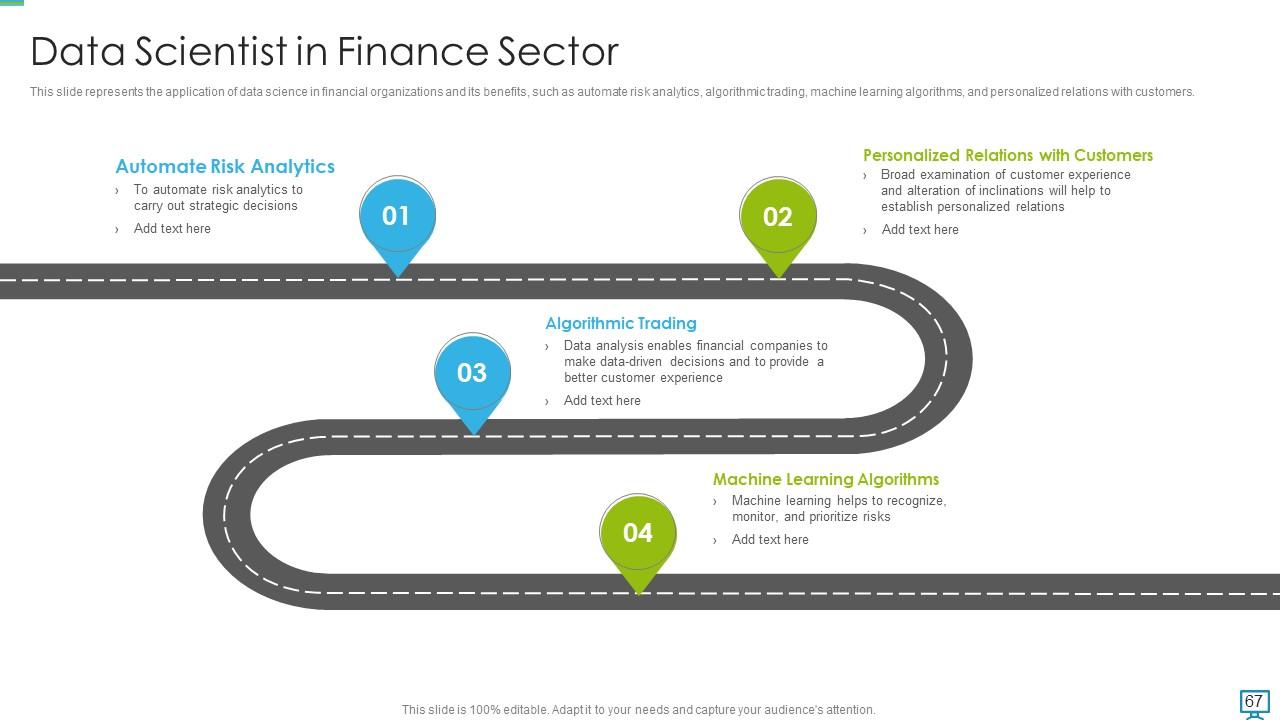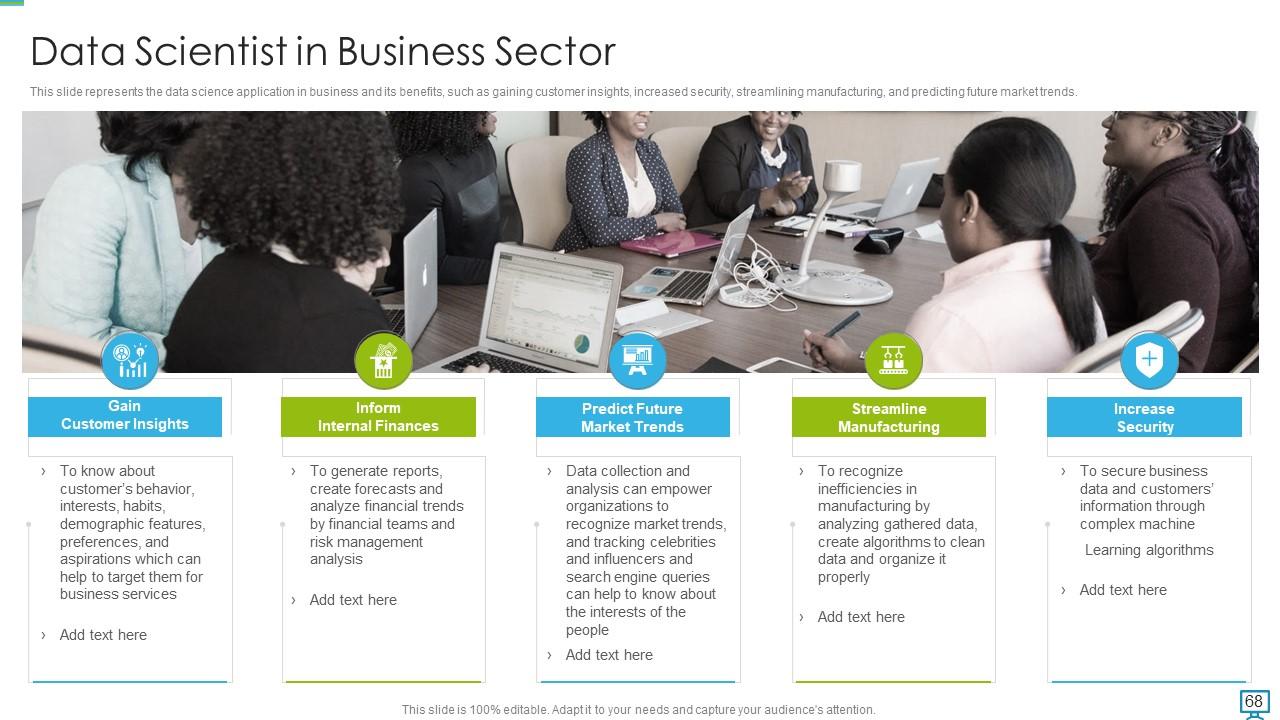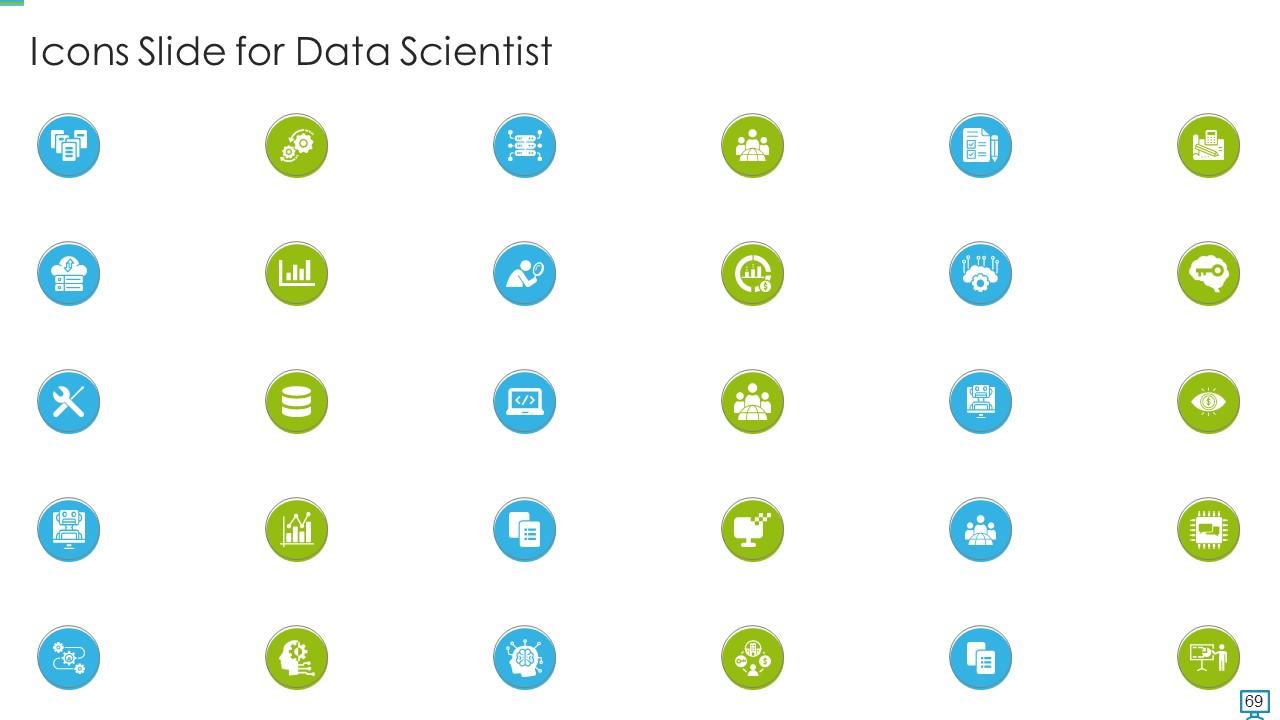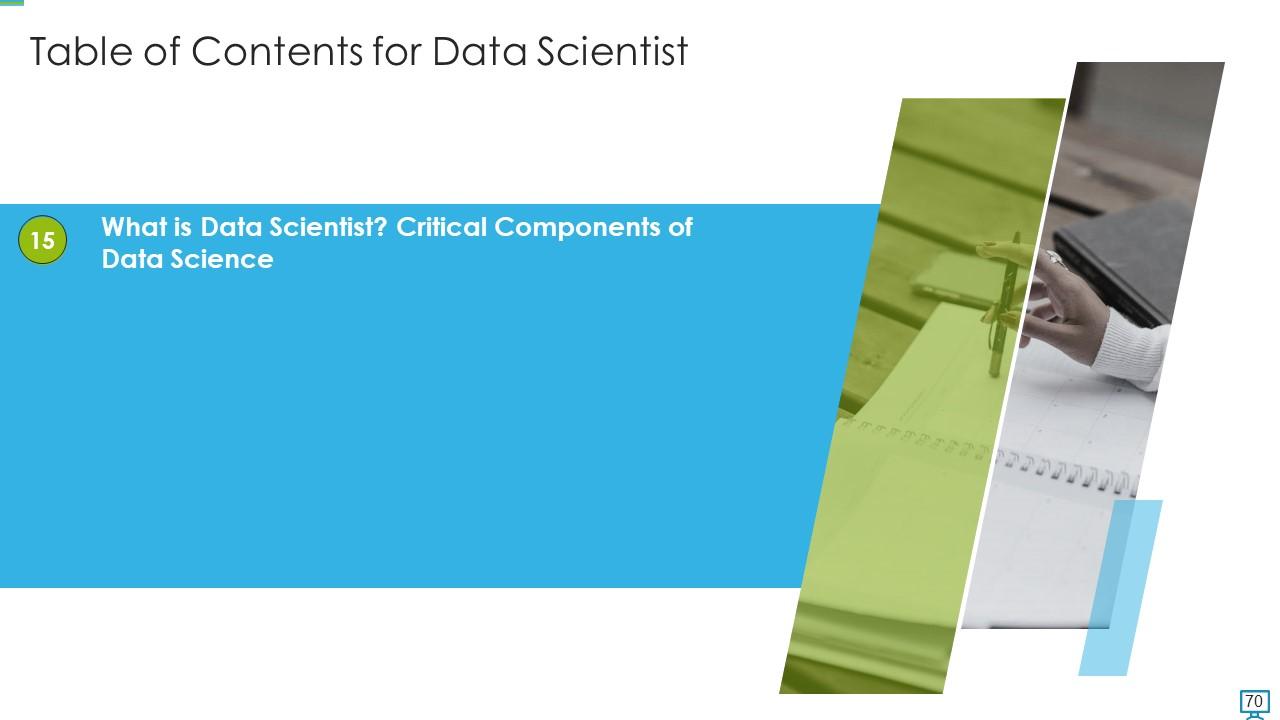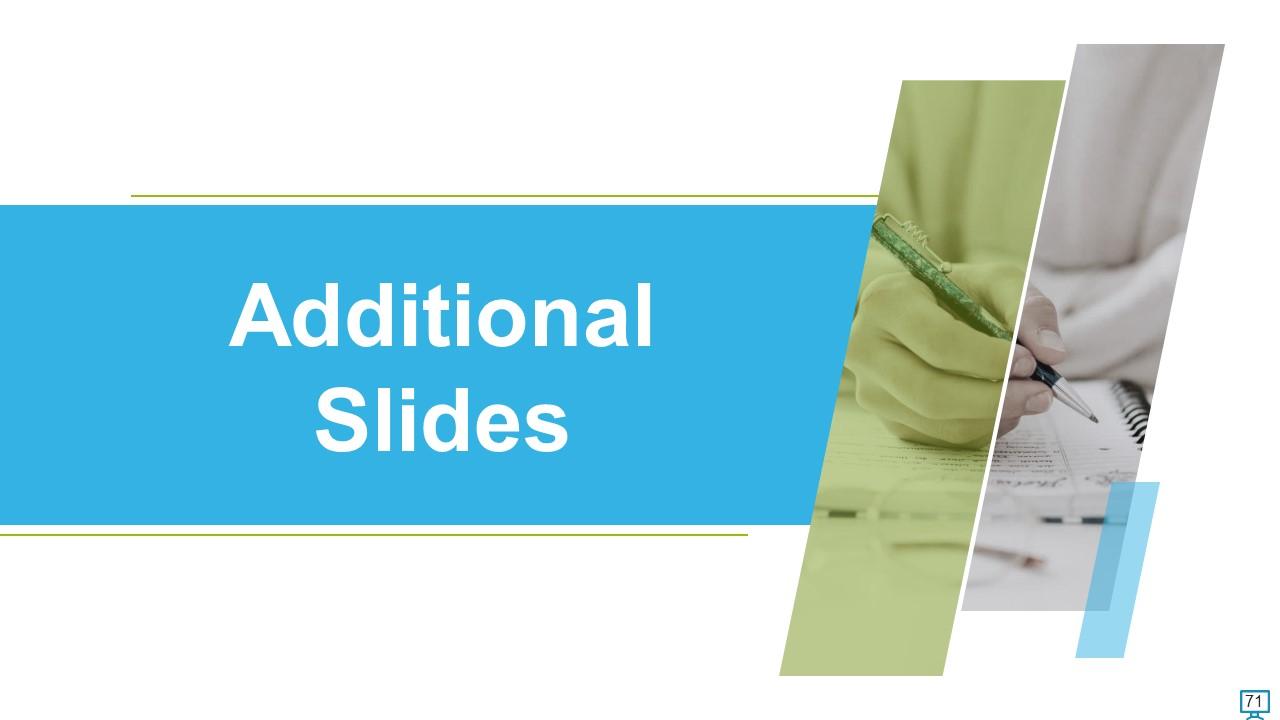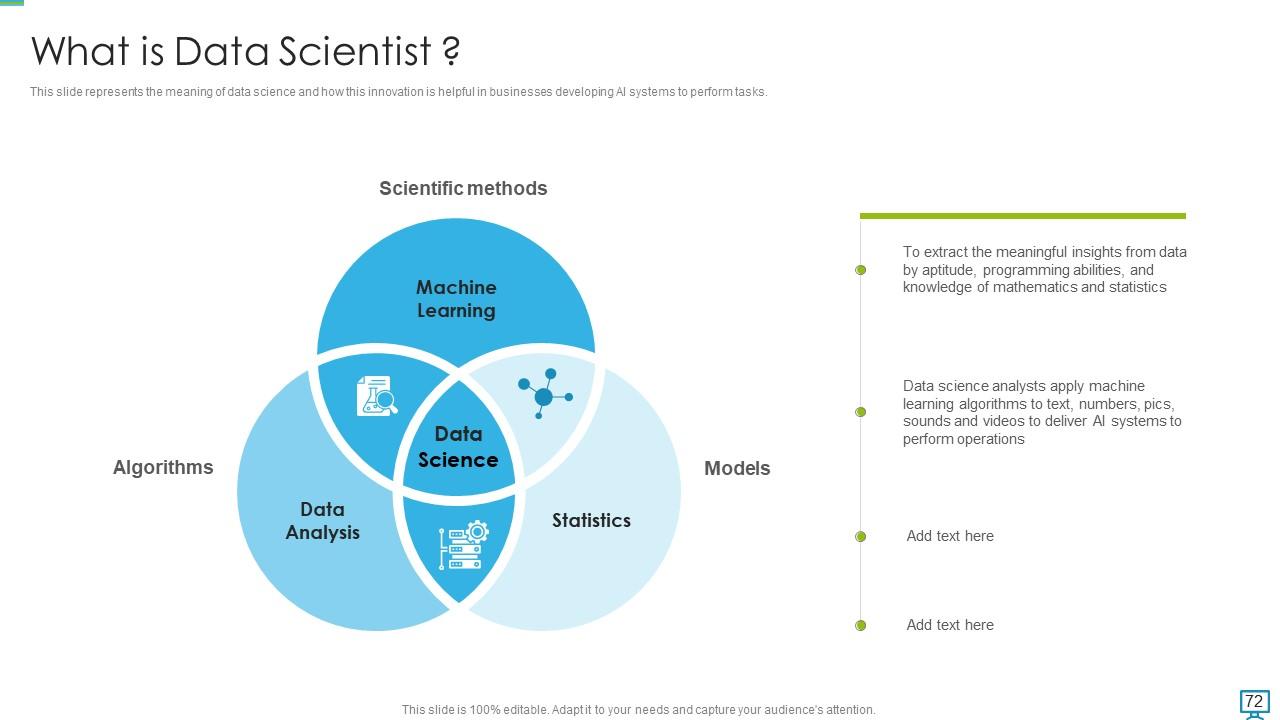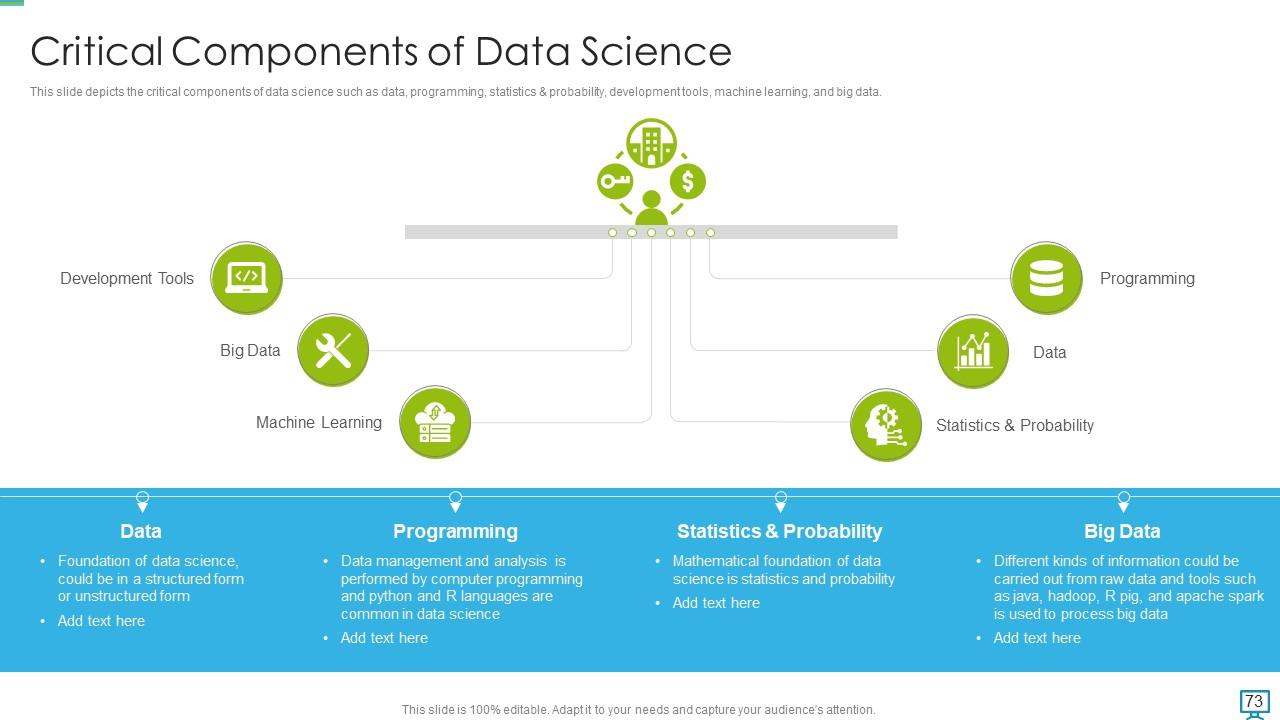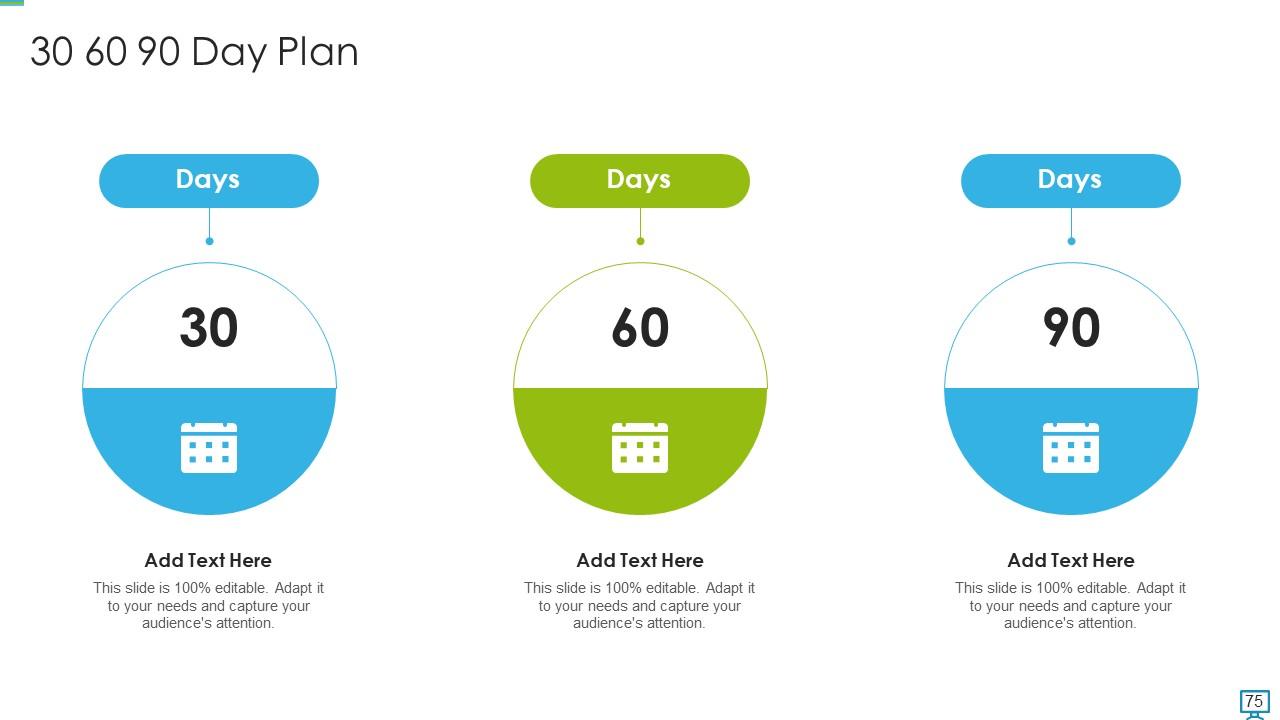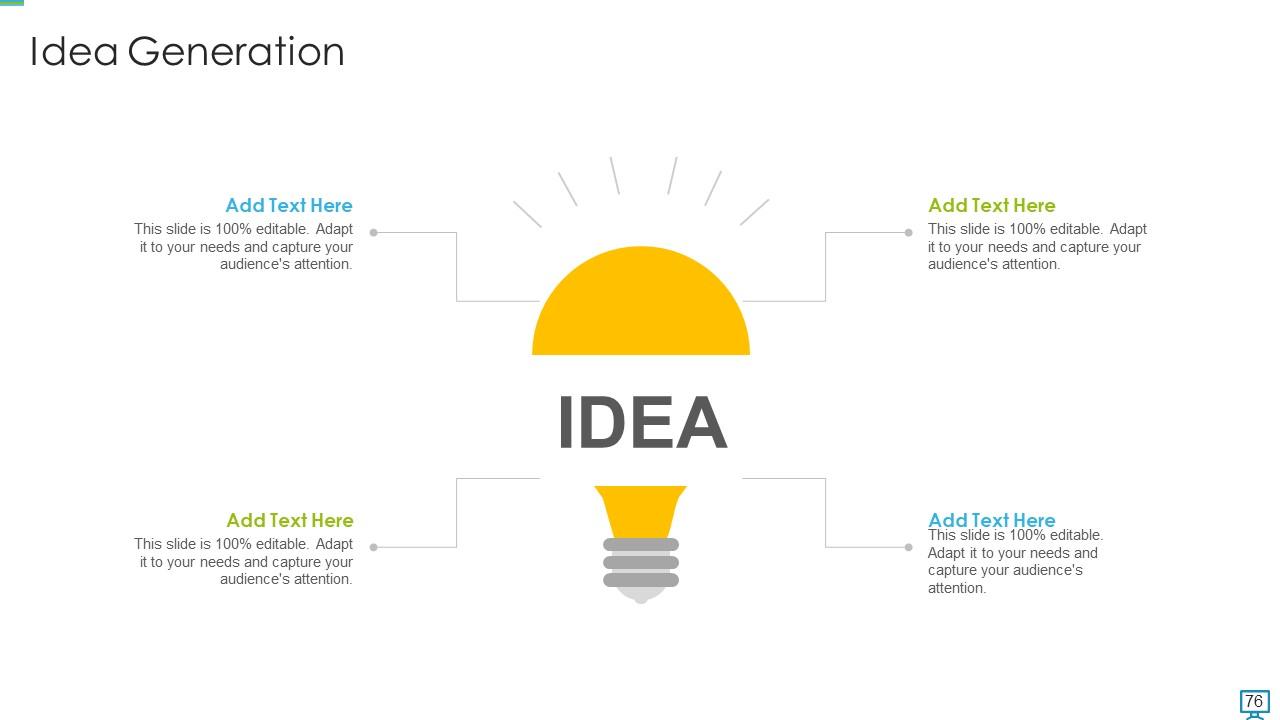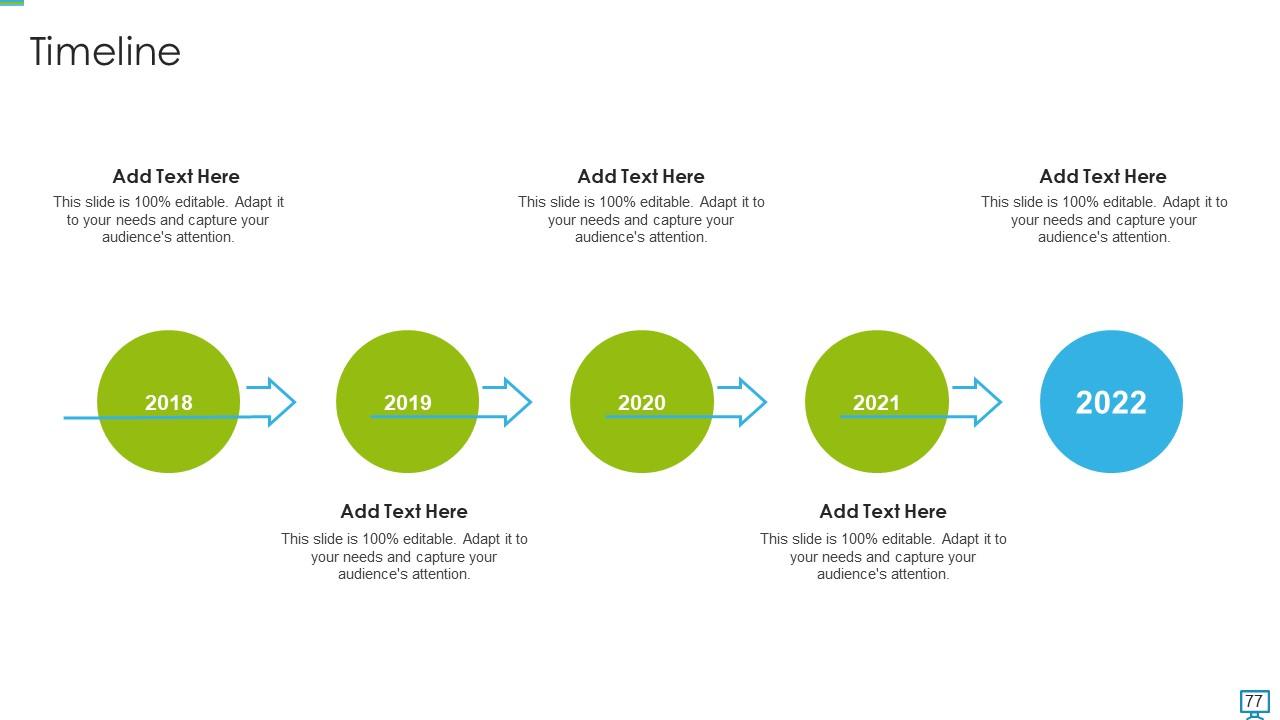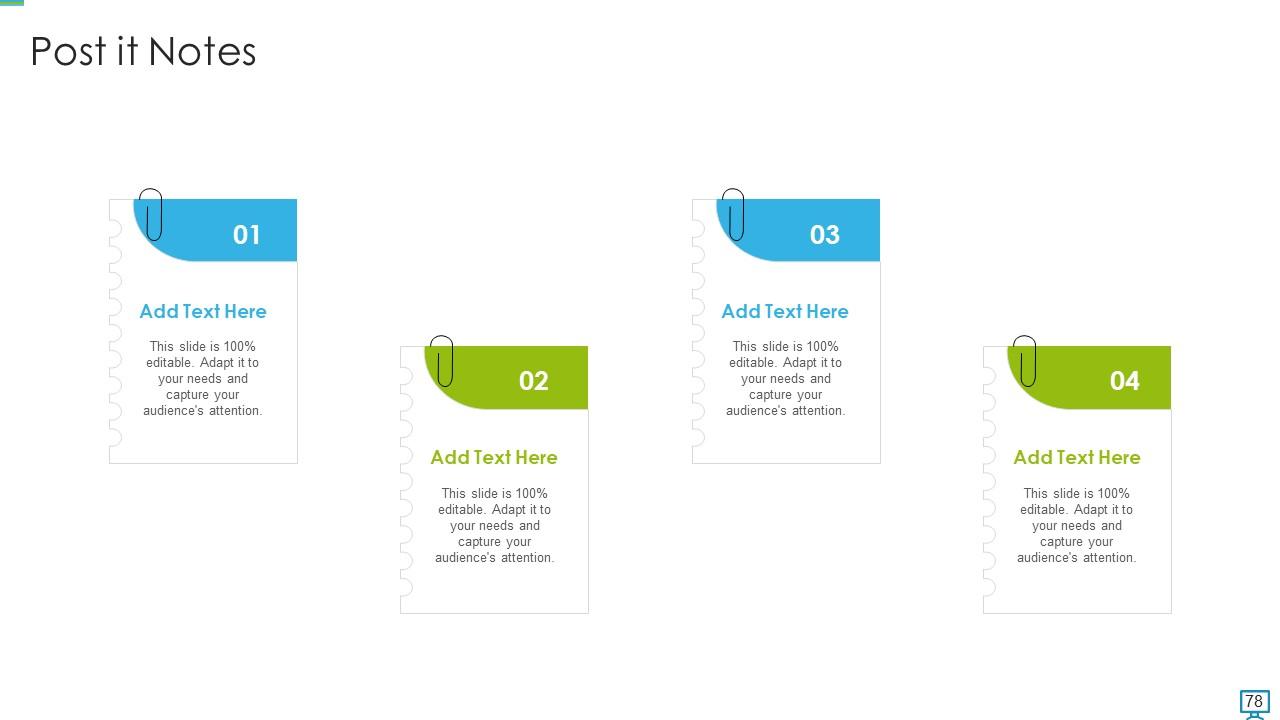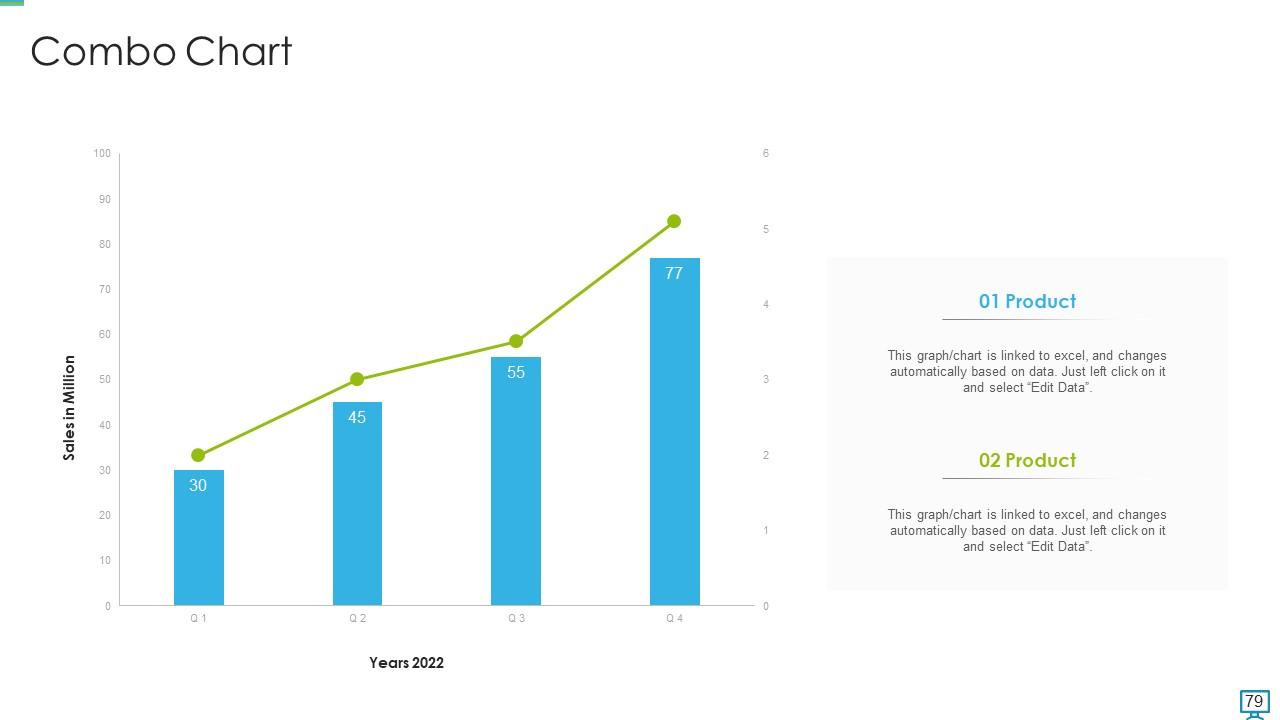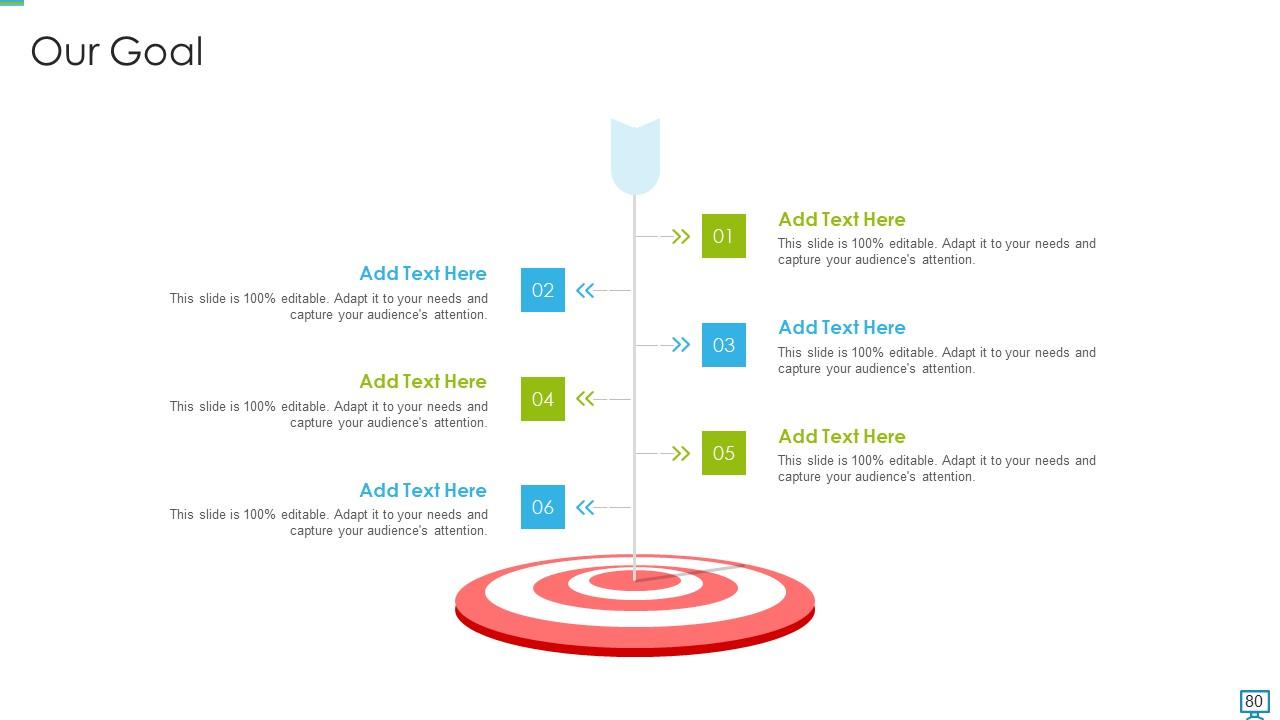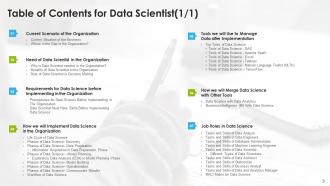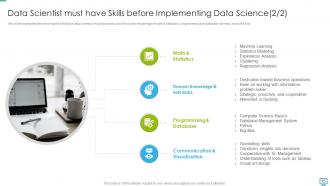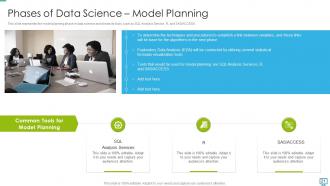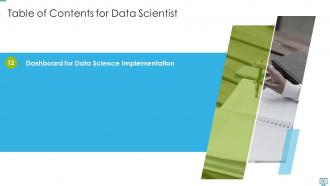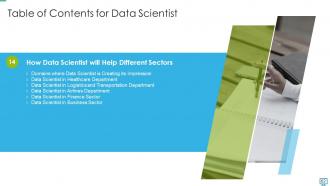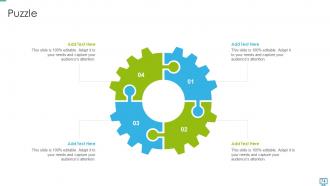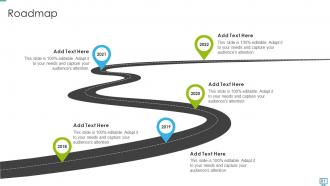Data scientist powerpoint presentation slides
Data science is an area of study that combines domain experience, computer abilities, and mathematical and statistical understanding to extract valuable insights from data. Here is an insightfully designed Data Scientist template that will greatly assist companies in presenting an overview of their current scenario and assessing the need for data science adoption. In addition, it contains information on the requirements of the data science adoption, life cycle and phases of data science, and critical components of the data science. Furthermore, this data scientist template includes the data science tools such as SAS, Apache Spark, Excel, Tableau, NLP, and TensorFlow, along with this role of data science in decision making. Moreover, this module highlights the difference between data science and other tools, data science workflow, job roles in data science, and top data science applications such as healthcare, logistic, finance, airlines, and business. Lastly, this template comprises a checklist, a timeline, a roadmap, a 30-60-90-day plan, a dashboard, and impacts of the data science integration on the organization. Customize this 100 percent editable template now.
Data science is an area of study that combines domain experience, computer abilities, and mathematical and statistical unde..
- Google Slides is a new FREE Presentation software from Google.
- All our content is 100% compatible with Google Slides.
- Just download our designs, and upload them to Google Slides and they will work automatically.
- Amaze your audience with SlideTeam and Google Slides.
-
Want Changes to This PPT Slide? Check out our Presentation Design Services
- WideScreen Aspect ratio is becoming a very popular format. When you download this product, the downloaded ZIP will contain this product in both standard and widescreen format.
-

- Some older products that we have may only be in standard format, but they can easily be converted to widescreen.
- To do this, please open the SlideTeam product in Powerpoint, and go to
- Design ( On the top bar) -> Page Setup -> and select "On-screen Show (16:9)” in the drop down for "Slides Sized for".
- The slide or theme will change to widescreen, and all graphics will adjust automatically. You can similarly convert our content to any other desired screen aspect ratio.
Compatible With Google Slides

Get This In WideScreen
You must be logged in to download this presentation.
PowerPoint presentation slides
This complete deck covers various topics and highlights important concepts. It has PPT slides which cater to your business needs. This complete deck presentation emphasizes Data Scientist Powerpoint Presentation Slides and has templates with professional background images and relevant content. This deck consists of total of eighty two slides. Our designers have created customizable templates, keeping your convenience in mind. You can edit the color, text and font size with ease. Not just this, you can also add or delete the content if needed. Get access to this fully editable complete presentation by clicking the download button below.
People who downloaded this PowerPoint presentation also viewed the following :
Content of this Powerpoint Presentation
Slide 1: This slide introduces Data Scientist. State Your Company Name and begin.
Slide 2: This is an Agenda slide. State your agendas here.
Slide 3: This slide presents Table of Content for the presentation.
Slide 4: This is another slide continuing Table of Content for the presentation.
Slide 5: This slide highlights title for topics that are to be covered next in the template.
Slide 6: This slide presents current situation of our business by displaying the ratio of unstructured and structured data stored in the database.
Slide 7: This slide shows how unstructured data is causing challenges and how data science will help provide solutions.
Slide 8: This slide displays Table of Content for the presentation.
Slide 9: This slide represents the need of the data science in the organization.
Slide 10: This slide shows Benefits of Data Science to the Organization.
Slide 11: This slide presents the role of data science in decision making, and it includes collection & acquisition, storage, cleaning of data, etc.
Slide 12: This slide shows Table of Content for the presentation.
Slide 13: This slide displays the prerequisites for data science that include knowledge of machine learning, modeling, statistic, database, and programming languages.
Slide 14: This slide represents Data Scientist Must Have Skills Before Implementing Data Science.
Slide 15: This is another slide showing Data Scientist must have Skills before Implementing Data Science.
Slide 16: This slide presents Table of Content for the presentation.
Slide 17: This slide describes the life cycle of data science, which includes the stages such as predefined business problems, information acquisition, etc.
Slide 18: This slide displays the first phase of data science that is understanding business problems and the facts that come under this phase.
Slide 19: This slide represents the data preparation phase of data science, including its various stages such as raw data, structure data, data preprocessing, EDA, etc.
Slide 20: This slide shows Information Acquisition in Data Preparation Phase.
Slide 21: This slide presents model planning phase in data science and shows its tools, such as SQL Analysis Service, R, and SAS/ACCESS.
Slide 22: This slide shows exploratory data analysis in the model planning phase of data science and its various stages and reasons.
Slide 23: This slide displays various tools that could help in data modeling such as SAS enterprise miner, SPCS modeler, MATLAB, etc.
Slide 24: This slide represents operational phase of data science and what tasks are performed in this phase.
Slide 25: This slide shows last phase of the data science and in this phase, all the key findings are communicated to stakeholders.
Slide 26: This slide presents how data scientists throughout the project manage data till completion.
Slide 27: This slide shows Table of Content for the presentation.
Slide 28: This slide displays top tools that are used in data science which include SAS, Apache Spark, Excel, etc.
Slide 29: This slide represents Statistical Analysis System used in data science for data management and modeling.
Slide 30: This slide shows Apache Spark tool used in data science and its features such as speed, reusability, advanced analytics, etc.
Slide 31: This slide presents excel tool used in data science and its usage along with its features.
Slide 32: This slide shows tool used in data science and its features such as licensing views, subscription of others, etc.
Slide 33: This slide displays Tools for Data Science- Natural Language Toolkit (NLTK).
Slide 34: This slide represents TensorFlow tool used in Data Science, and its features include flexibility, columns, visualizer, etc.
Slide 35: This slide shows Table of Content for the presentation.
Slide 36: This slide presents difference between data science and data analytics based on skillset, scope, exploration and goals.
Slide 37: This slide shows difference between Business Intelligence and Data Science based on the factors such as concept, scope, data, etc.
Slide 38: This slide displays Table of Content for the presentation.
Slide 39: This slide represents tasks performed by the business analyst and how he will be helpful to improve business operations.
Slide 40: This slide shows data engineers’ responsibilities and skills that they should possess.
Slide 41: This slide presents tasks performed by a Database Administrator and skills that he should possess.
Slide 42: This slide shows machine learning engineer’s tasks and skills, including a deep knowledge of machine learning, ML algorithms, and Python and C++.
Slide 43: This slide displays the tasks performed by data scientists in data science and their skills.
Slide 44: This slide represents the different types of data scientists, including vertical experts, stat DS managers, generalists, etc.
Slide 45: This slide shows data architect’s tasks in data science projects and their skills.
Slide 46: This slide presents tasks performed by a statistician in data science and his skills such as data mining, distributive computing, etc.
Slide 47: This slide shows tasks performed by the business analyst and how he will be helpful to improve business operations.
Slide 48: This slide displays tasks performed by a data and analytics manager and skills he should have.
Slide 49: This slide represents RACI matrix for data science and tasks performed by data analysts, data engineers, data scientists, etc.
Slide 50: This slide shows Table of Content highlighting Checklist for Effective Data Science Integration in Business.
Slide 51: This slide presents Checklist for Effective Data Science Integration in Business.
Slide 52: This slide shows Table of Content highlighting Timeline for Data Science Implementation in the Organization.
Slide 53: This slide displays Table of Content highlighting Timeline for Data Science Implementation in the Organization.
Slide 54: This slide represents Table of Content highlighting Roadmap to Integrate Data Science in the Organization.
Slide 55: This slide shows Roadmap to Integrate Data Science in the Organization.
Slide 56: This slide presents Table of Content highlighting 30-60-90 Days Plan for Data Science Implementation.
Slide 57: This slide shows 30-60-90 Days Plan for Data Science Implementation.
Slide 58: This slide displays Dashboard for Data Science Implementation.
Slide 59: This slide represents dashboard for data integration in the business, and it is showing real-time details about expenses, profits, margins percentage, etc.
Slide 60: This slide shows Table of Content highlighting Impacts of Data Science Integration in the Organization.
Slide 61: This slide presents Impacts of Data Science Integration in the Organization.
Slide 62: This slide shows Table of Content for the presentation.
Slide 63: This slide displays Domains where Data Science is Creating its Impression.
Slide 64: This slide represents data science in healthcare departments and its benefits in different ways.
Slide 65: This slide shows Data Science in Logistics and Transportation Department.
Slide 66: This slide presents data science role in airlines and its benefits that cover revenue management and route planning.
Slide 67: This slide shows application of data science in financial organizations and its benefits.
Slide 68: This slide displays the data science application in business and its benefits.
Slide 69: This slide displays Icons for Data Scientist.
Slide 70: This slide highlights title for topics that are to be covered next in the template.
Slide 71: This slide is titled as Additional Slides for moving forward.
Slide 72: This slide represents the meaning of data science and how this innovation is helpful in businesses developing AI systems.
Slide 73: This slide depicts the critical components of data science such as data, programming, statistics, etc.
Slide 74: This slide contains Puzzle with related icons and text.
Slide 75: This slide provides 30 60 90 Days Plan with text boxes.
Slide 76: This is an Idea Generation slide to state a new idea or highlight information, specifications etc.
Slide 77: This is a Timeline slide. Show data related to time intervals here.
Slide 78: This slide shows Post It Notes. Post your important notes here.
Slide 79: This slide describes Combo chart with two products comparison.
Slide 80: This is Our Goal slide. State your firm's goals here.
Slide 81: This slide presents Roadmap with additional textboxes.
Slide 82: This is a Thank You slide with address, contact numbers and email address.
Data scientist powerpoint presentation slides with all 87 slides:
Use our Data Scientist Powerpoint Presentation Slides to effectively help you save your valuable time. They are readymade to fit into any presentation structure.
FAQs
Data science plays a crucial role in decision-making as it involves collecting and acquiring data, storing and cleaning it, and using various tools and techniques to analyze it. The insights derived from data can help organizations make informed decisions and gain a competitive advantage in their respective markets.
The prerequisites for data science include a strong knowledge of machine learning, modelling, statistics, database management, and programming languages. Having expertise in these areas can help individuals excel in data science and make meaningful contributions to their organizations.
The data science life cycle consists of several phases, including understanding business problems, information acquisition, data preparation, model planning, operationalization, and communication. Each phase has its own set of tasks and goals that are essential for successful data science projects.
Some of the top tools used in data science include SAS, Apache Spark, Excel, TensorFlow, and Natural Language Toolkit (NLTK). These tools offer a range of features, such as data management, modelling, visualization, and advanced analytics.
While data science and data analytics share some similarities, they differ in terms of their scope, skillset, exploration, and goals. Data science is more focused on developing predictive models and algorithms to solve complex business problems, whereas data analytics involves extracting insights from data to inform decision-making.
-
Excellent template with unique design.
-
Excellent work done on template design and graphics.


